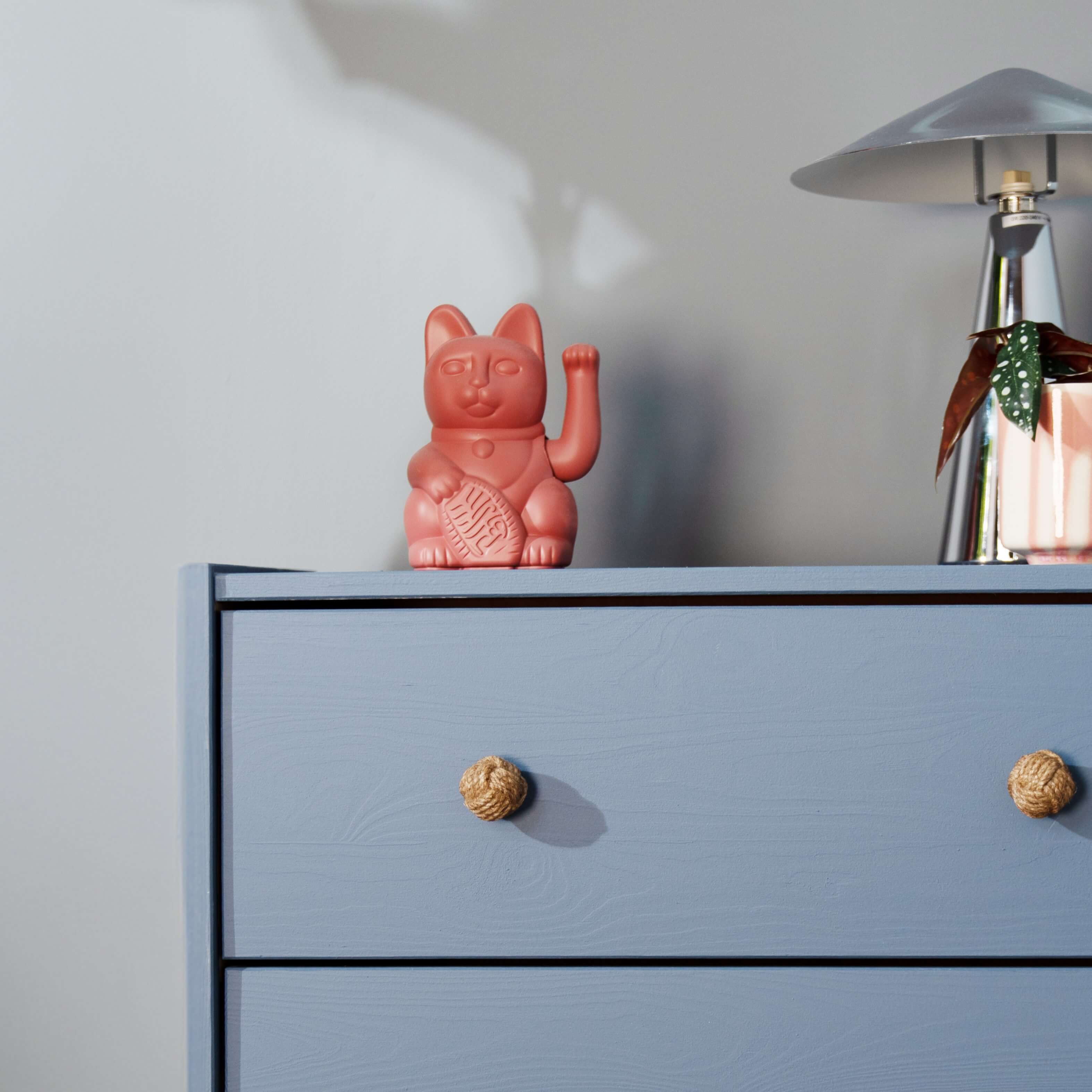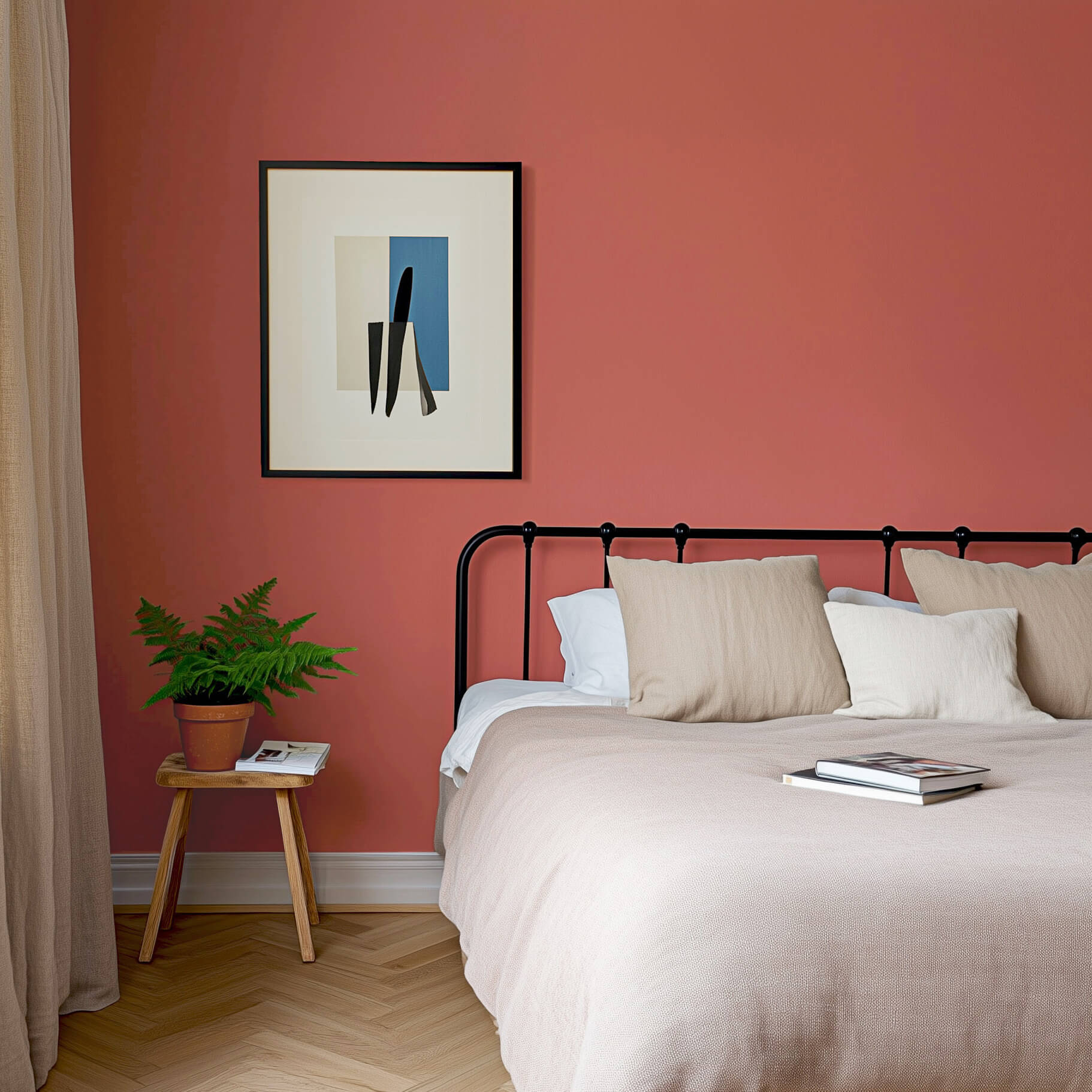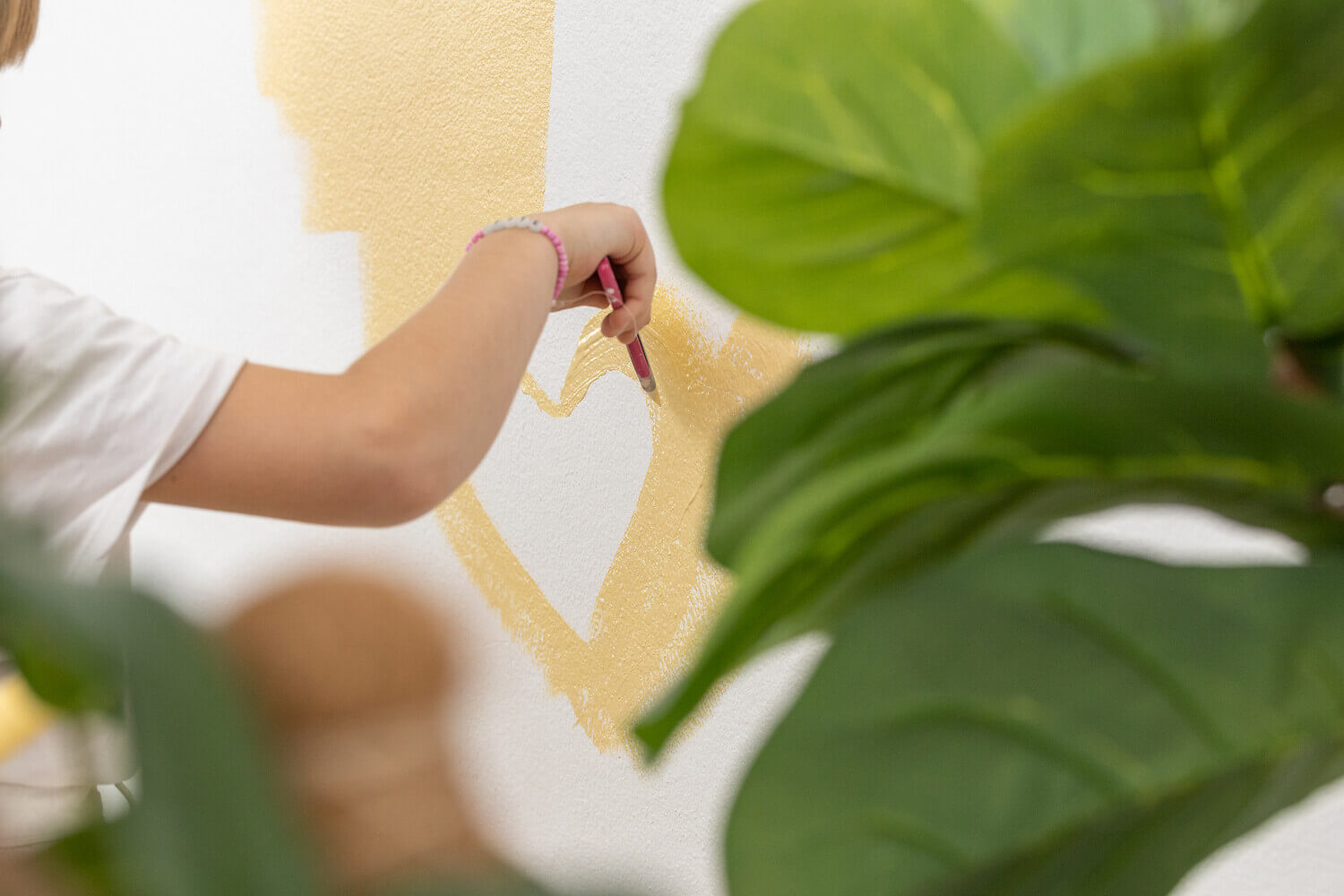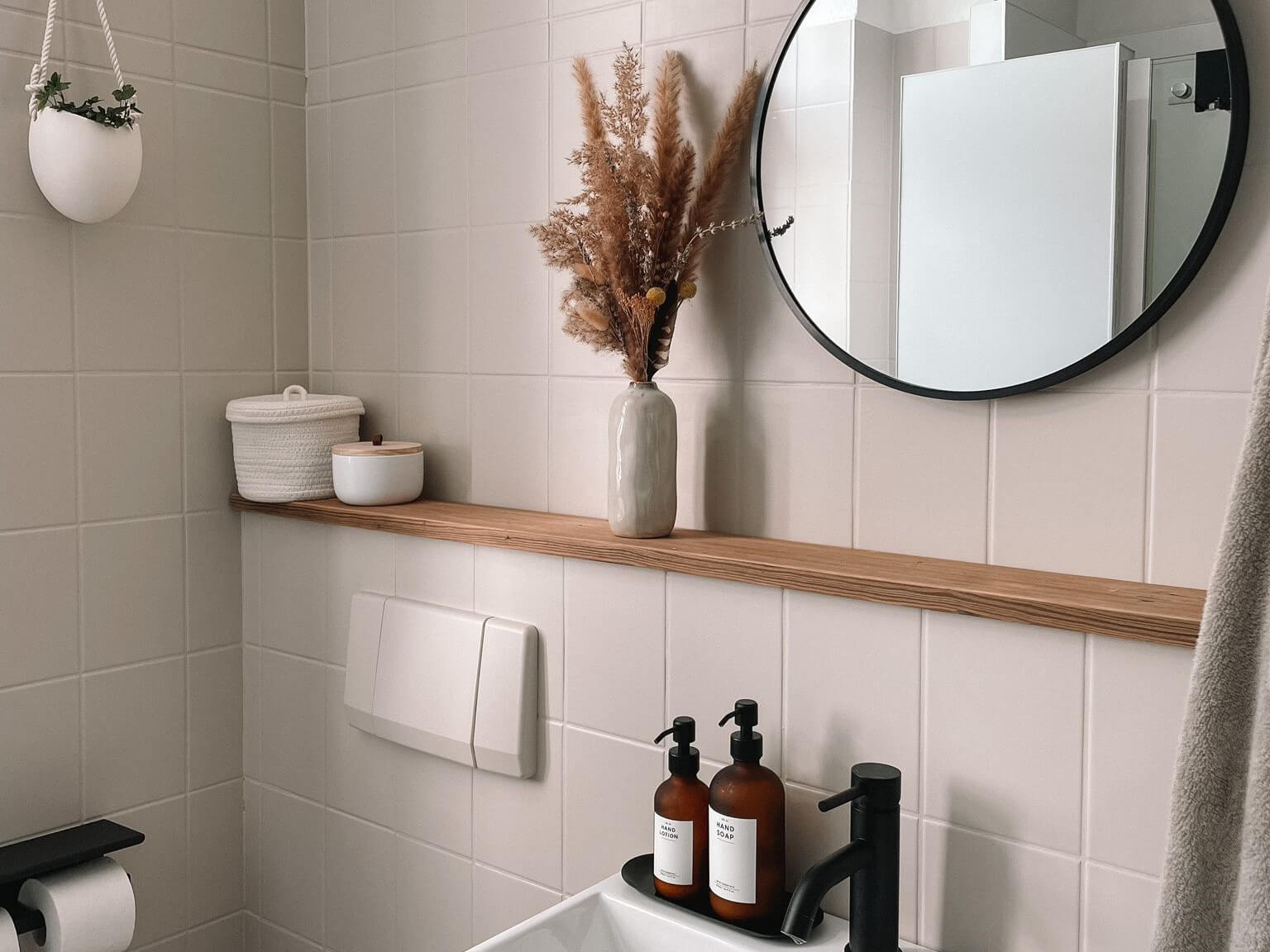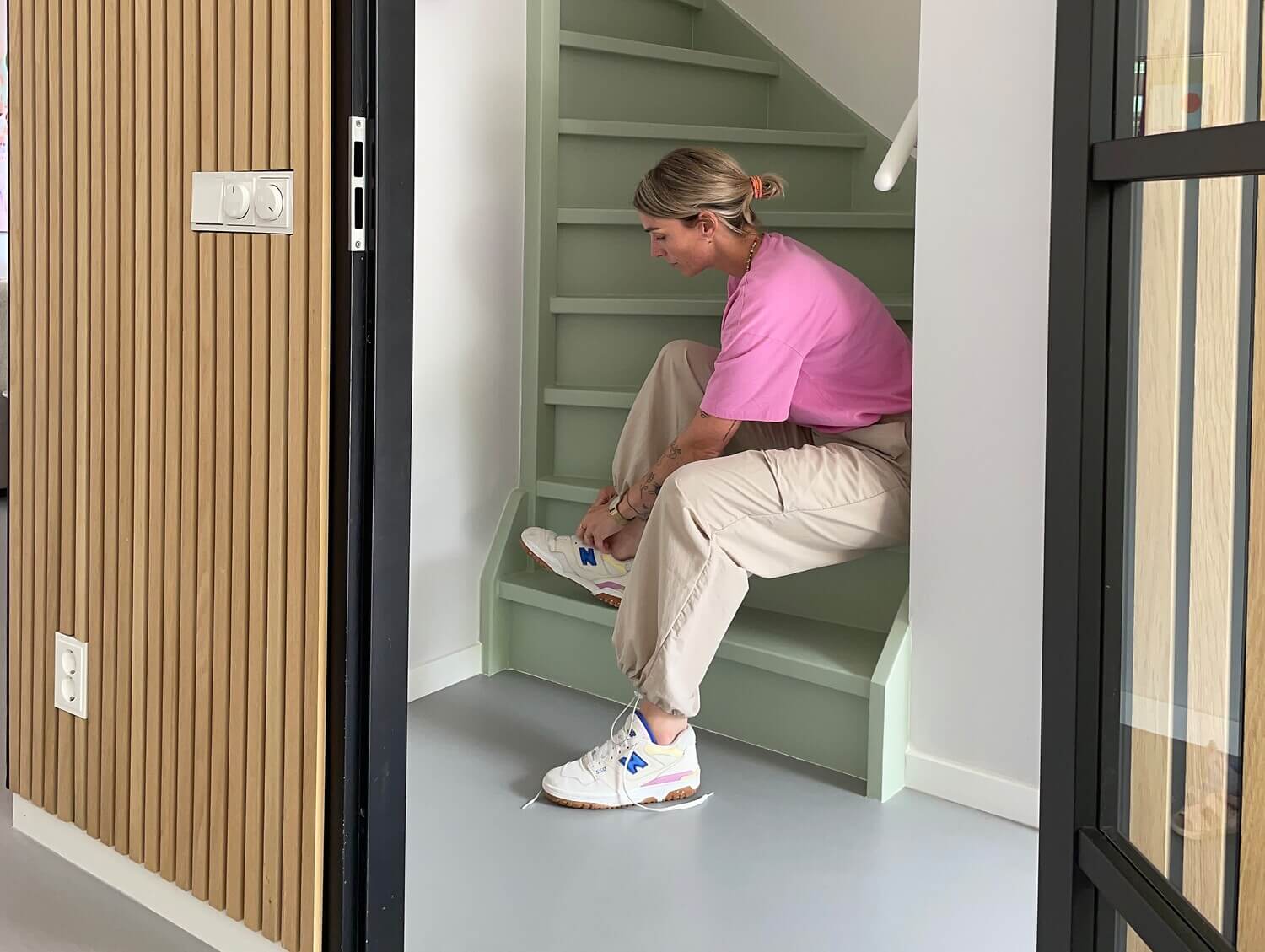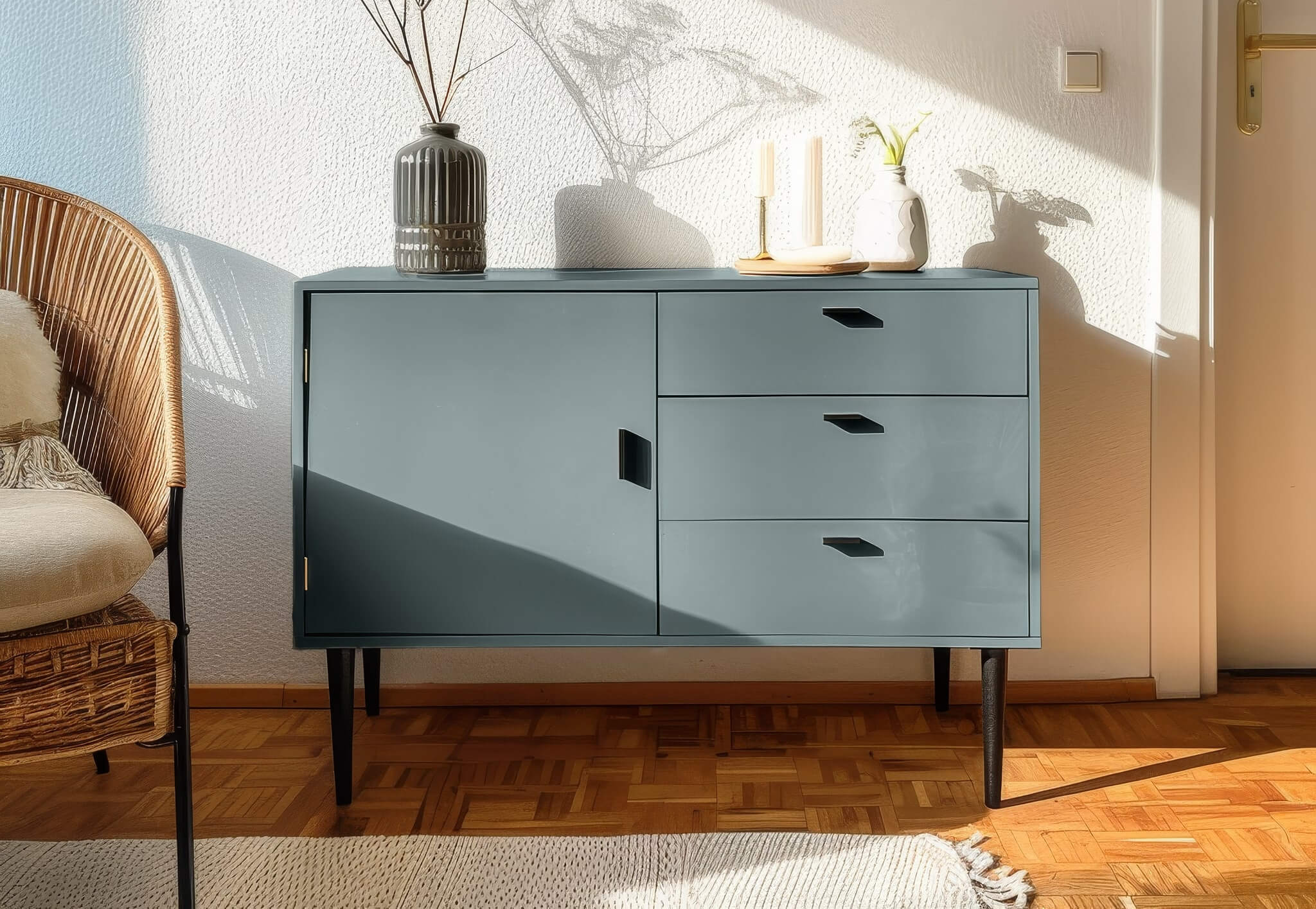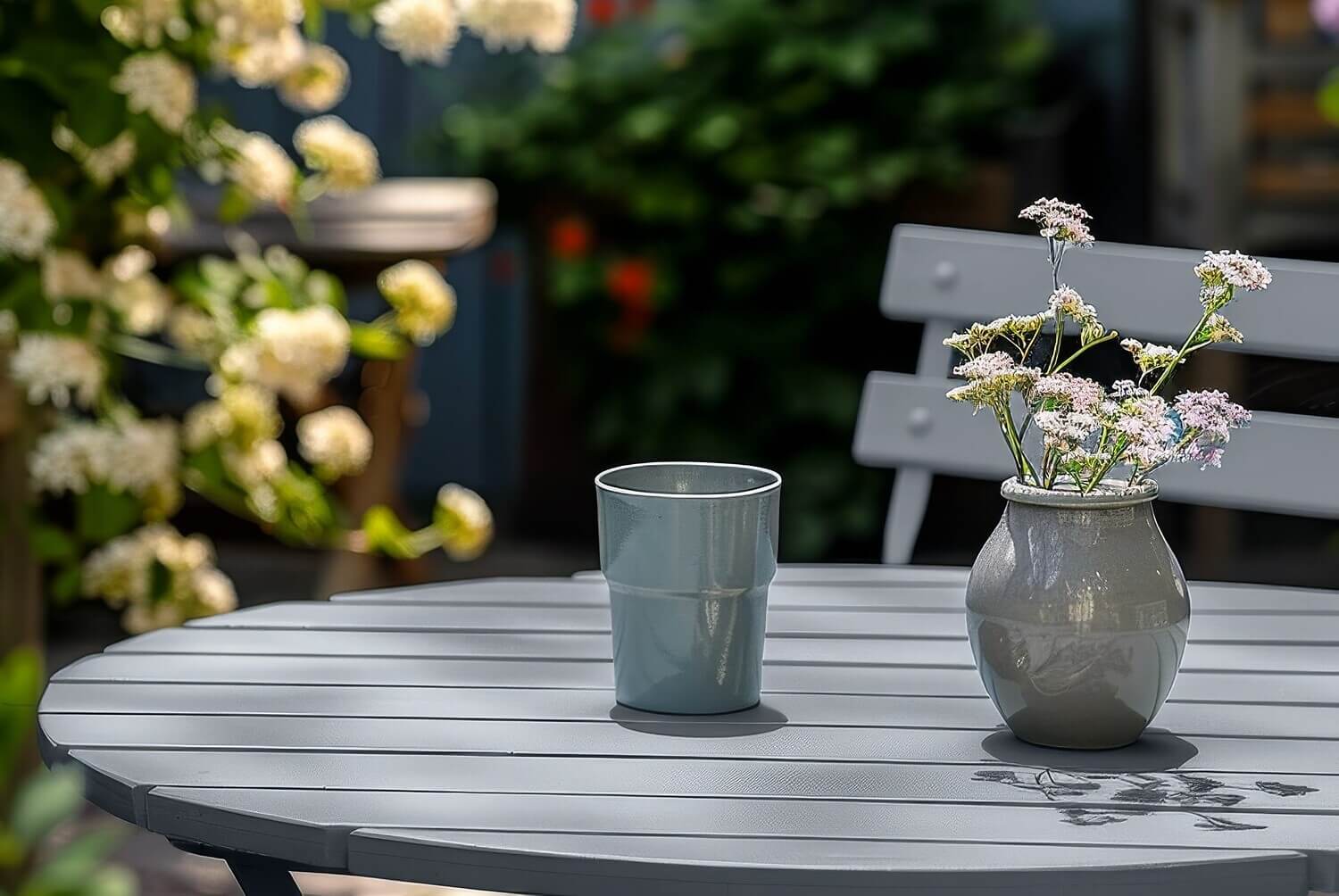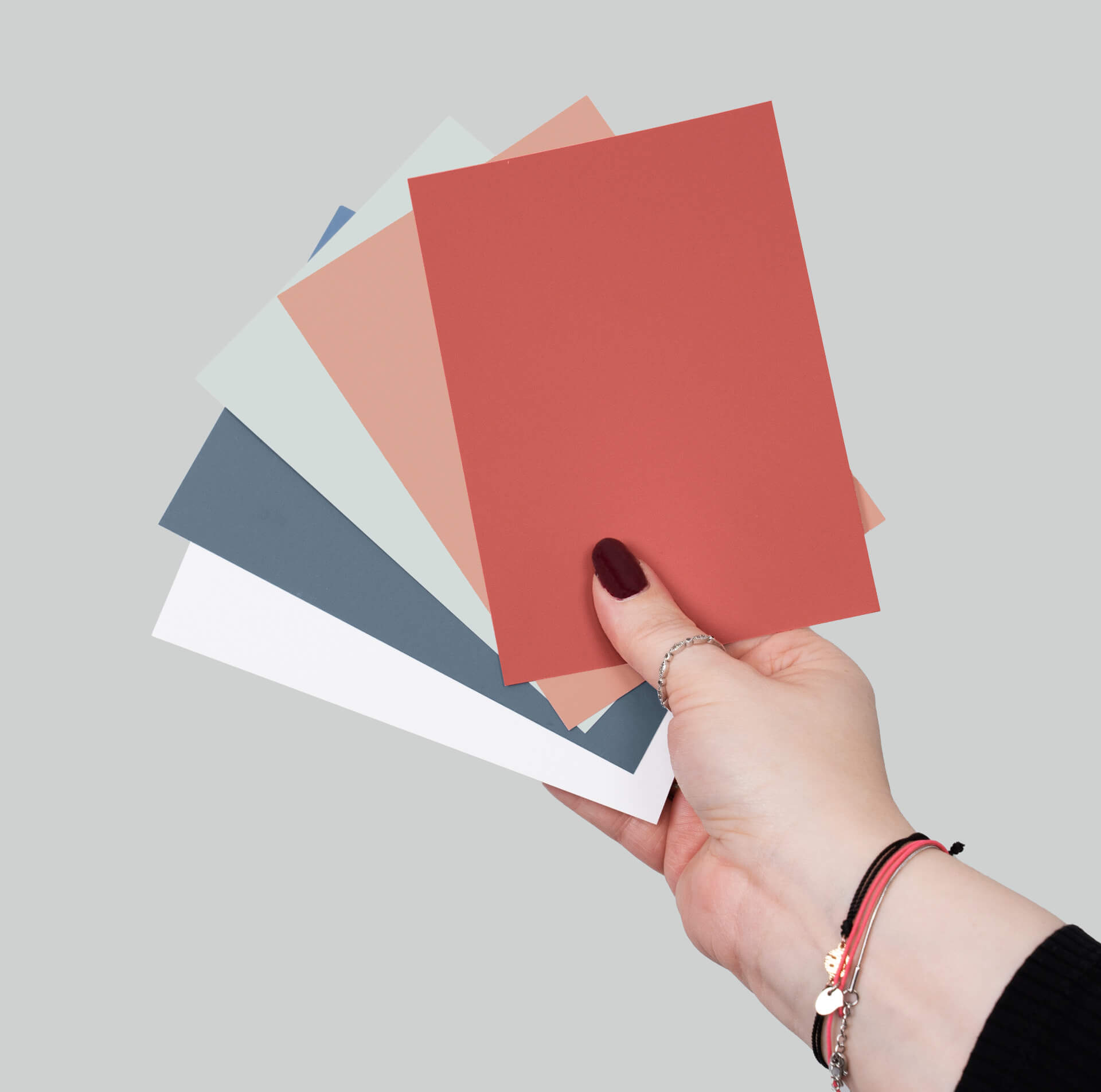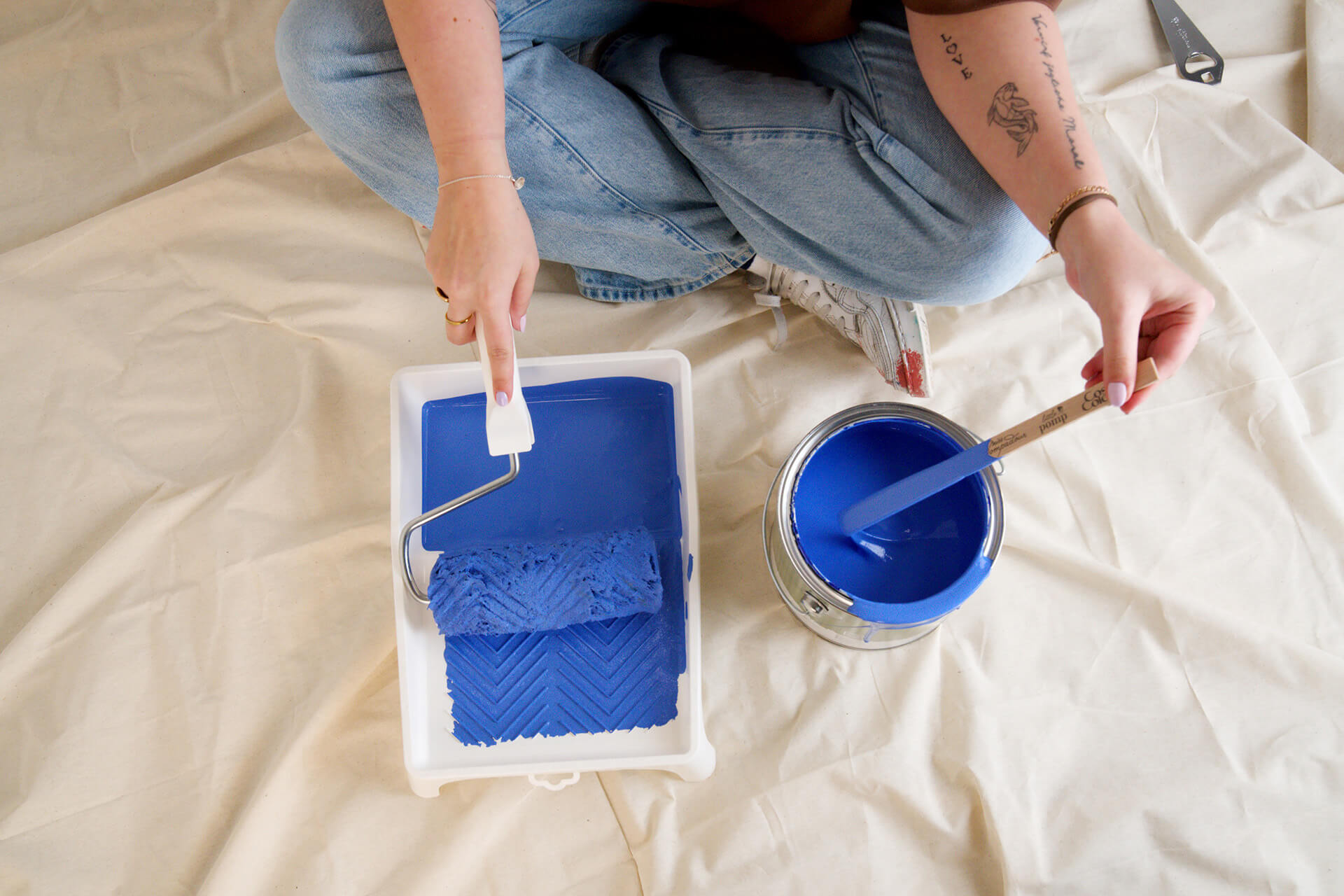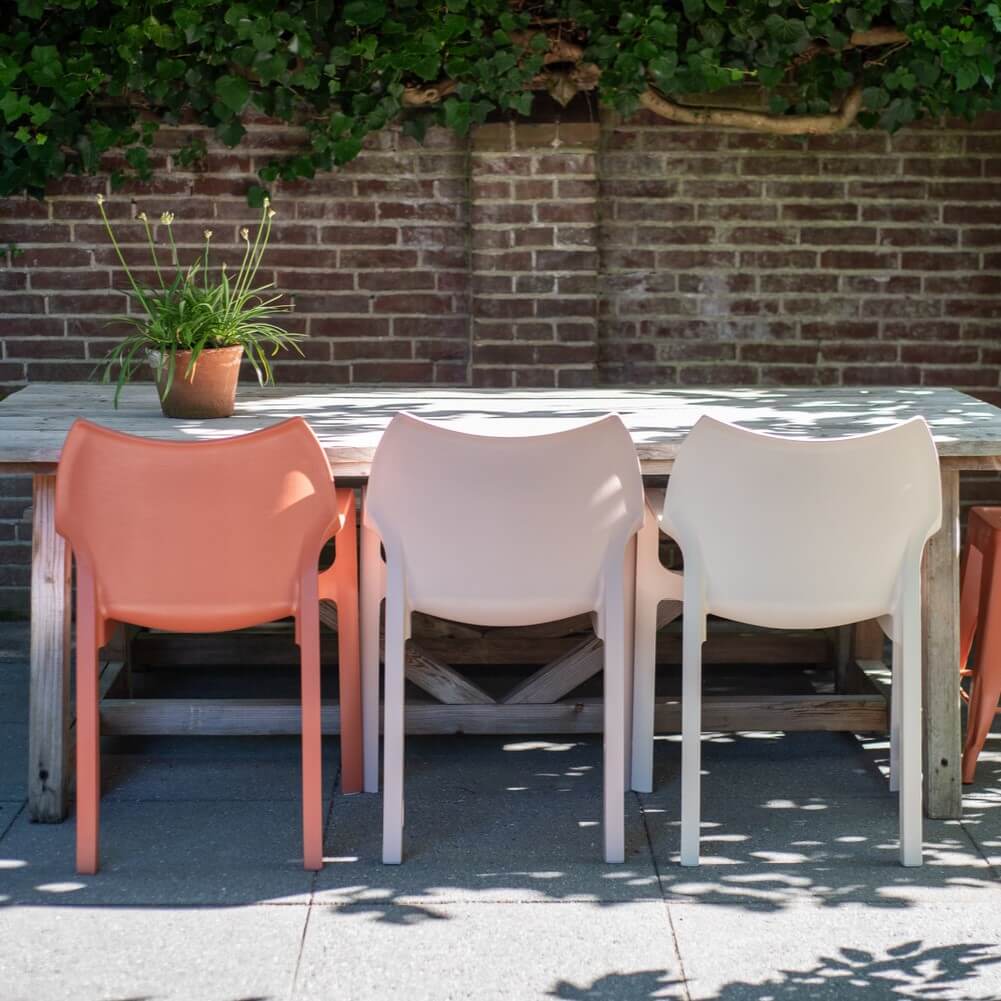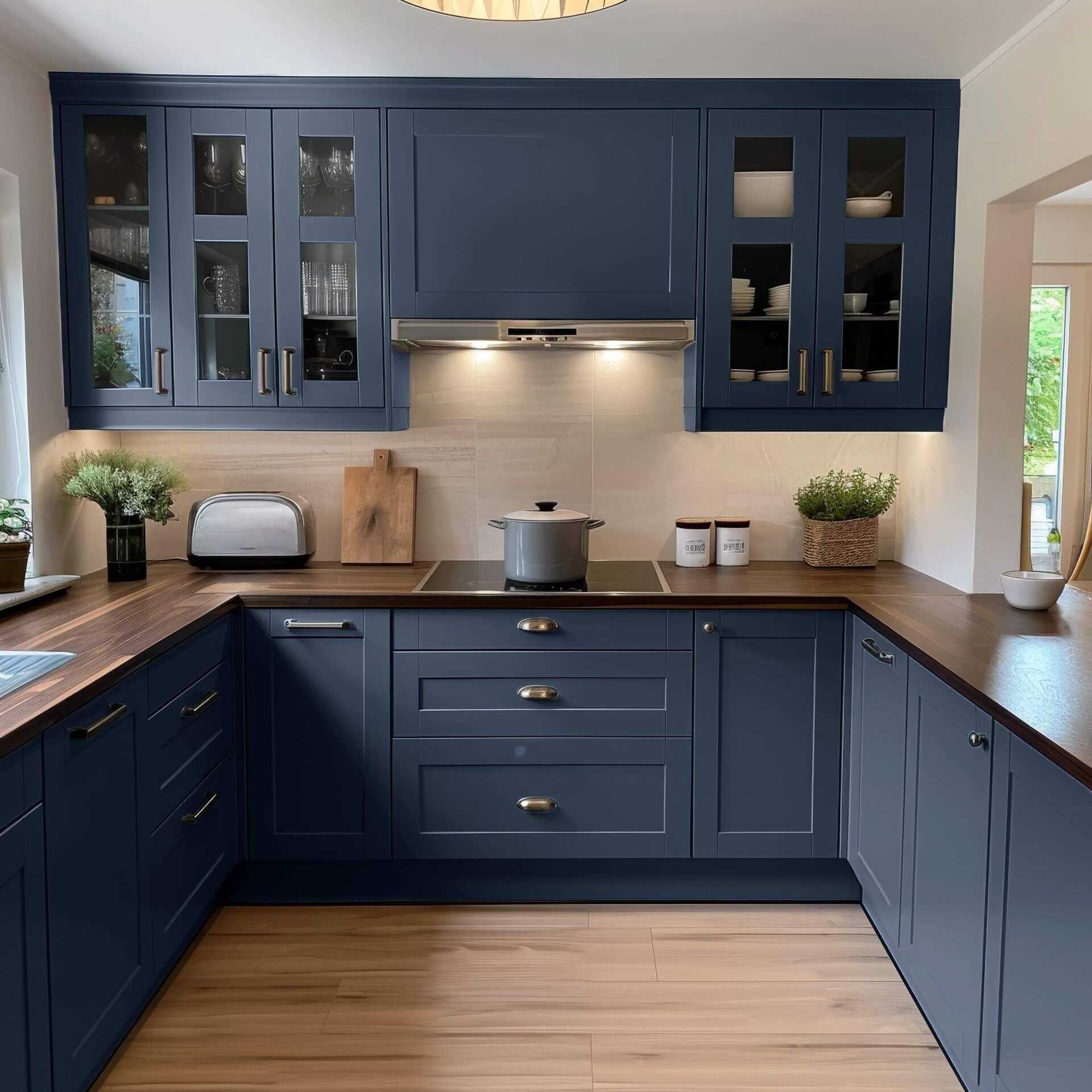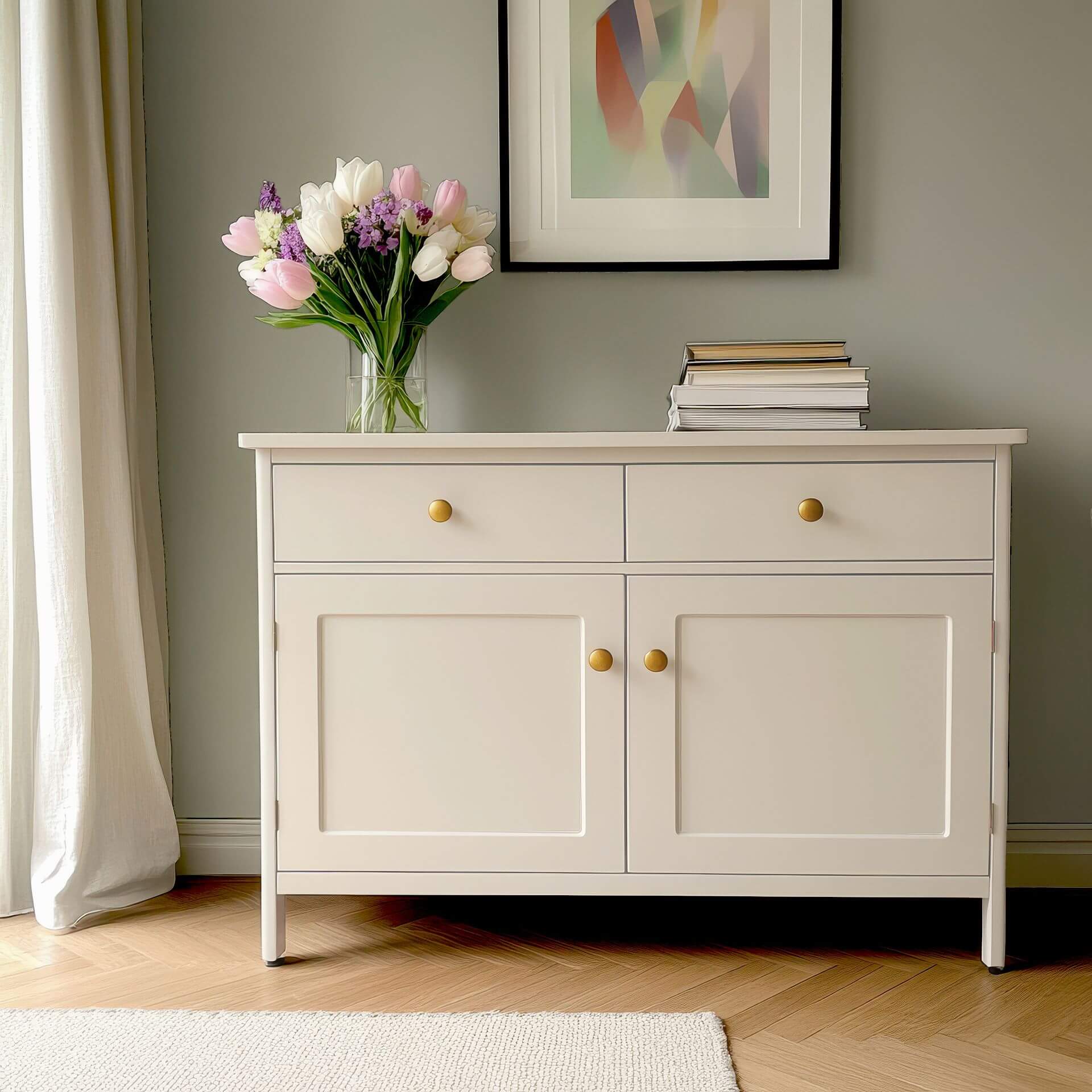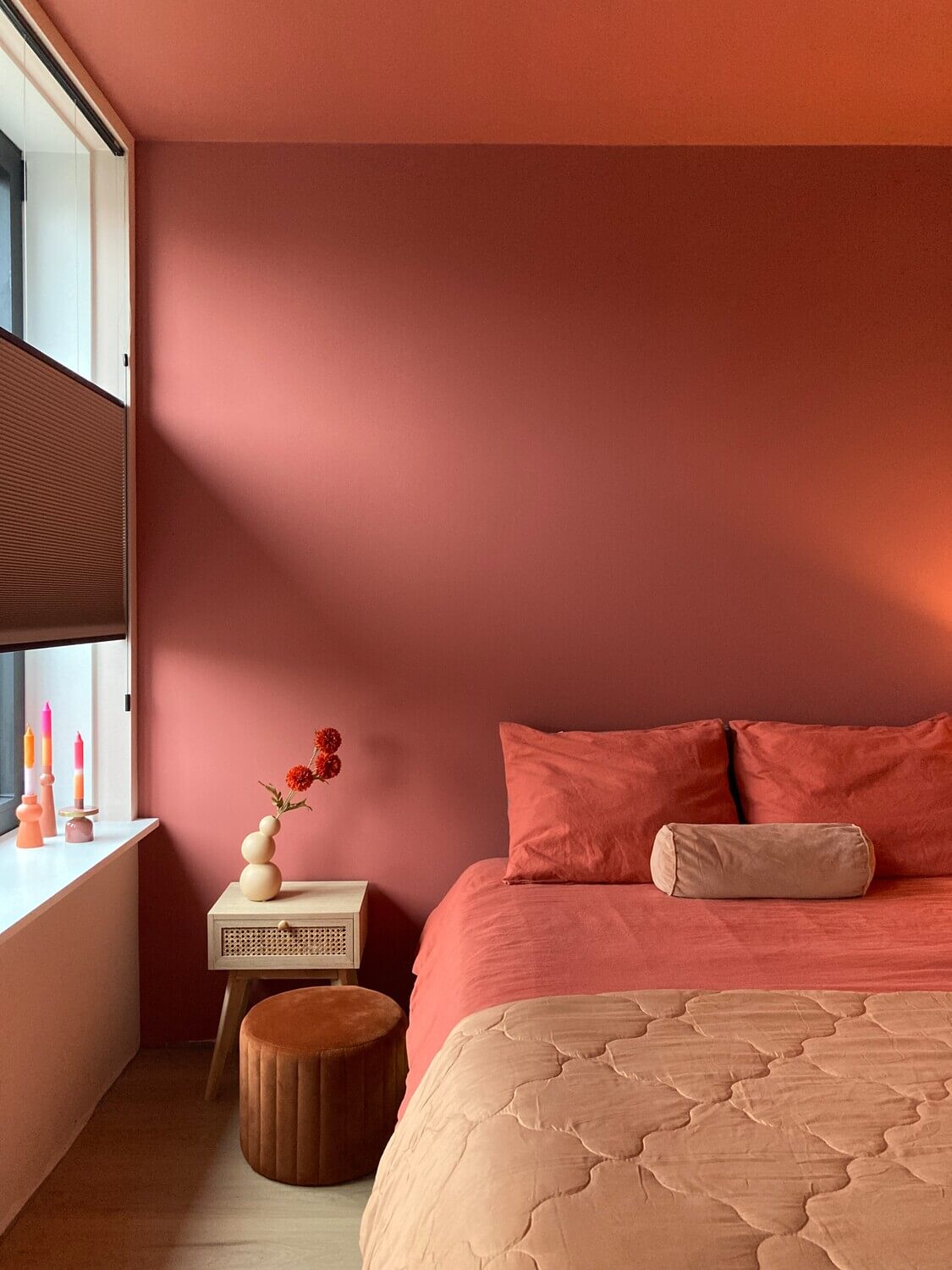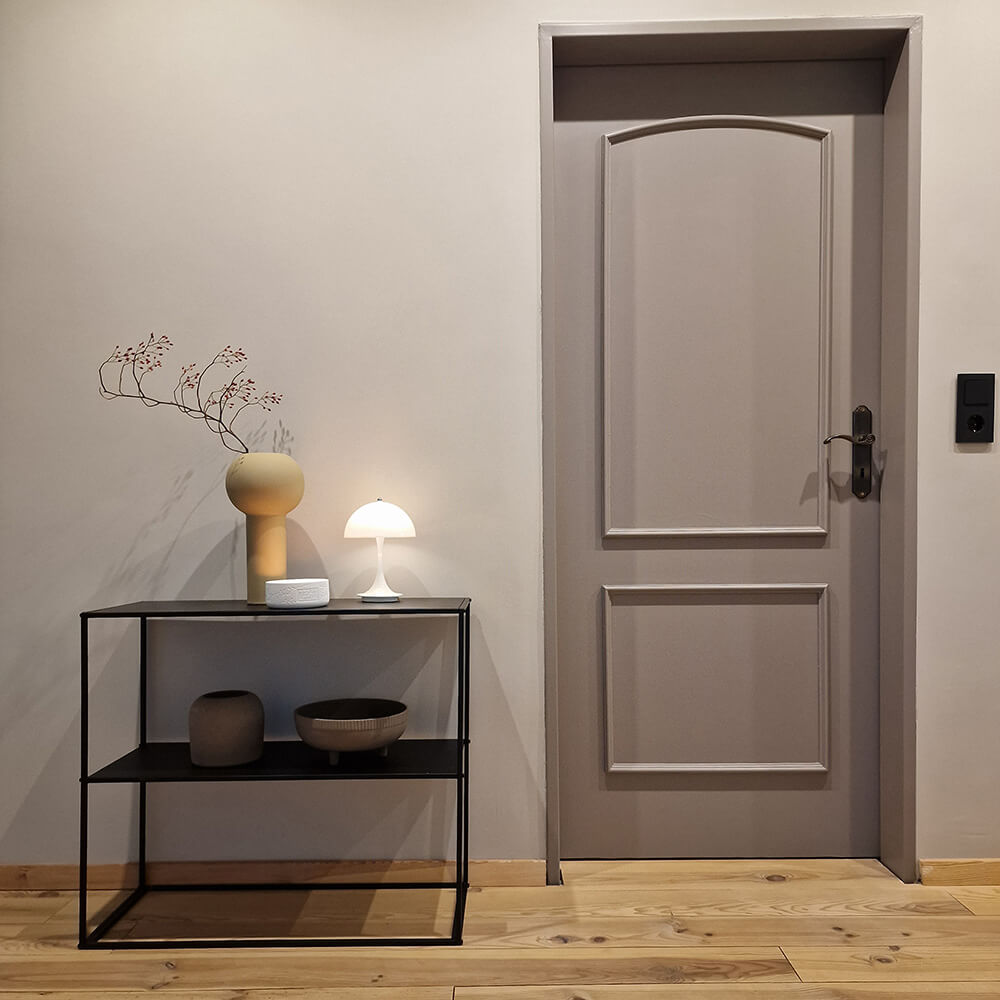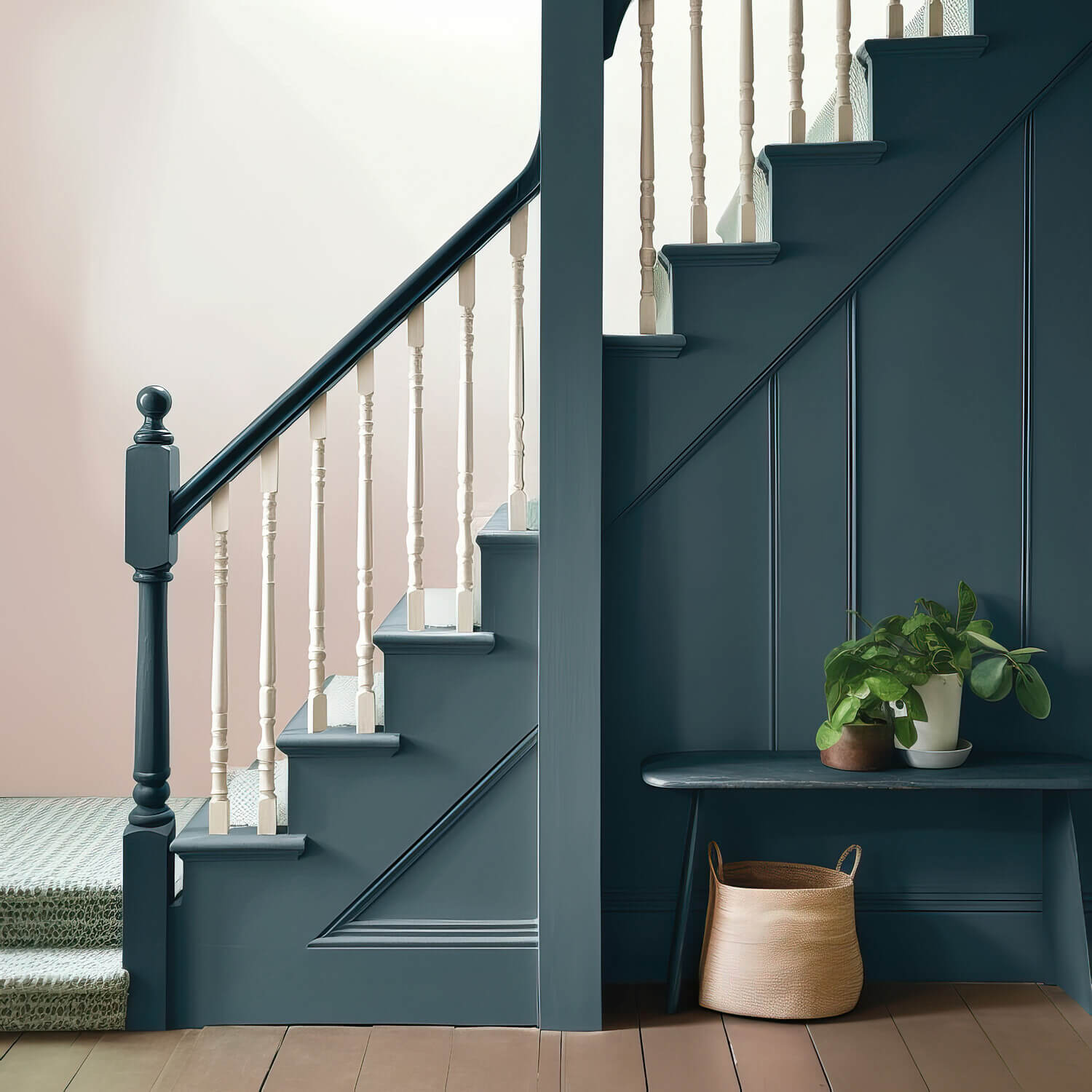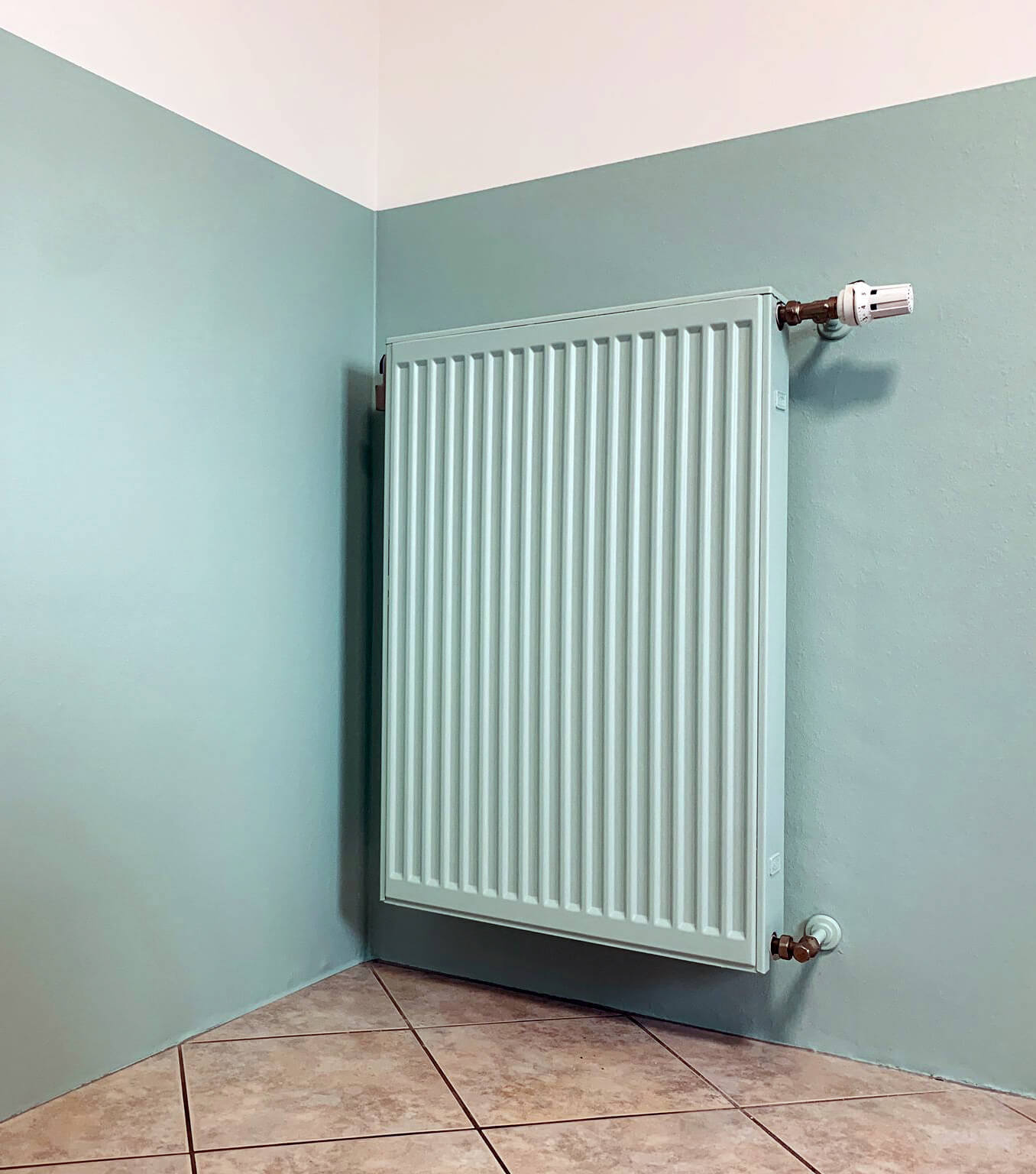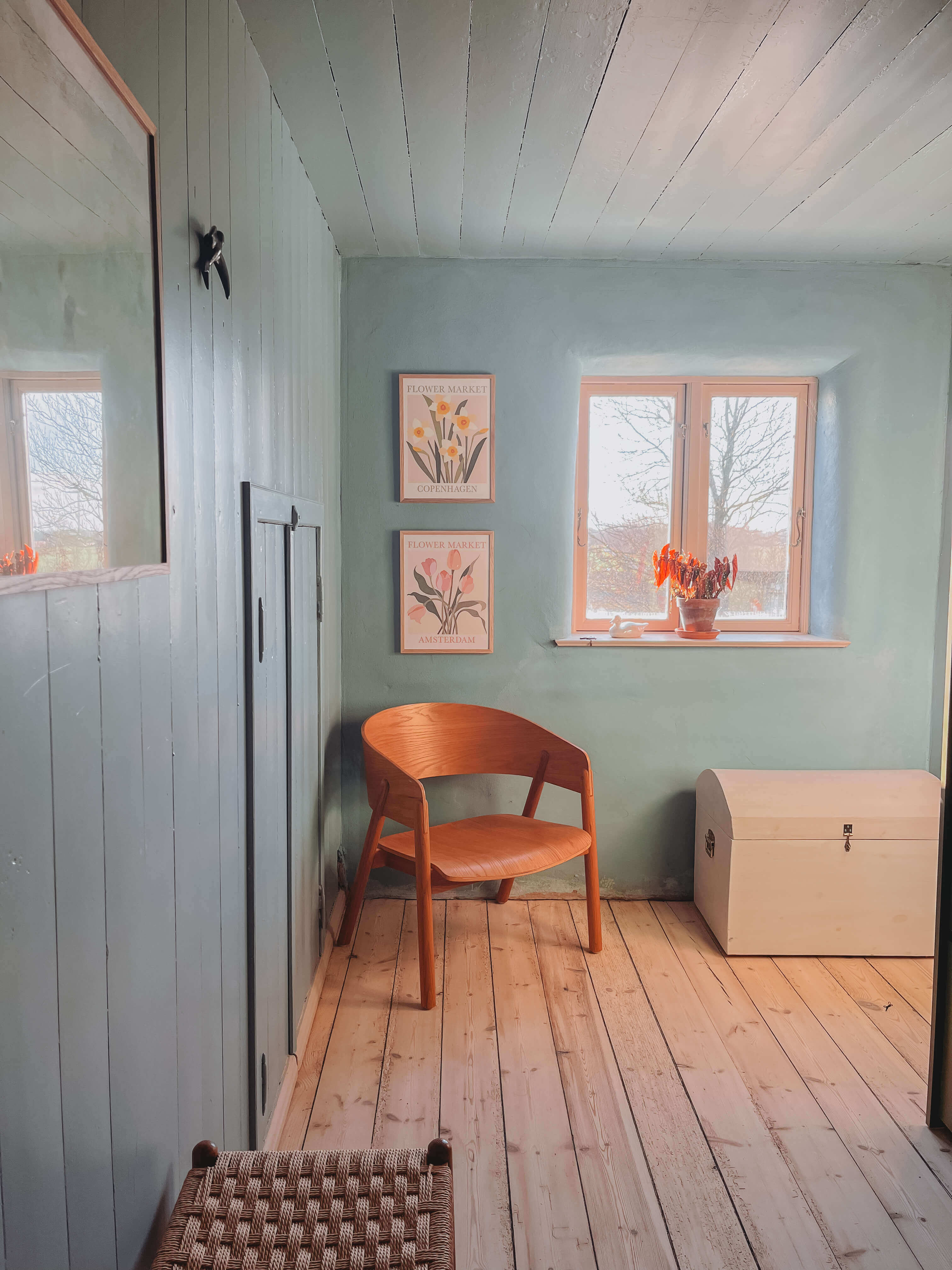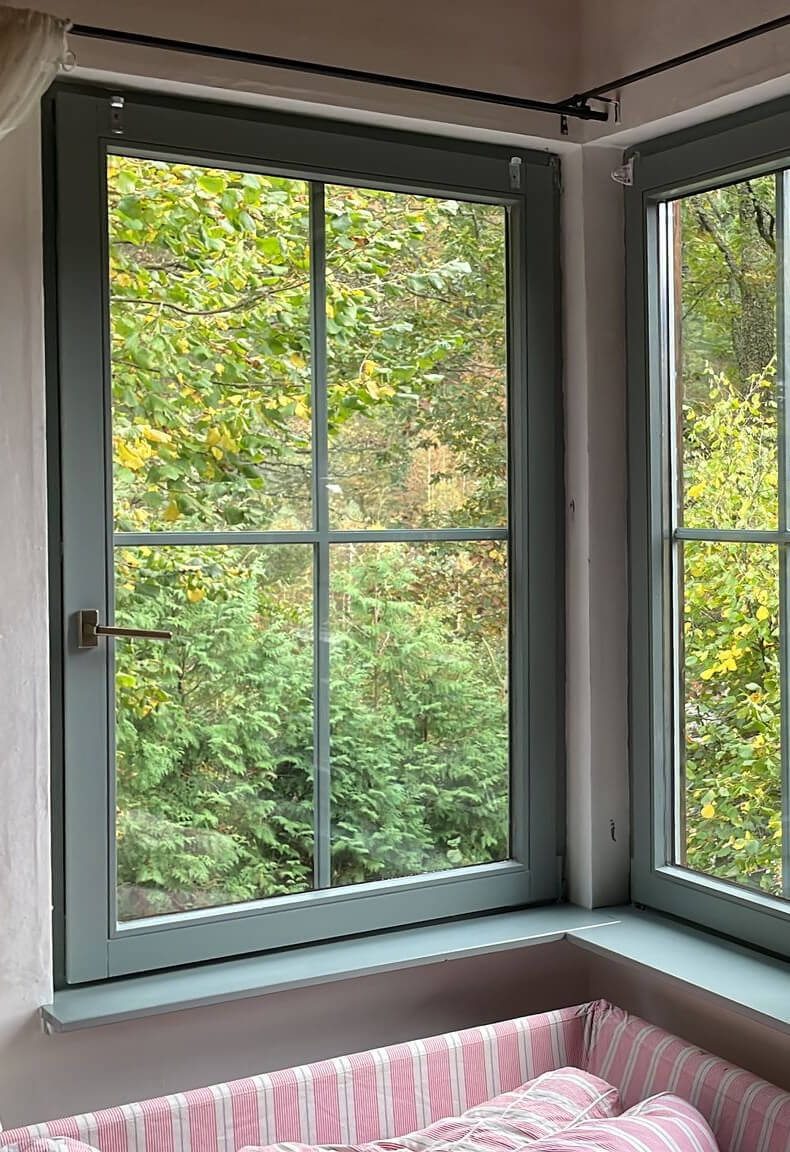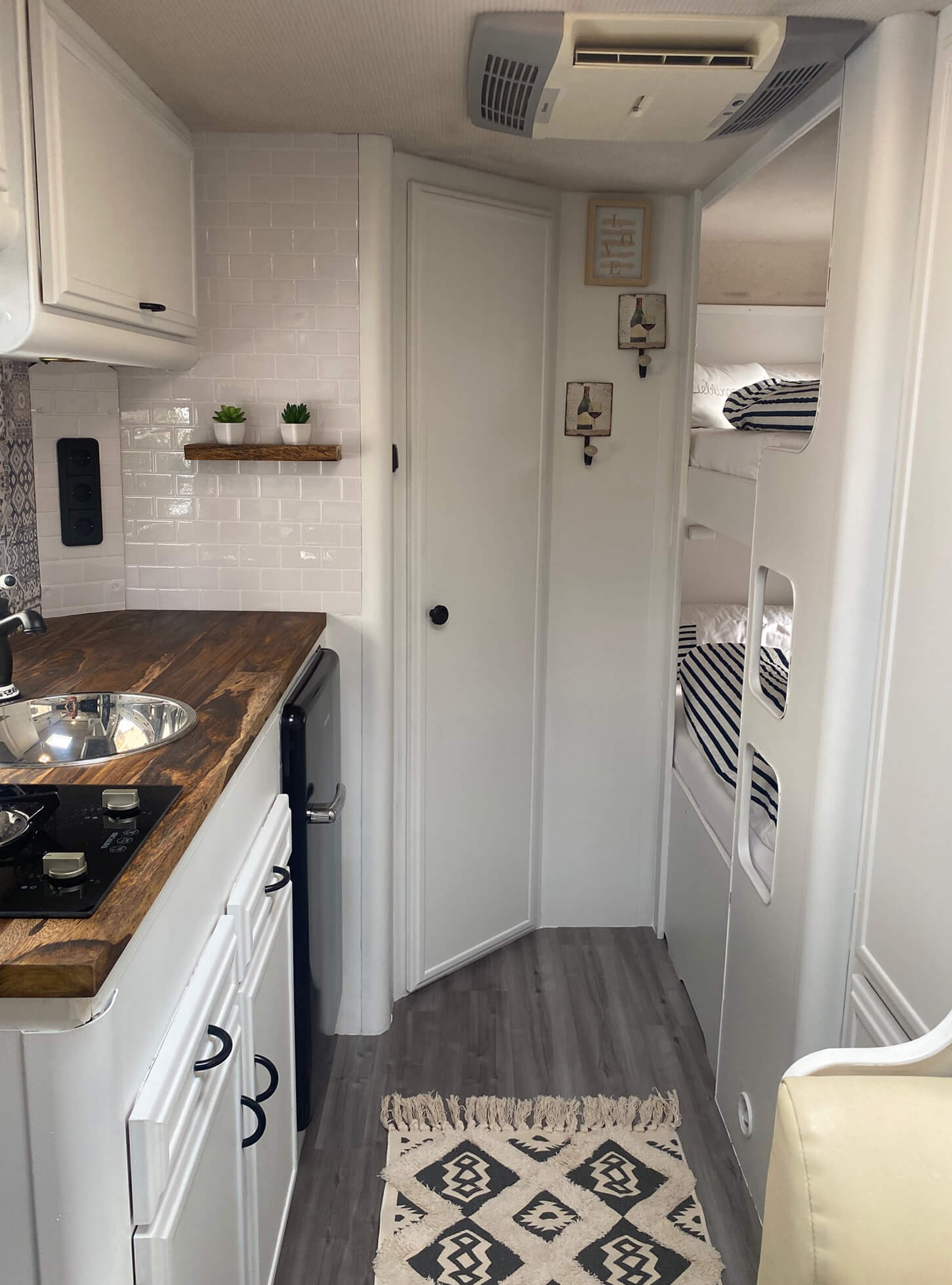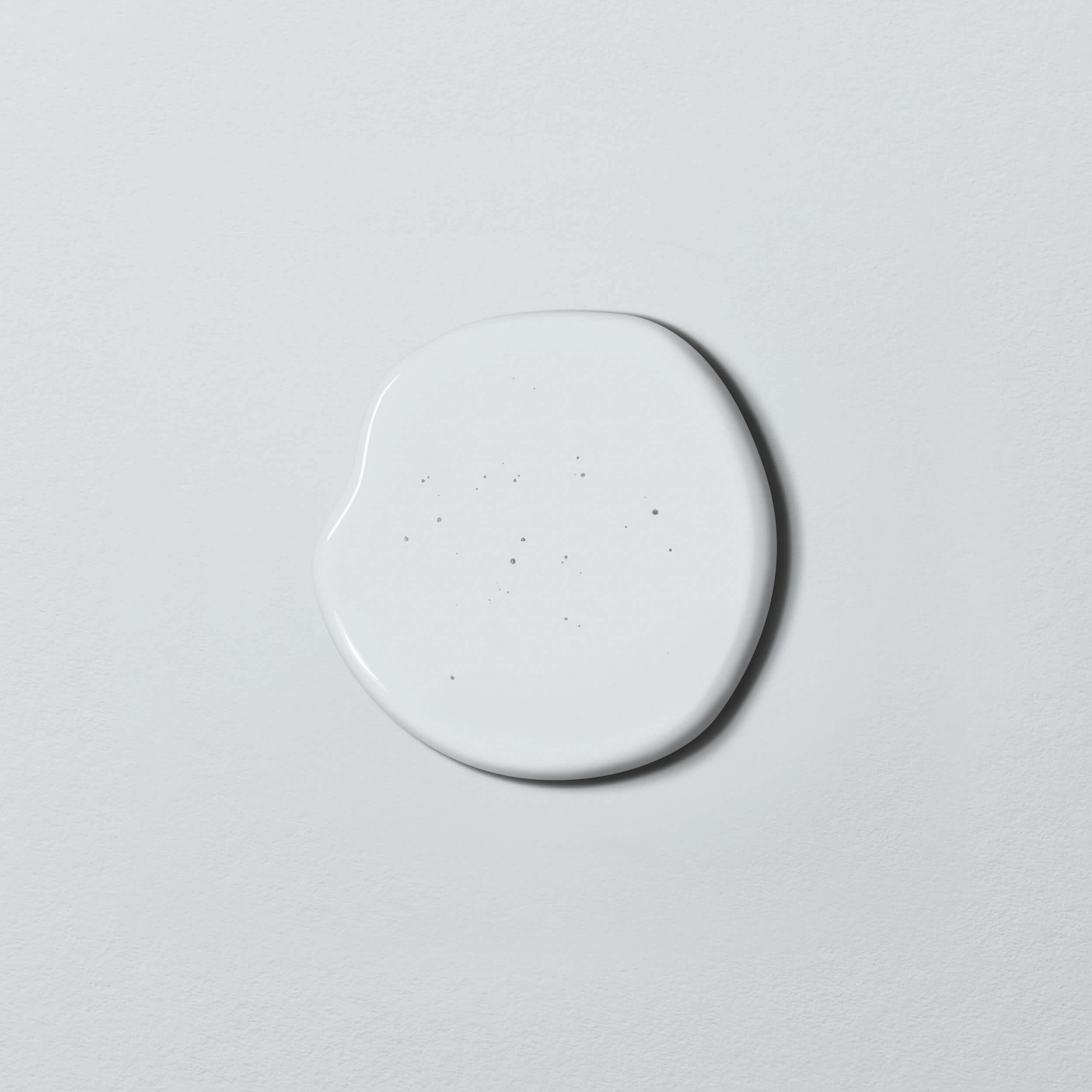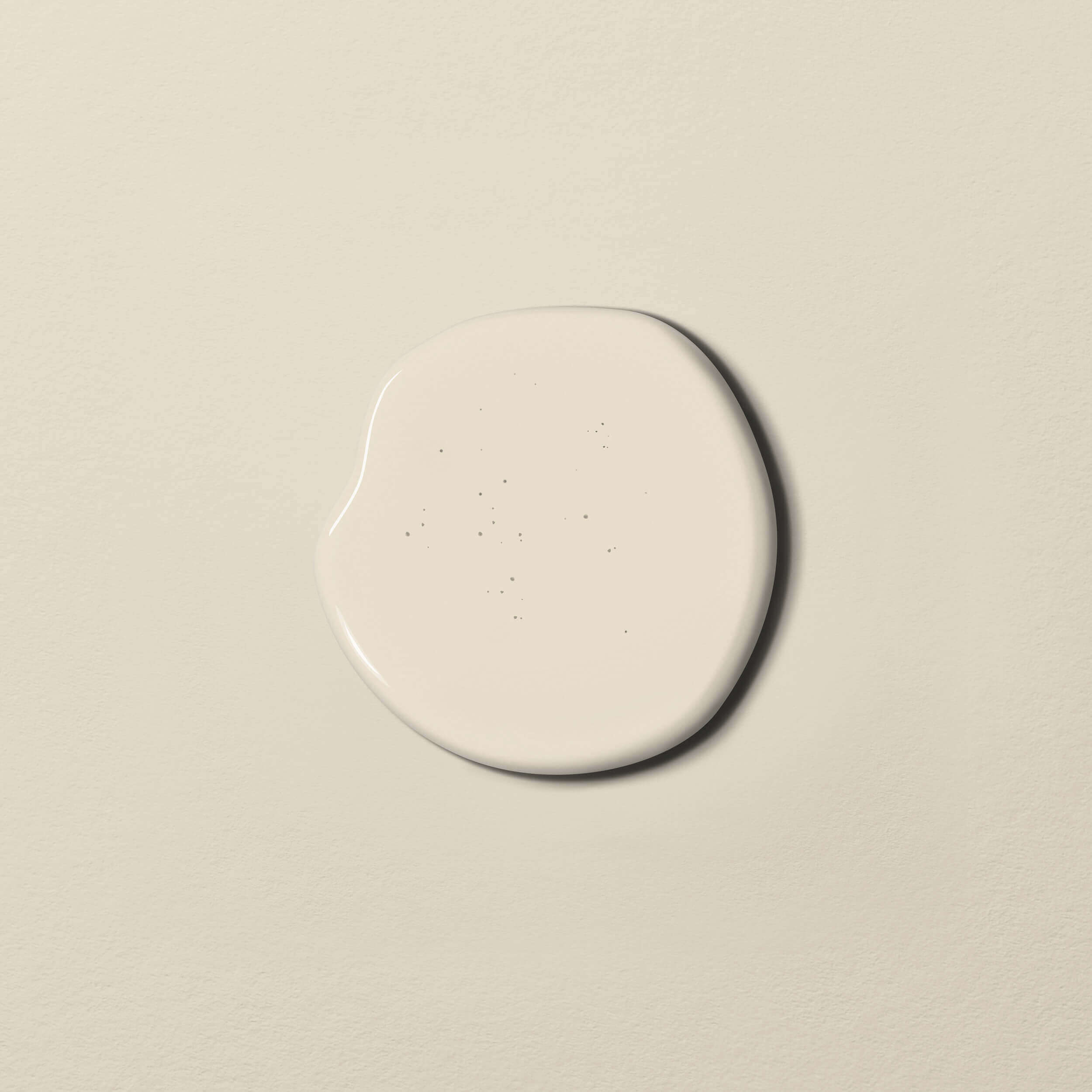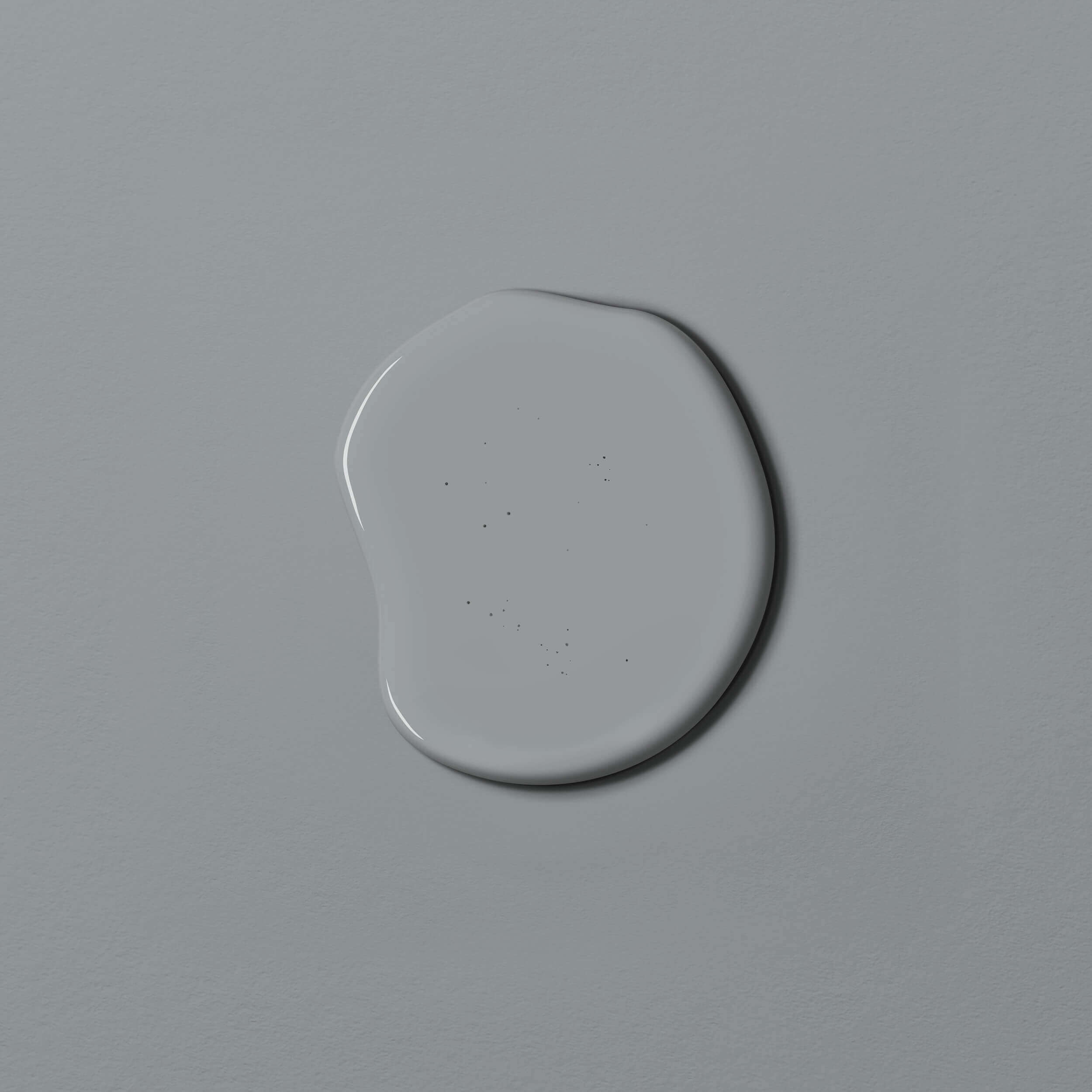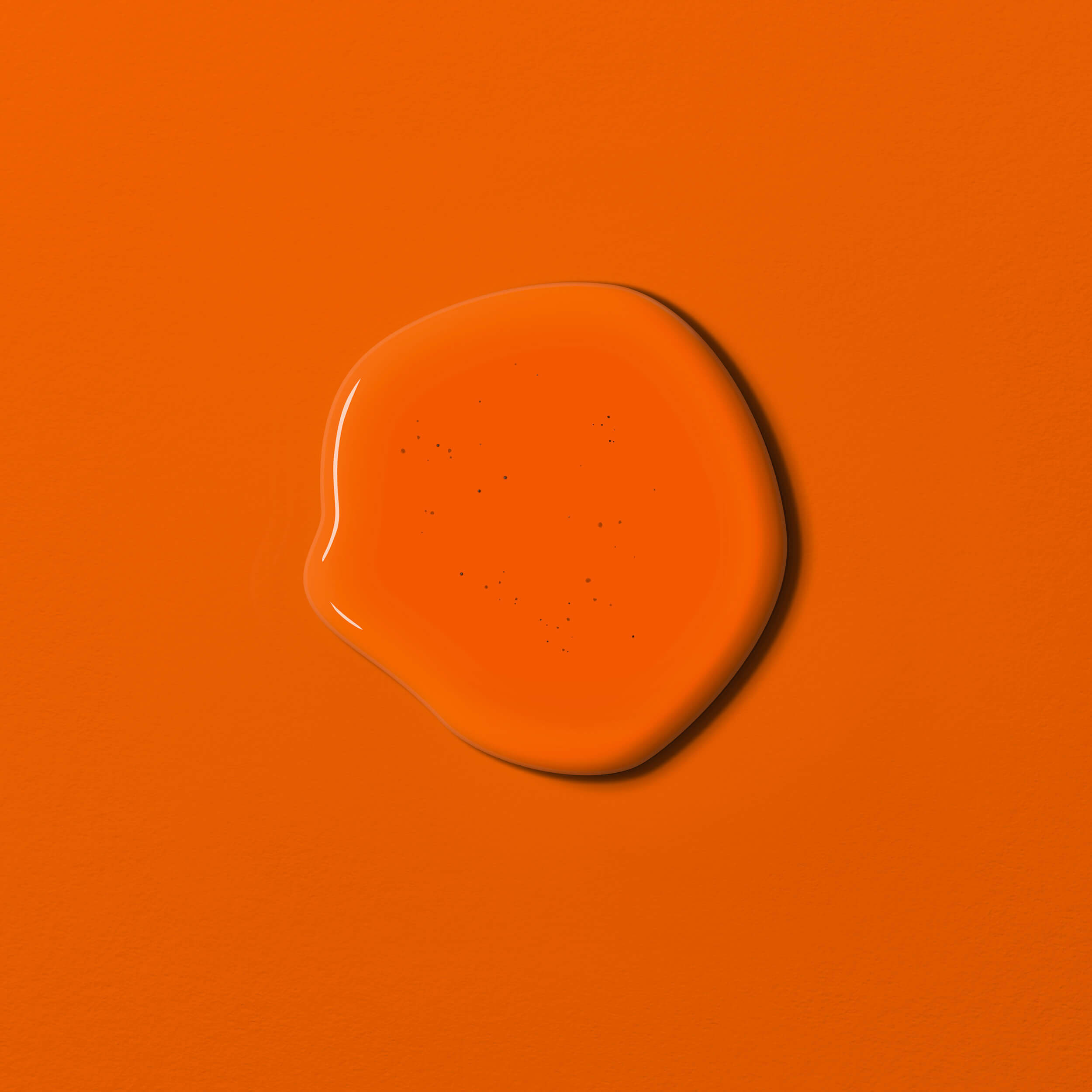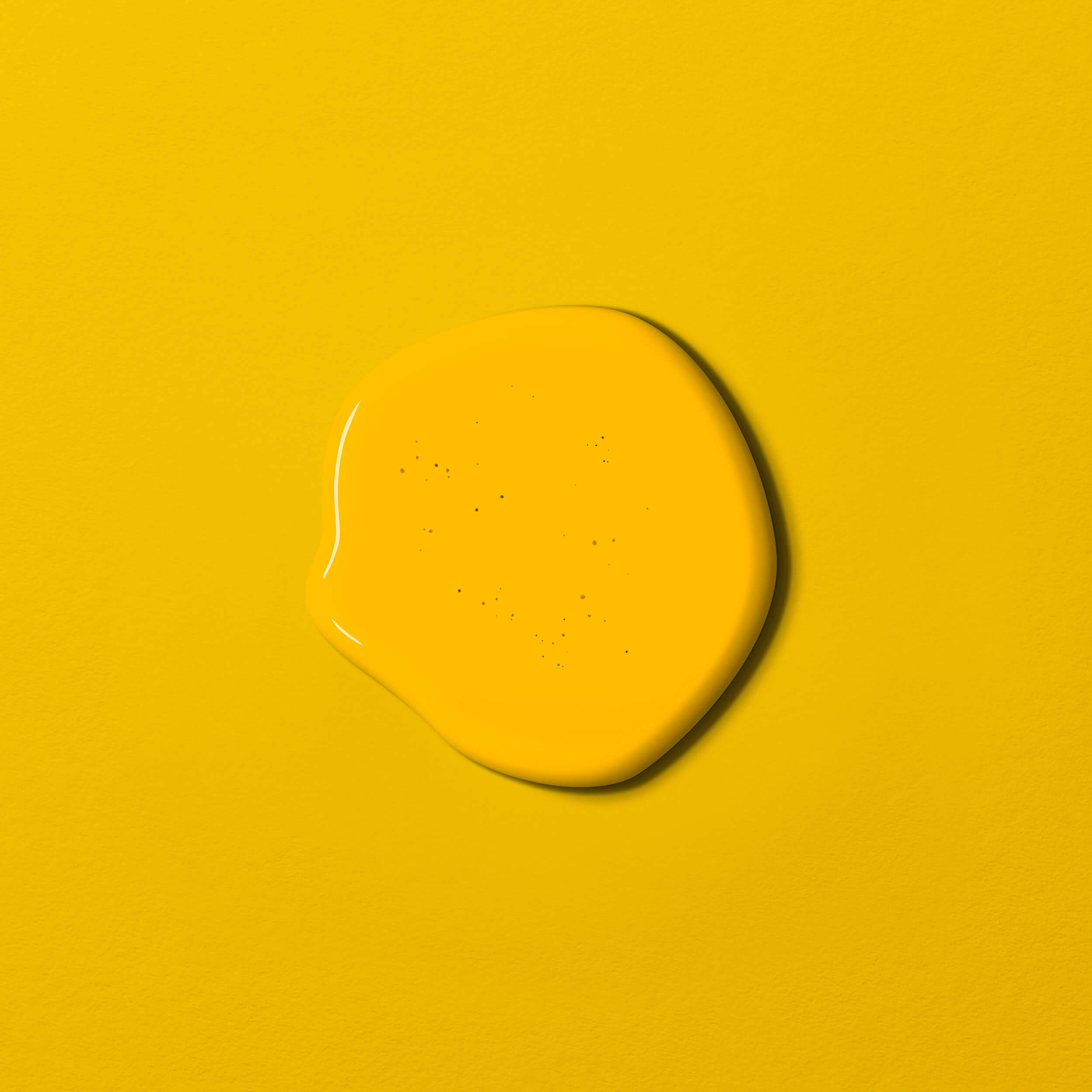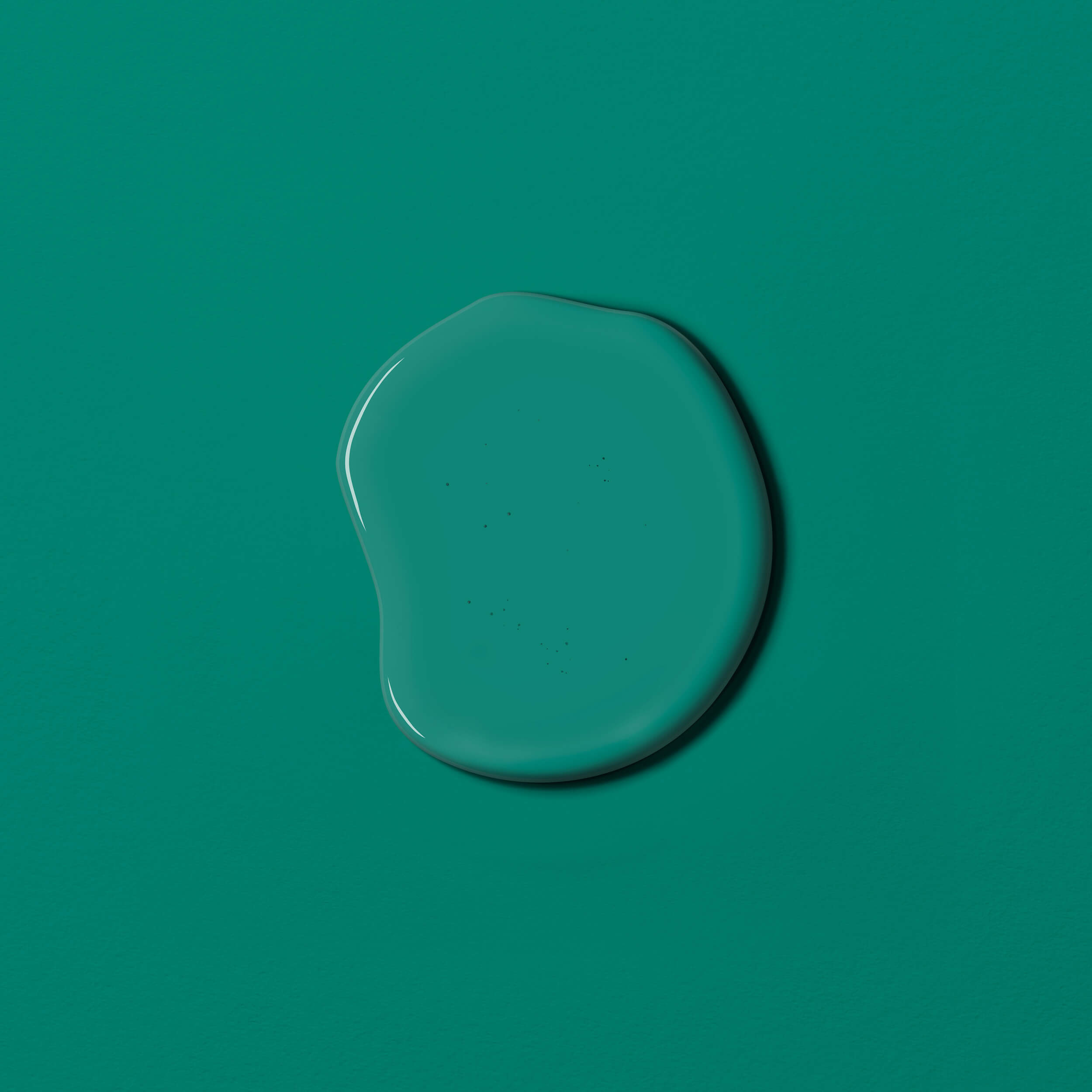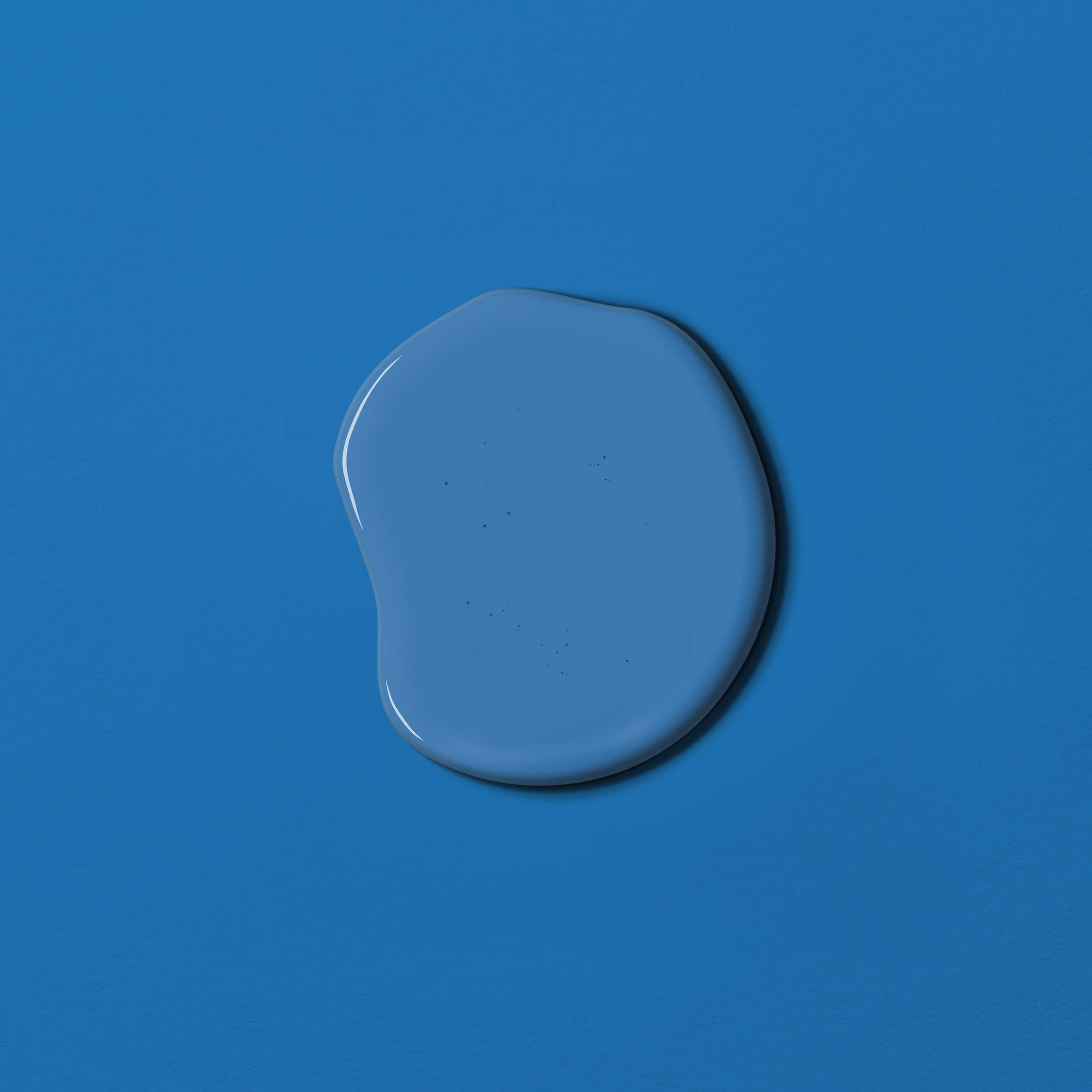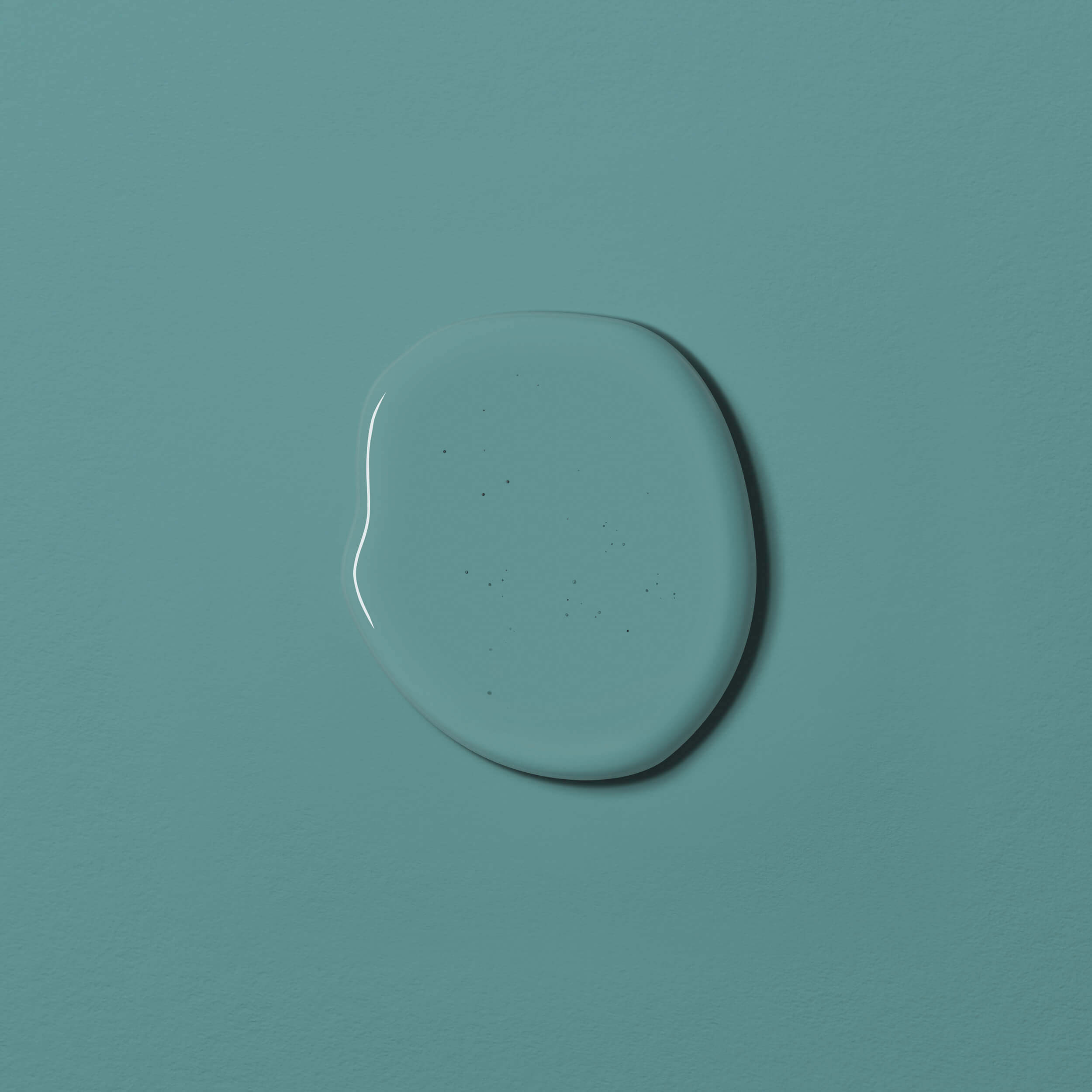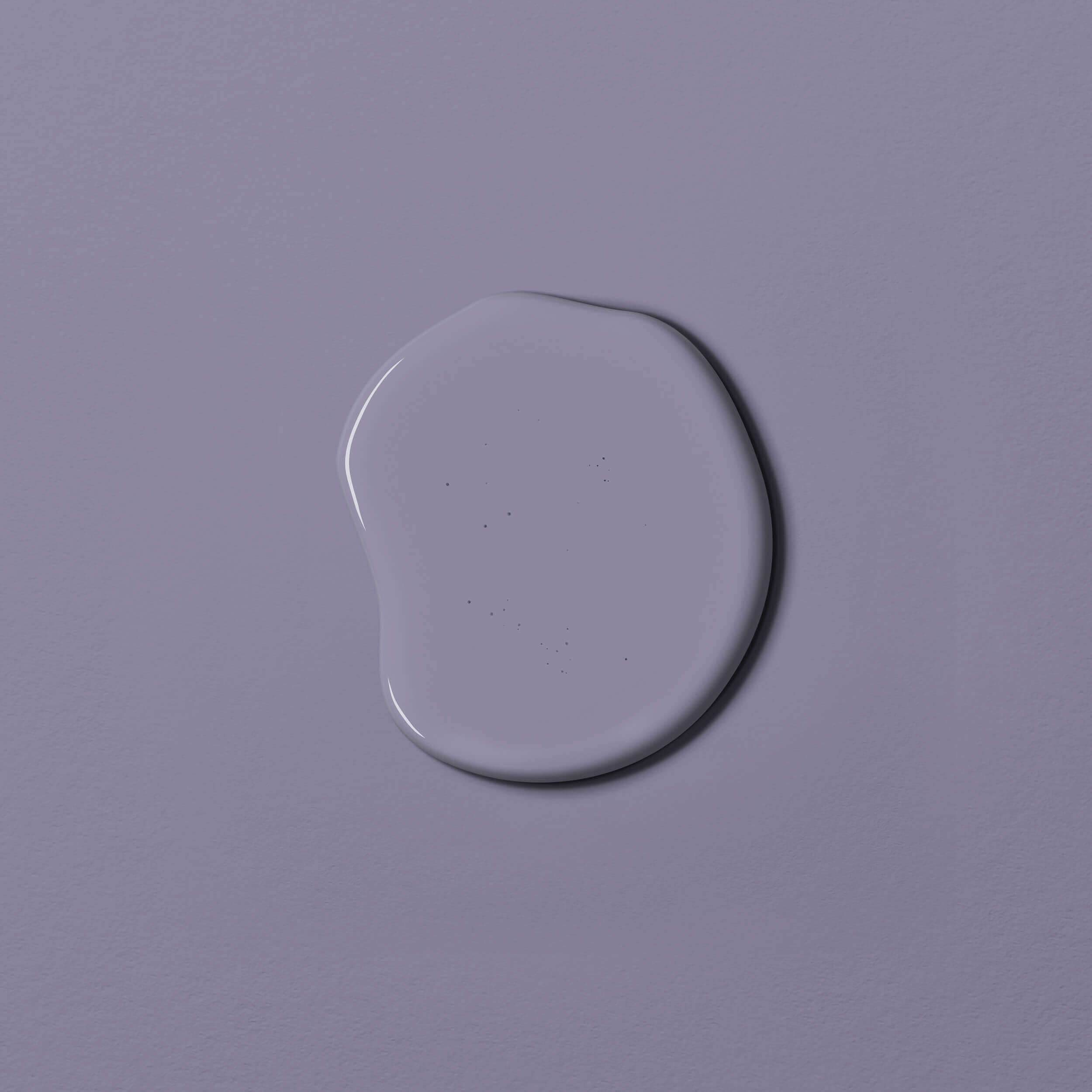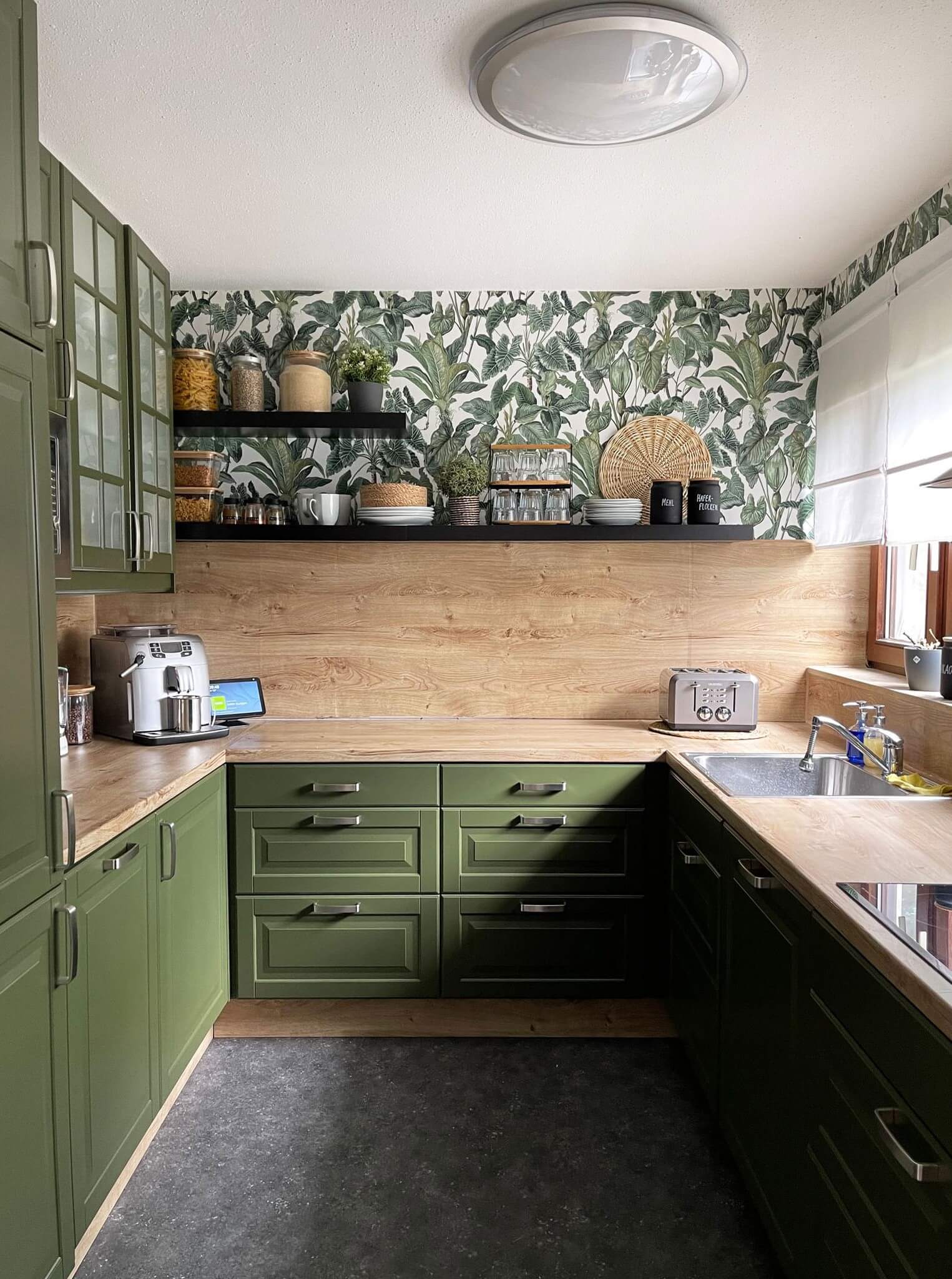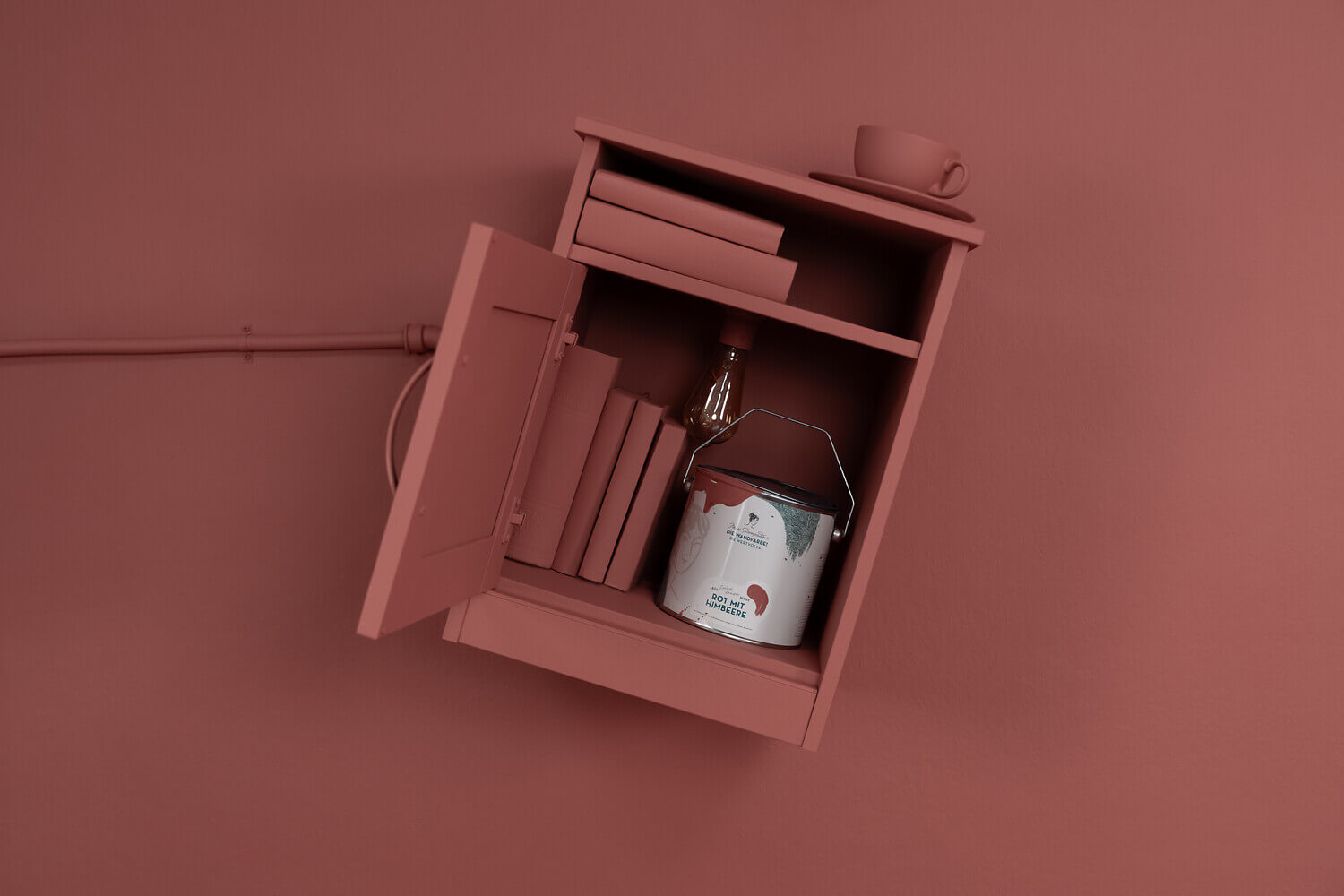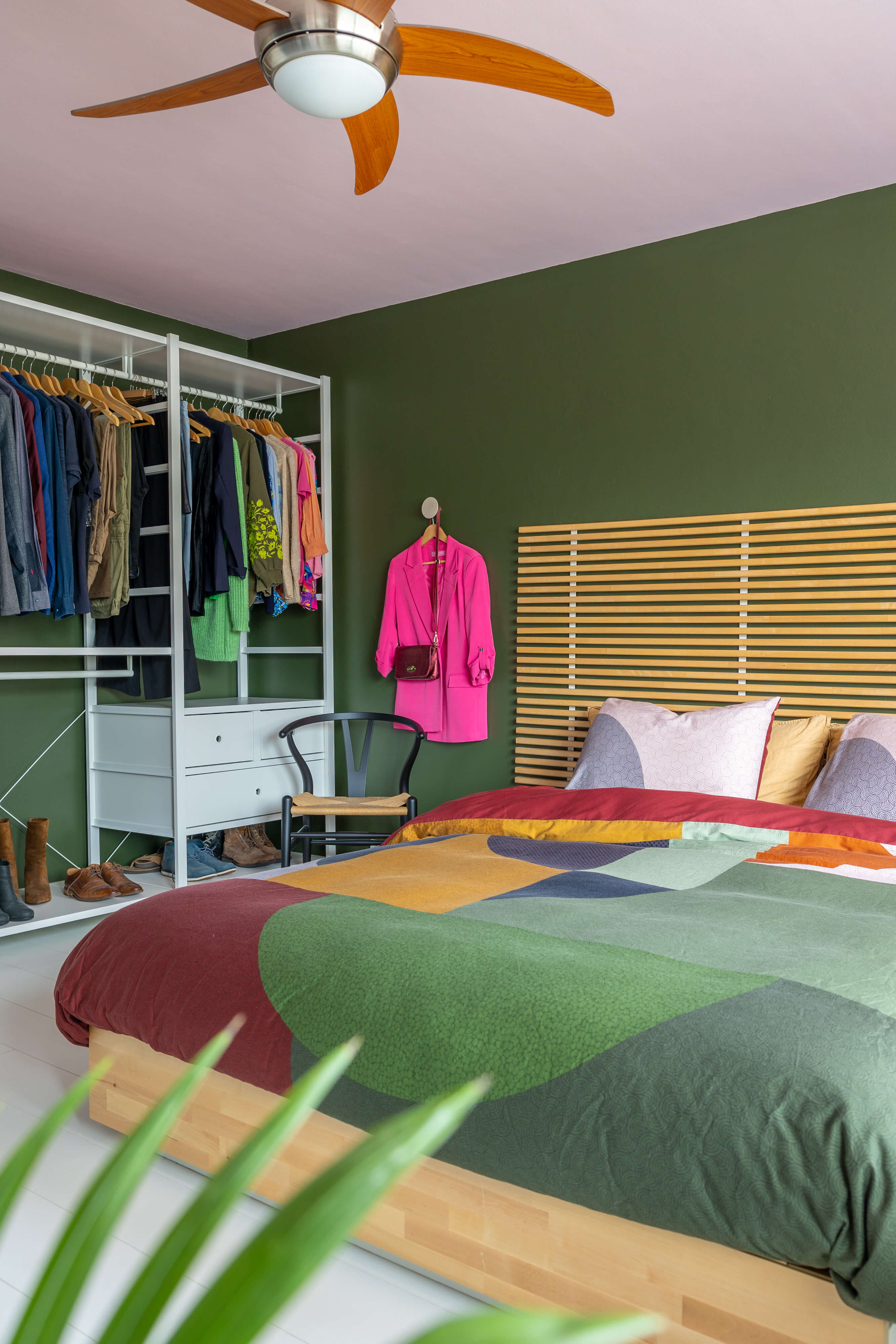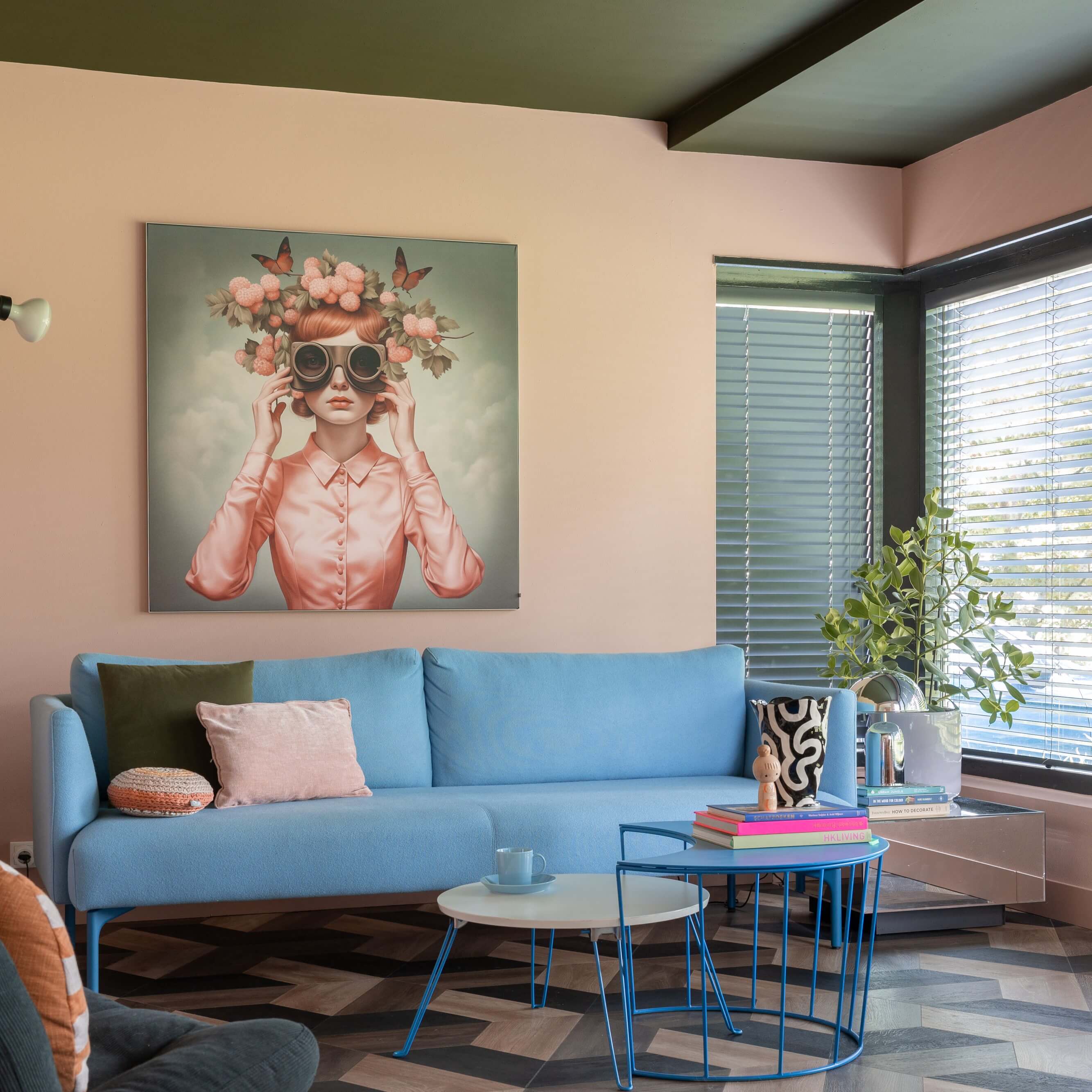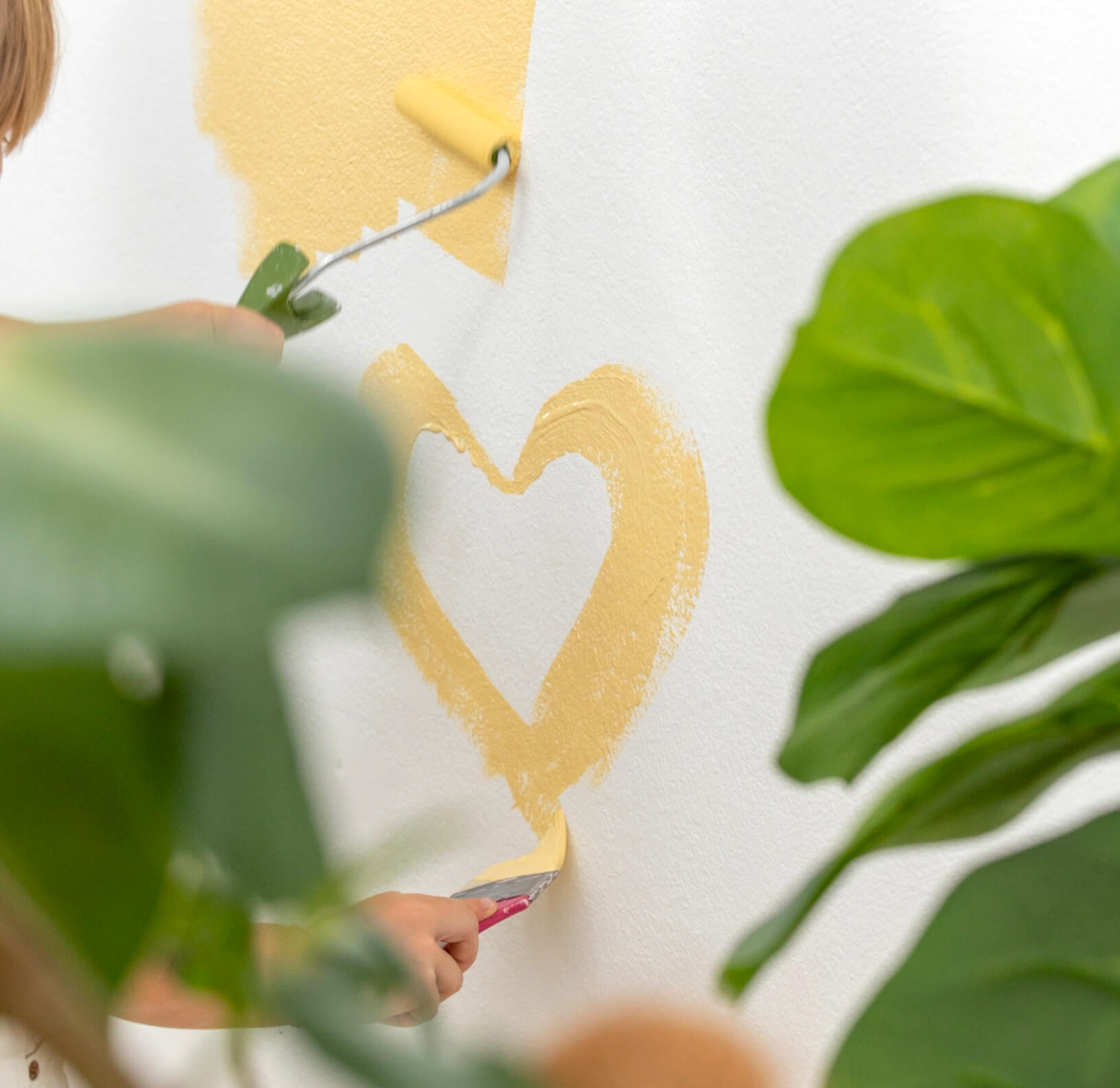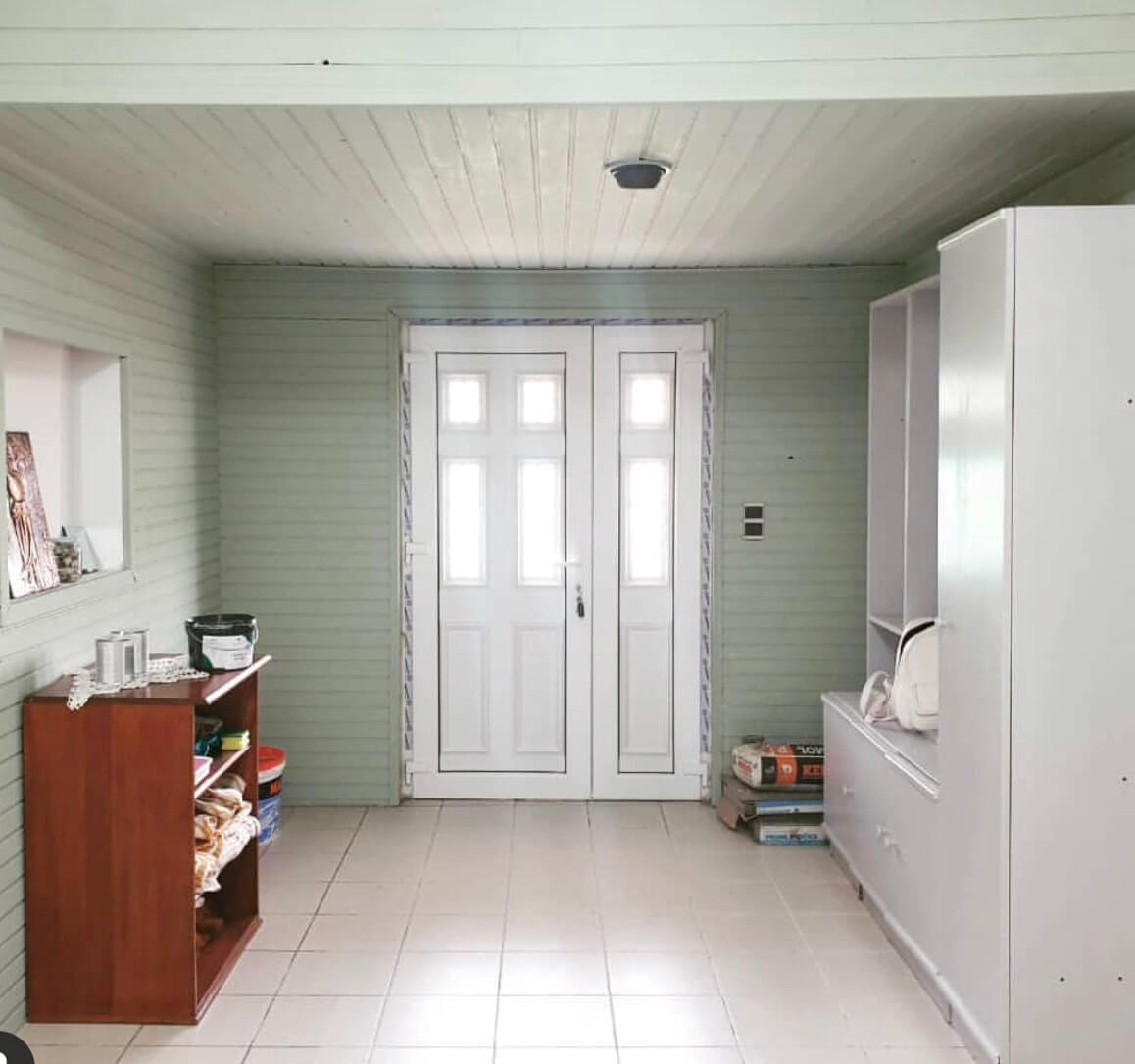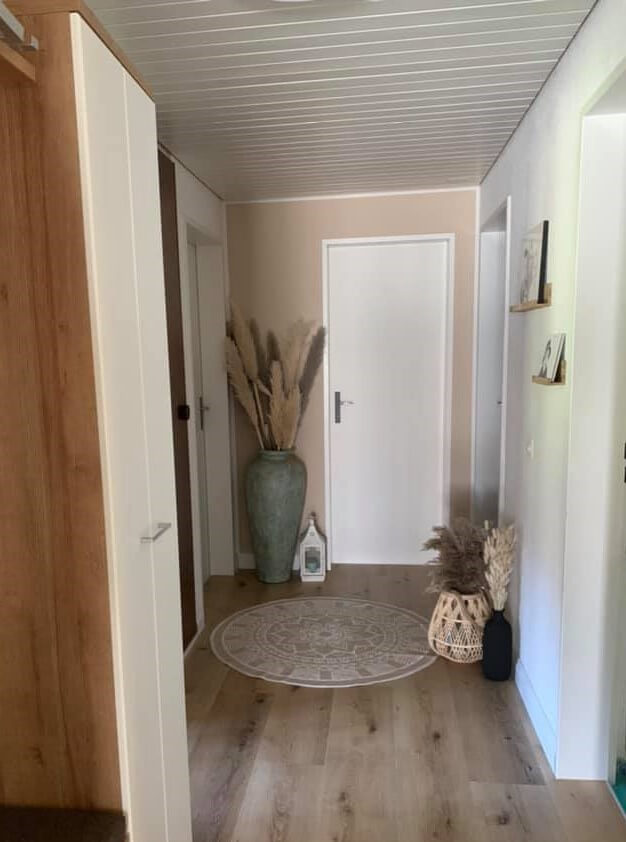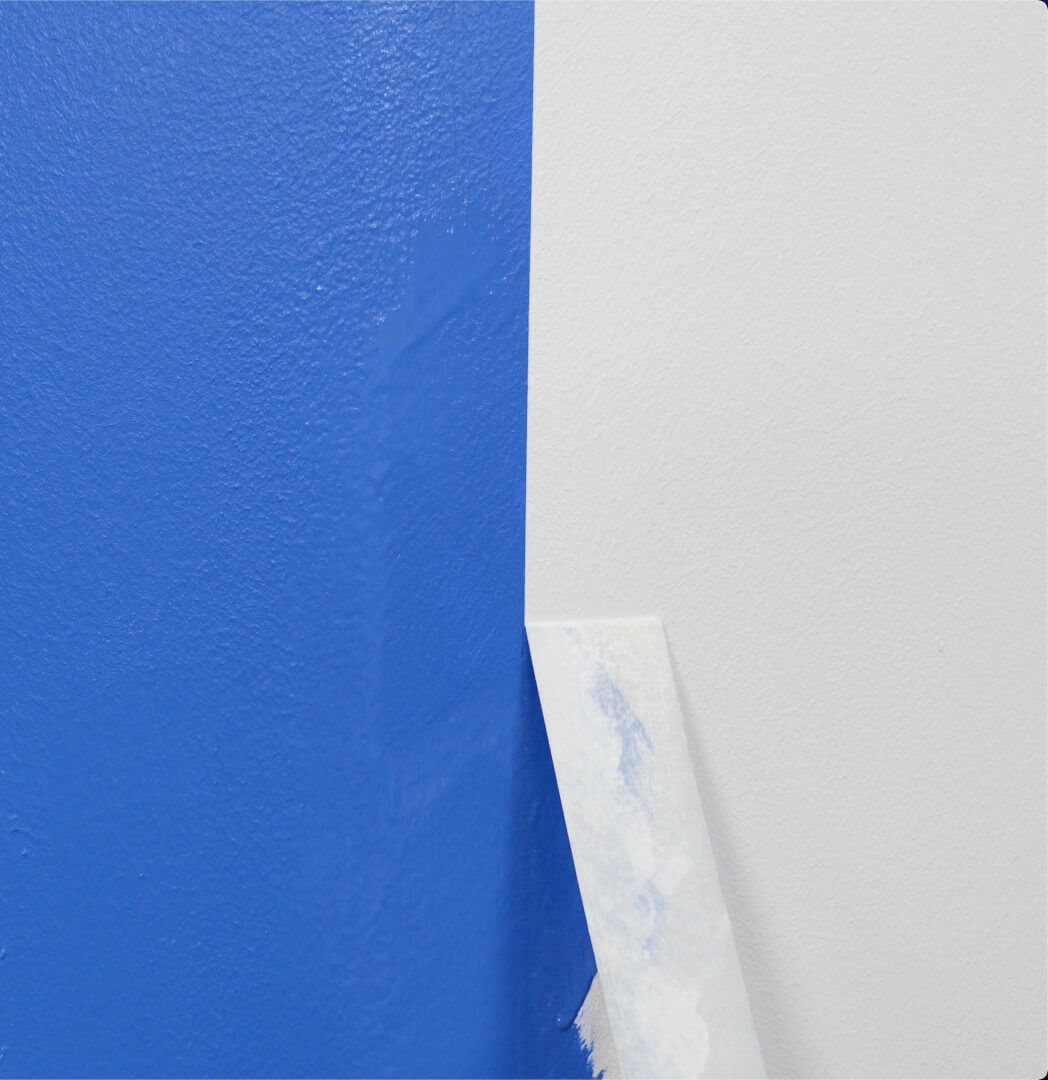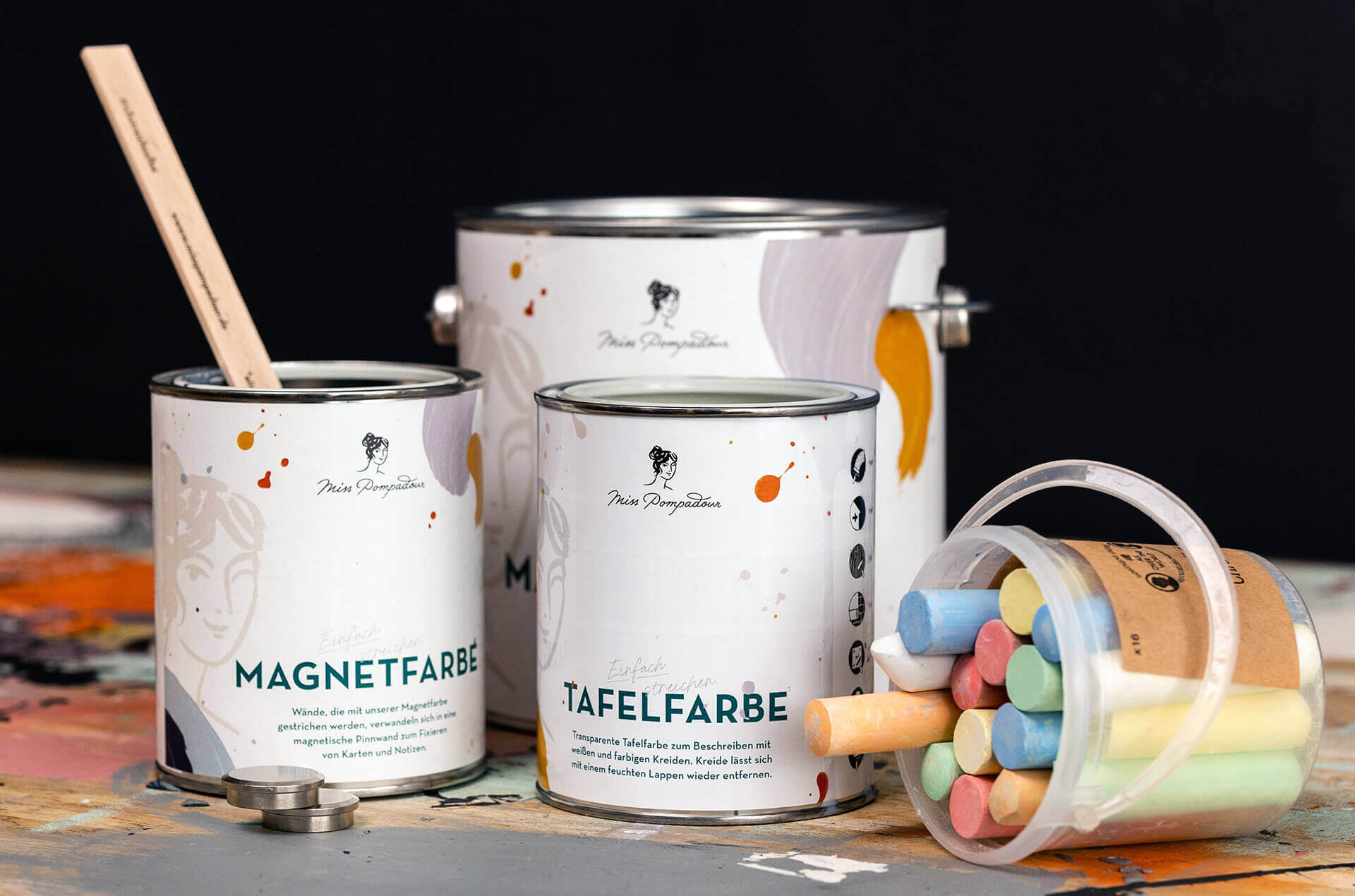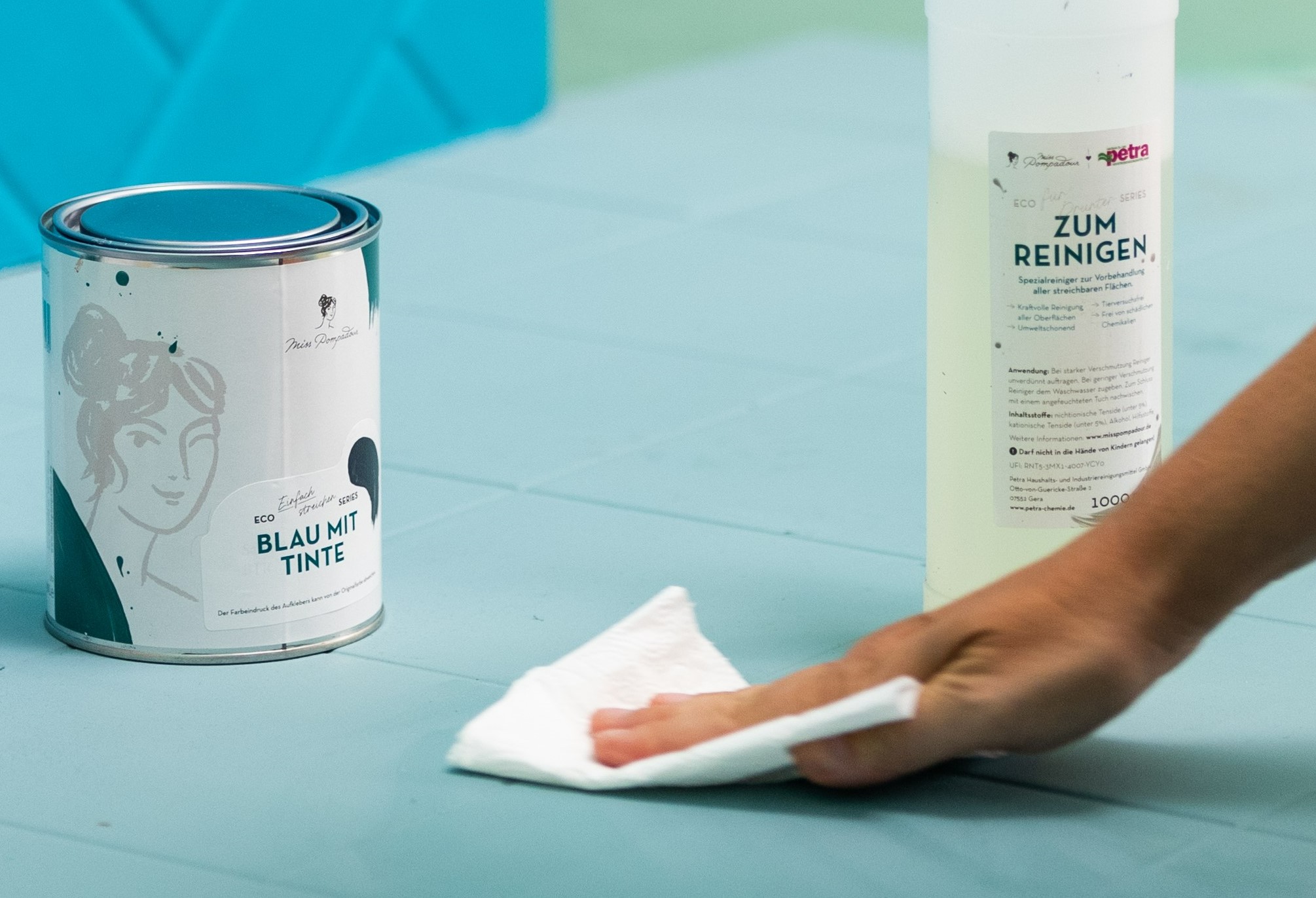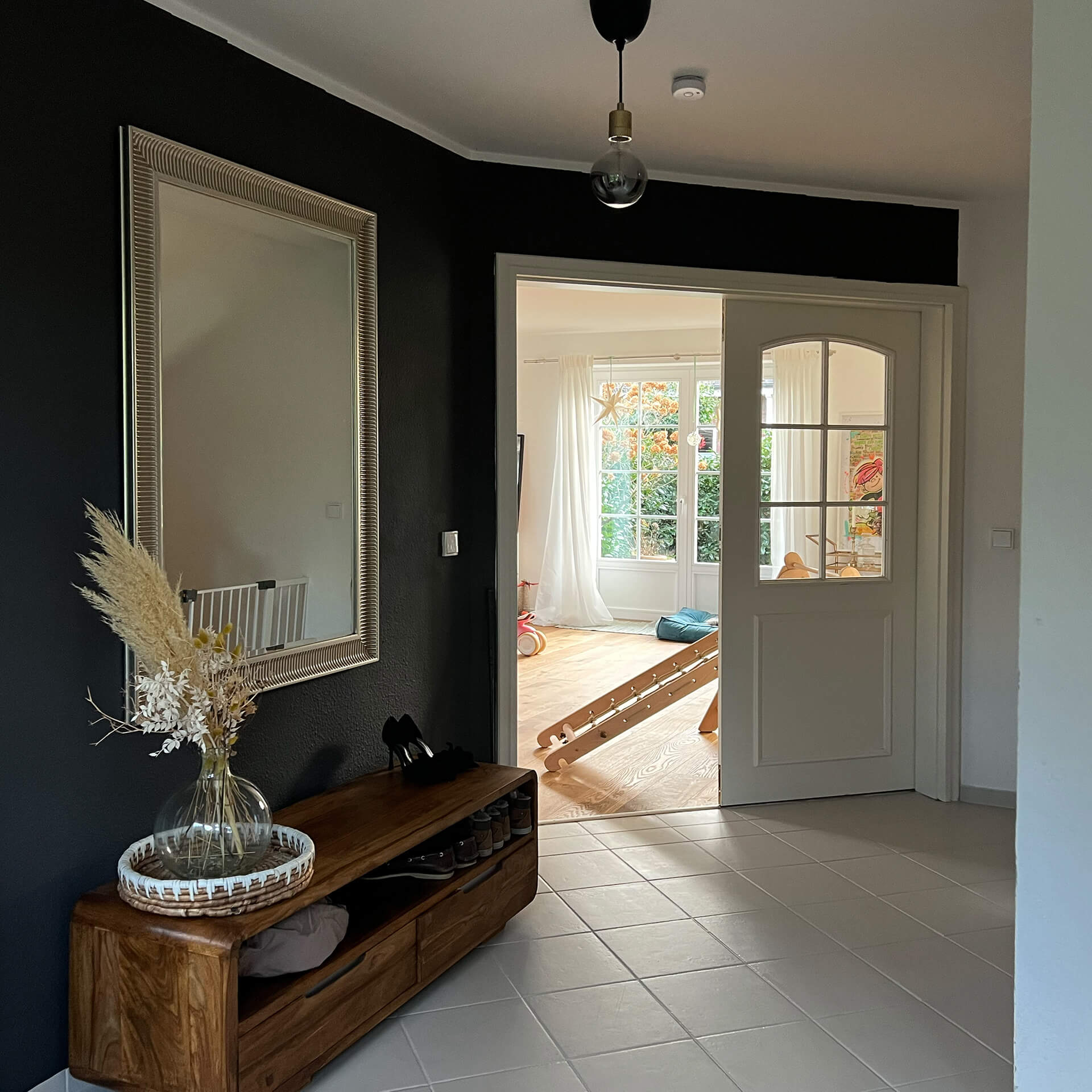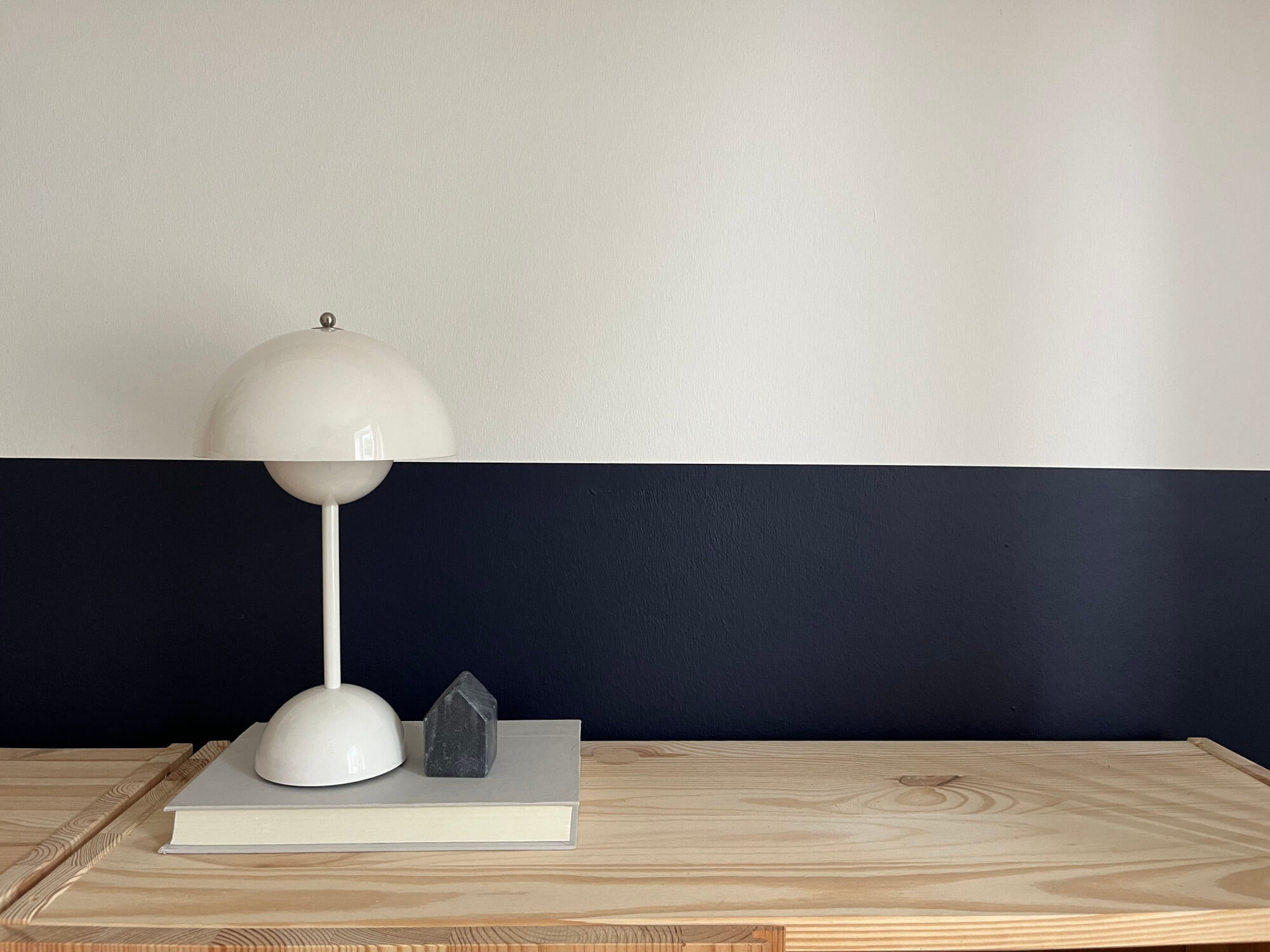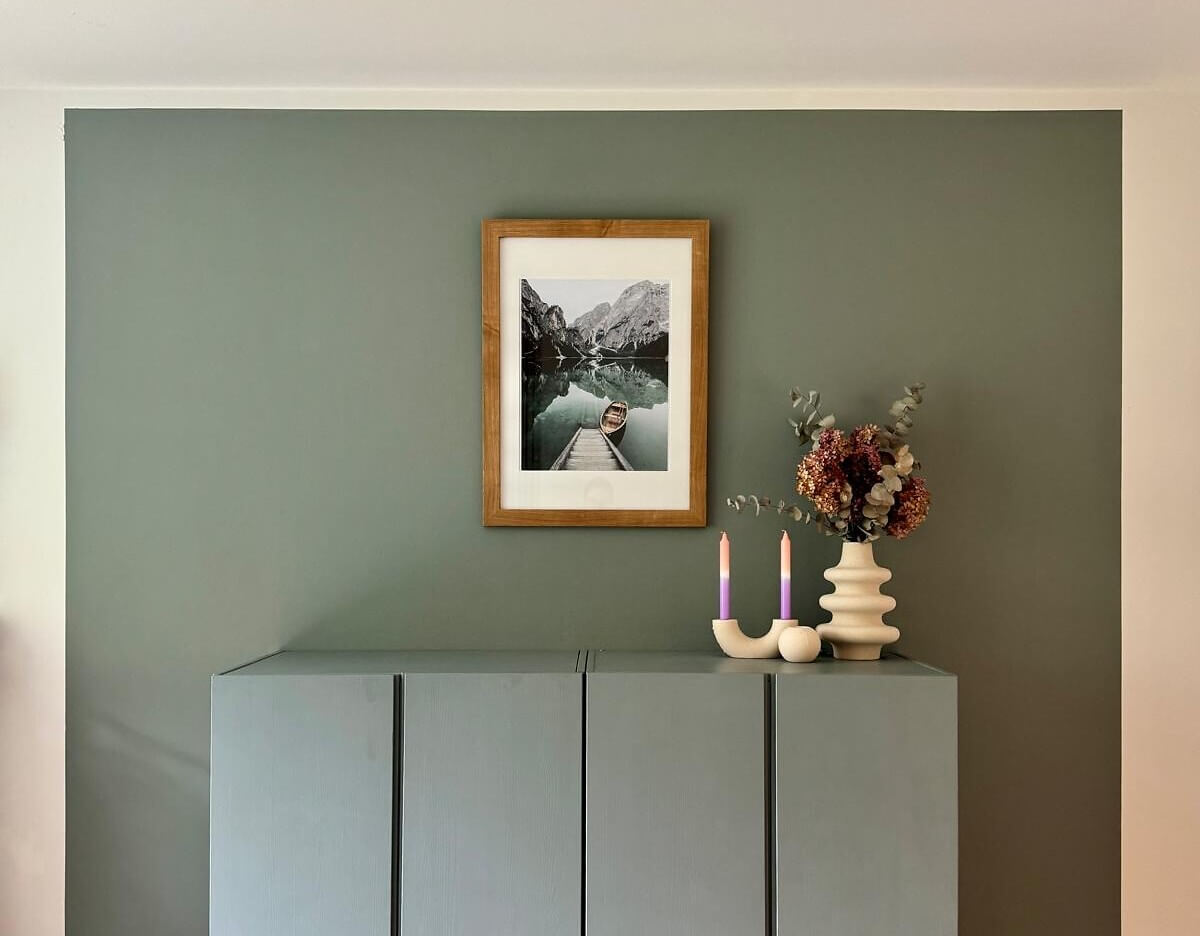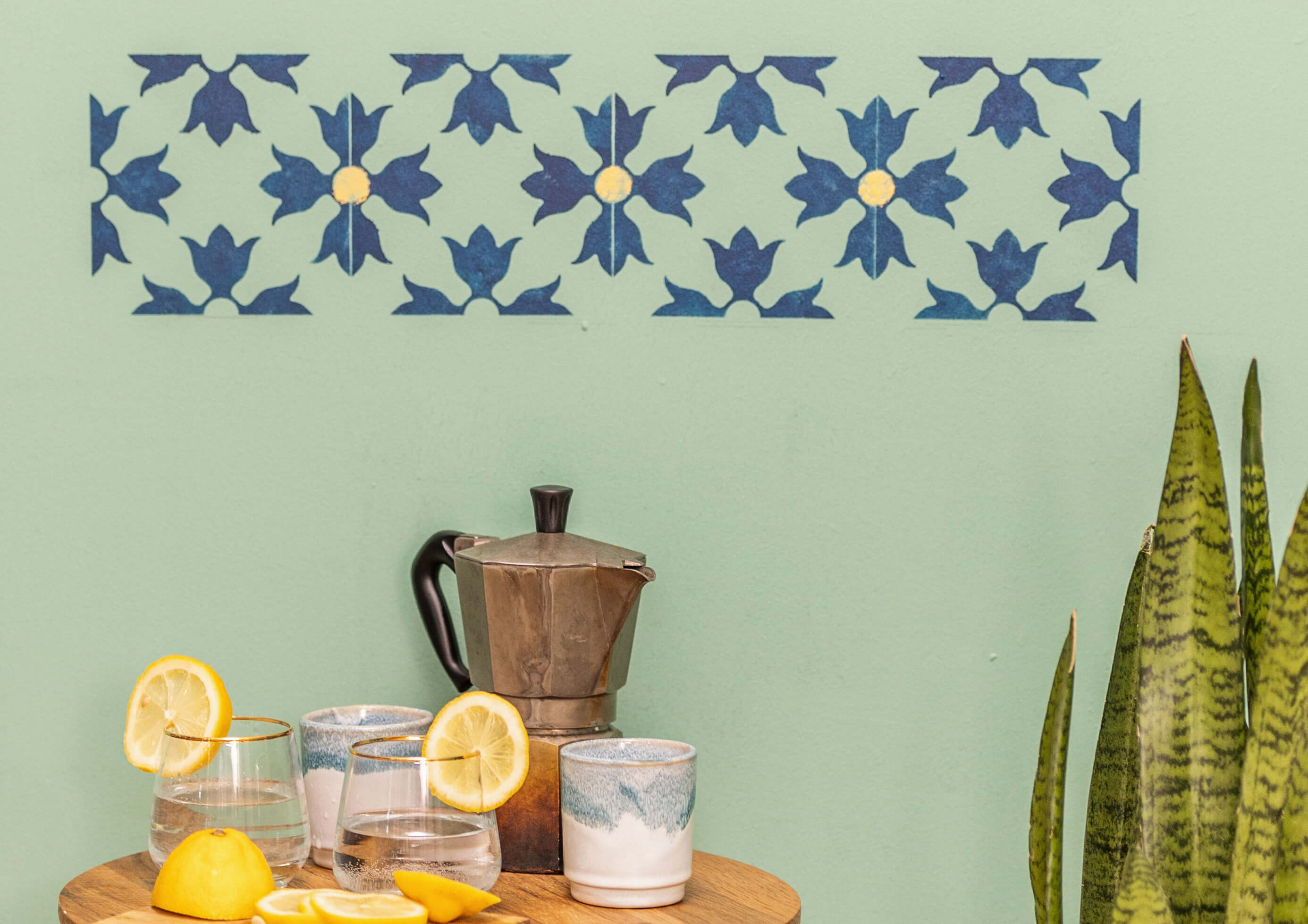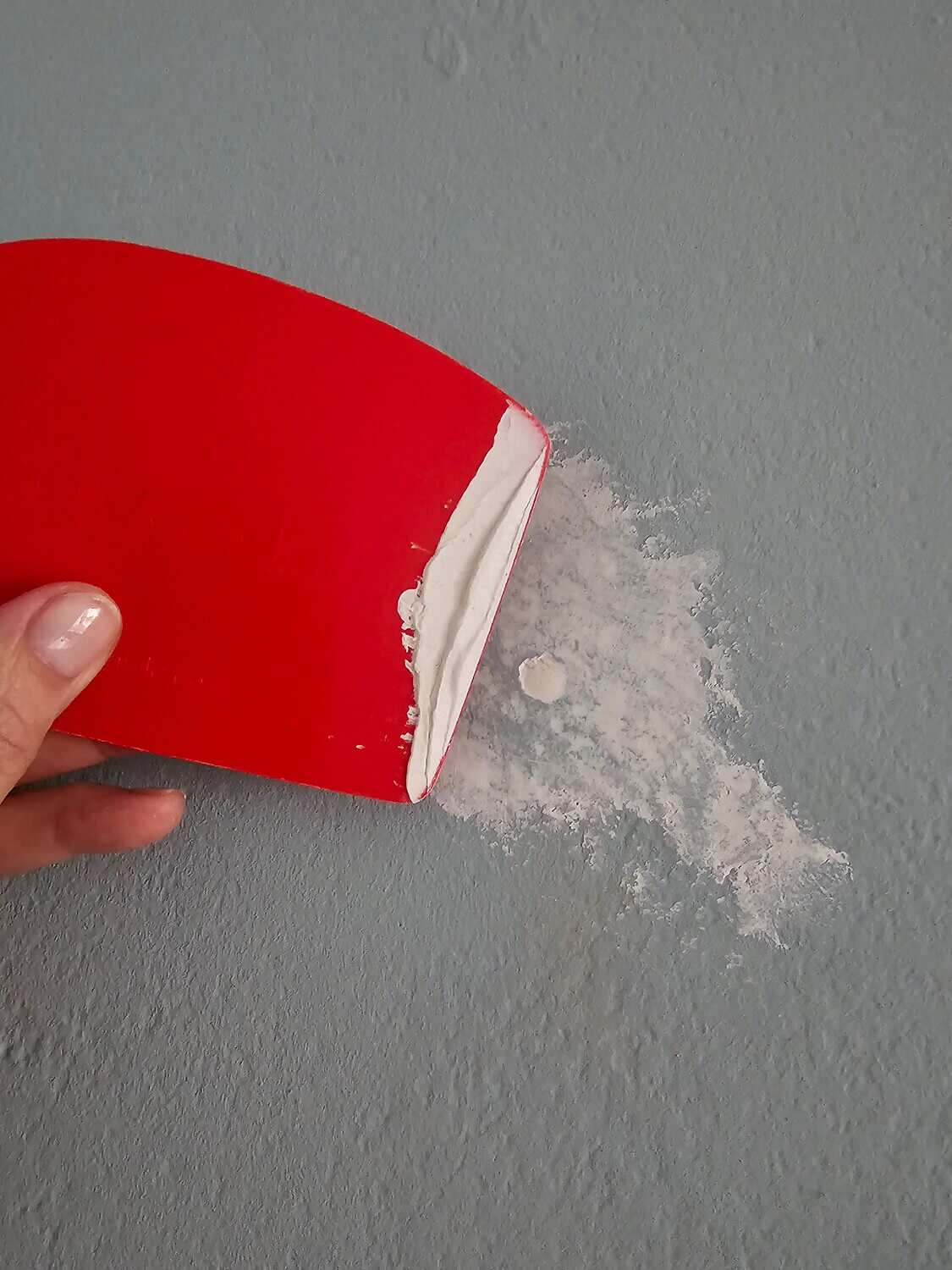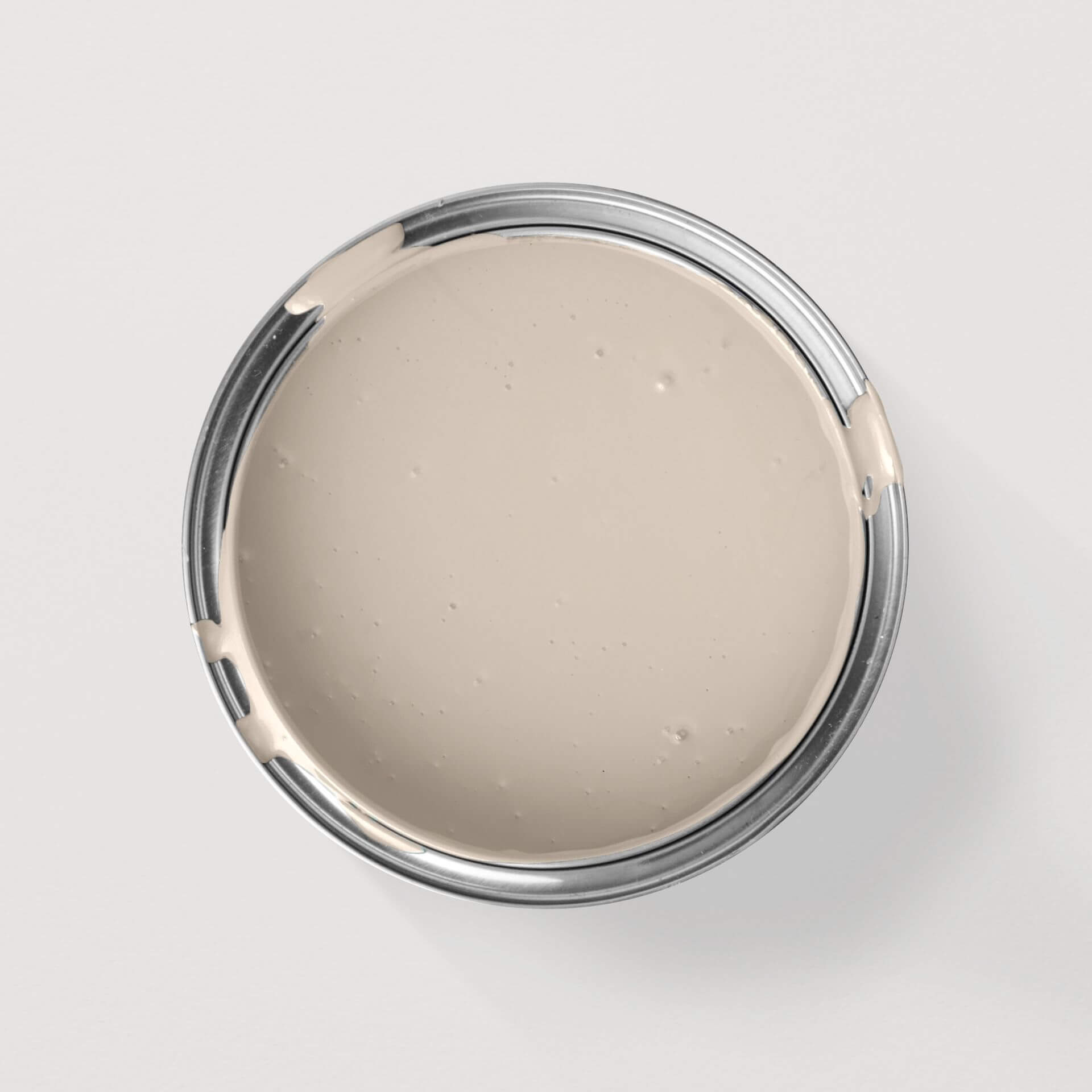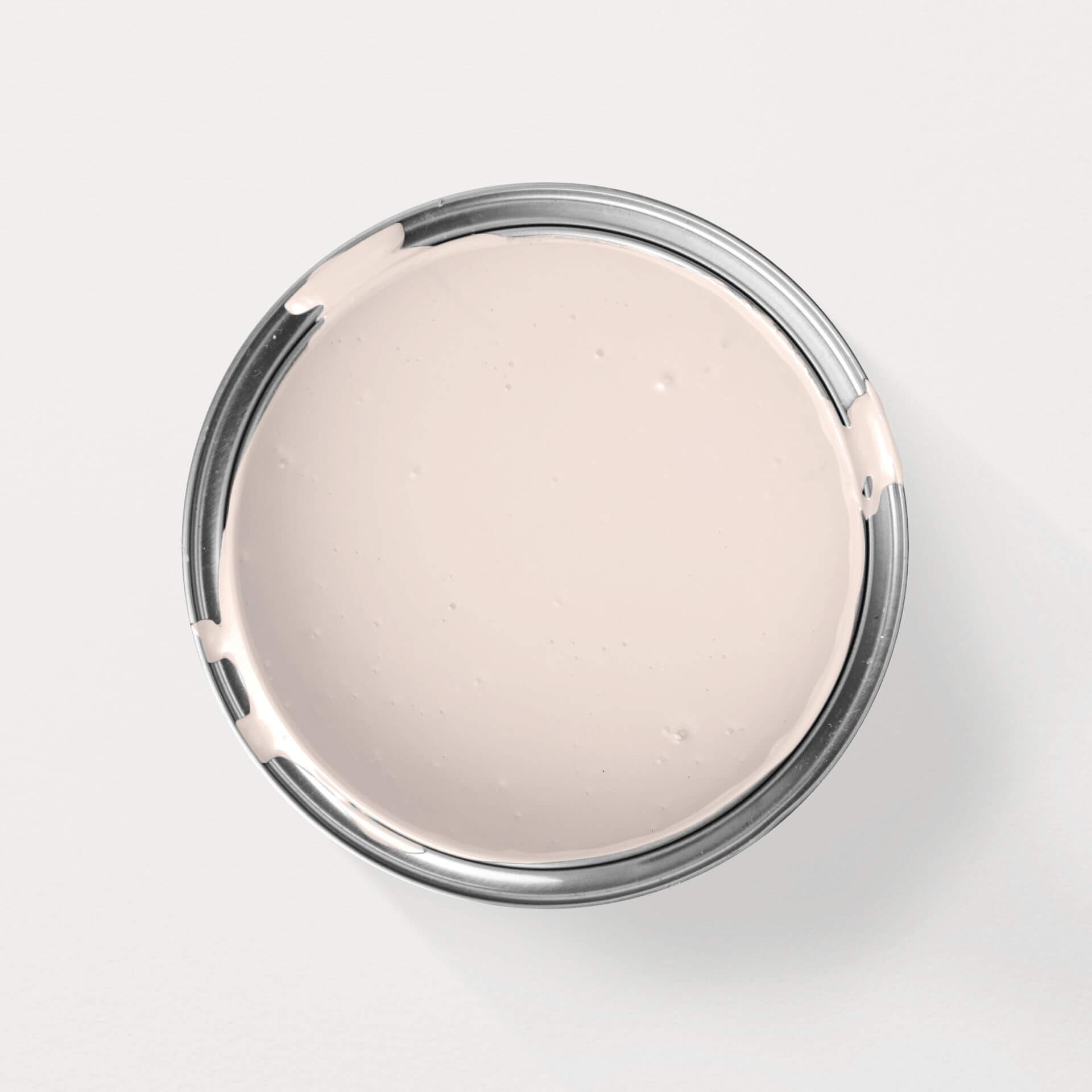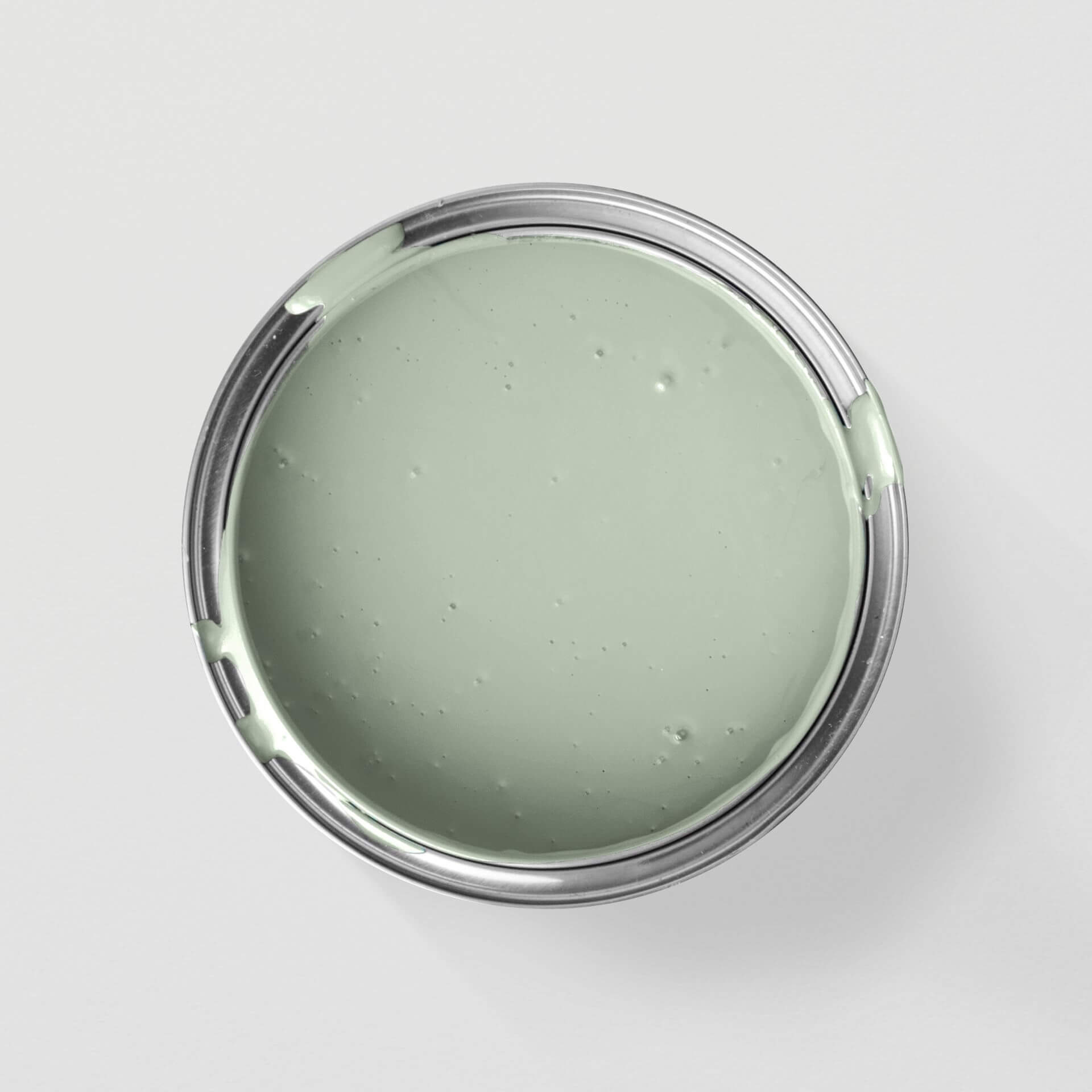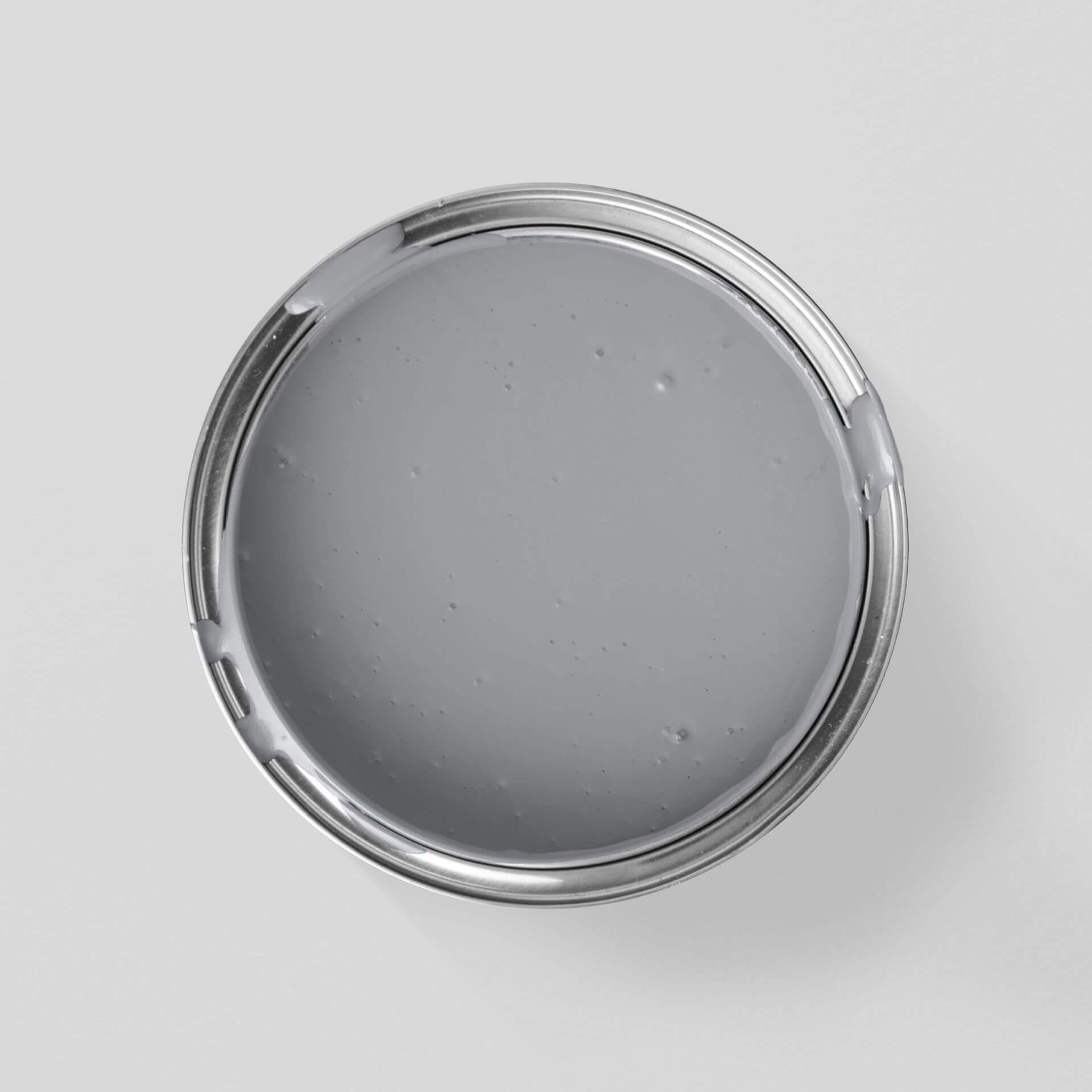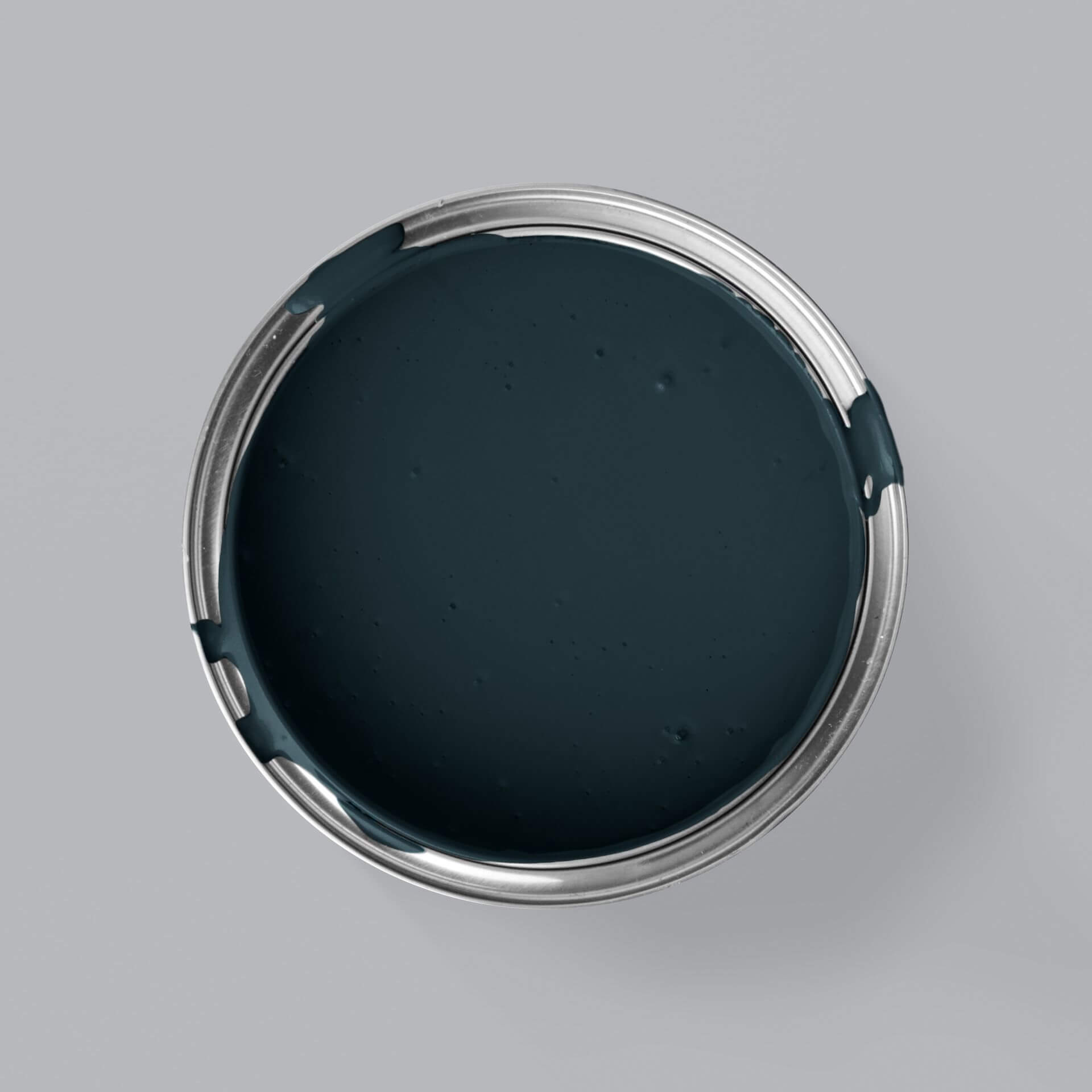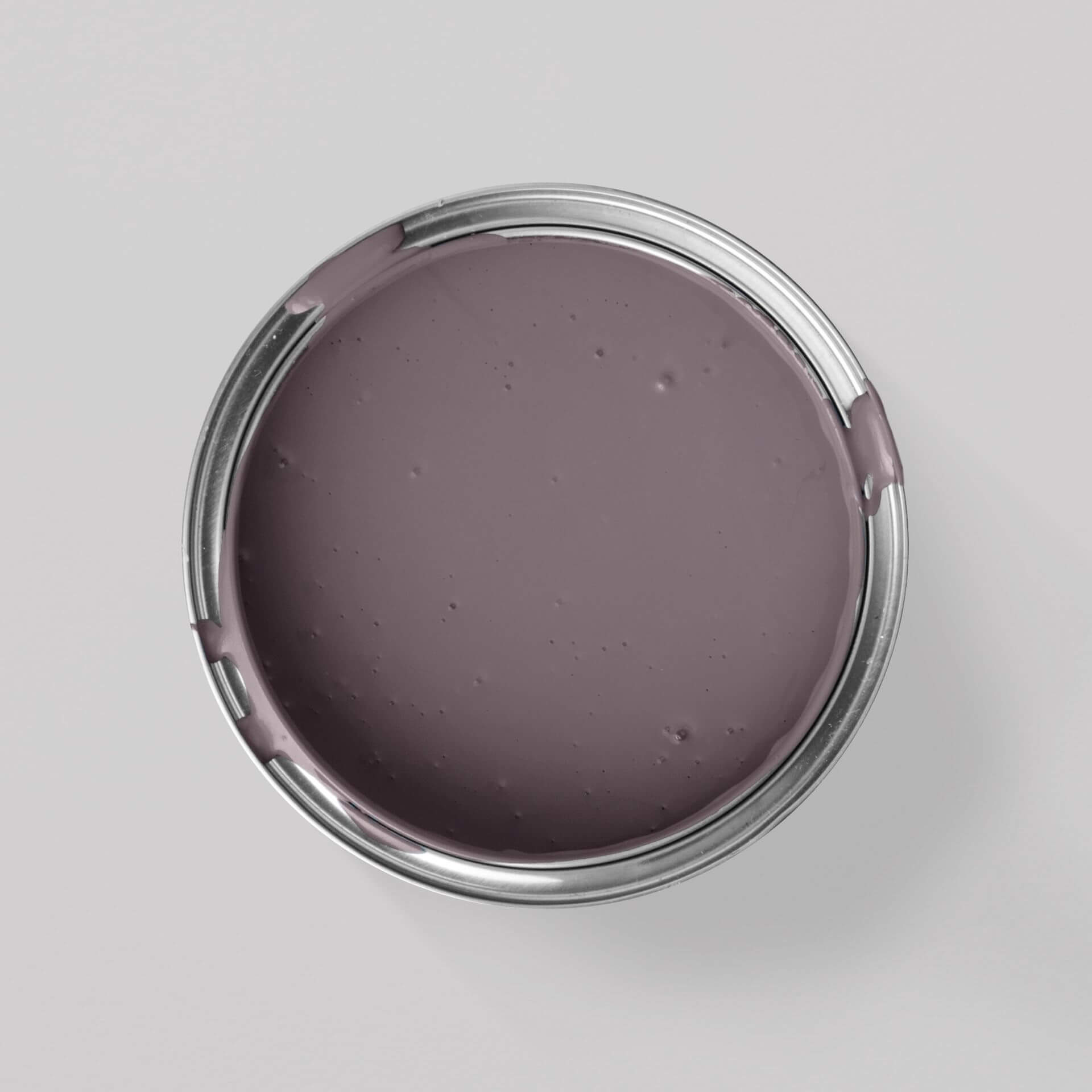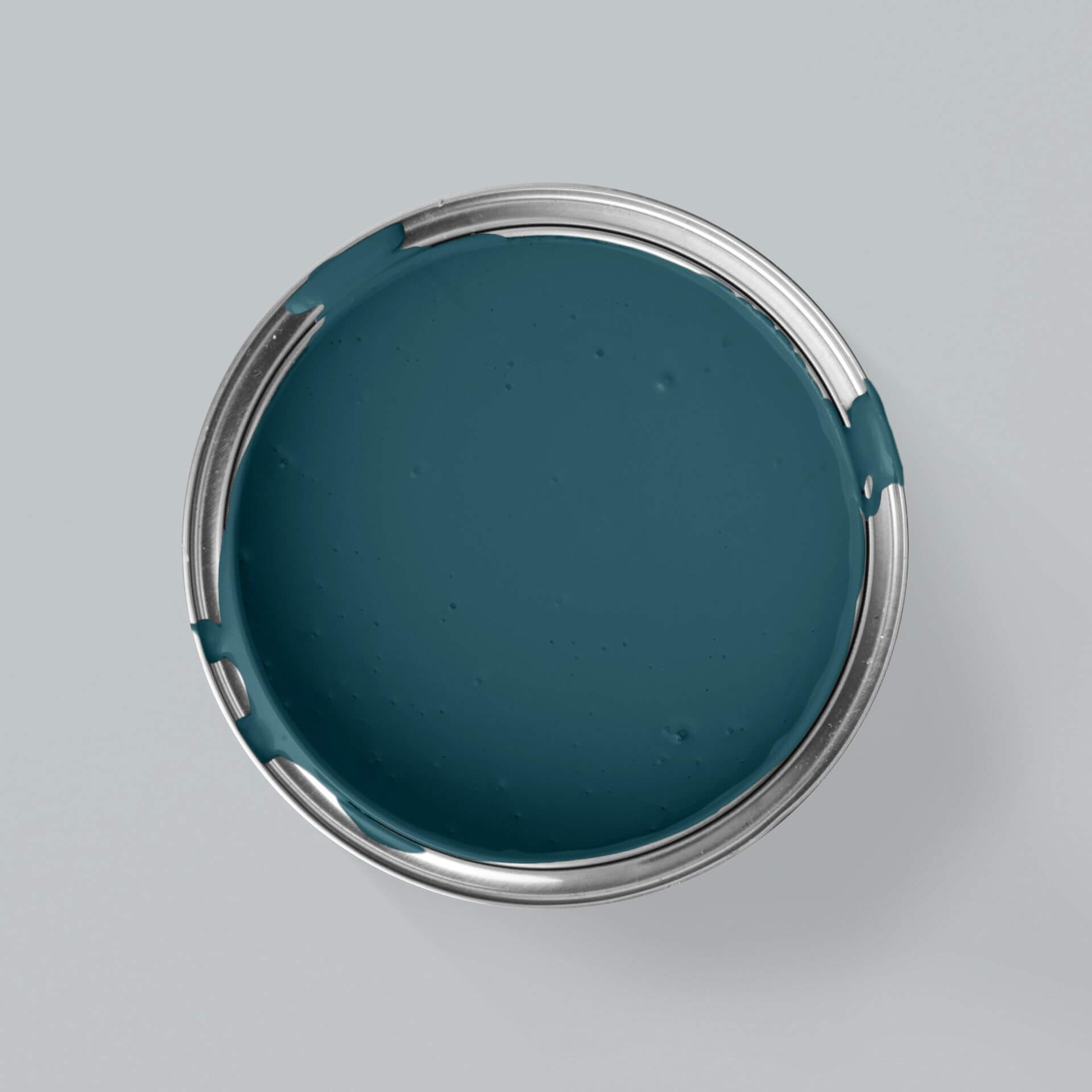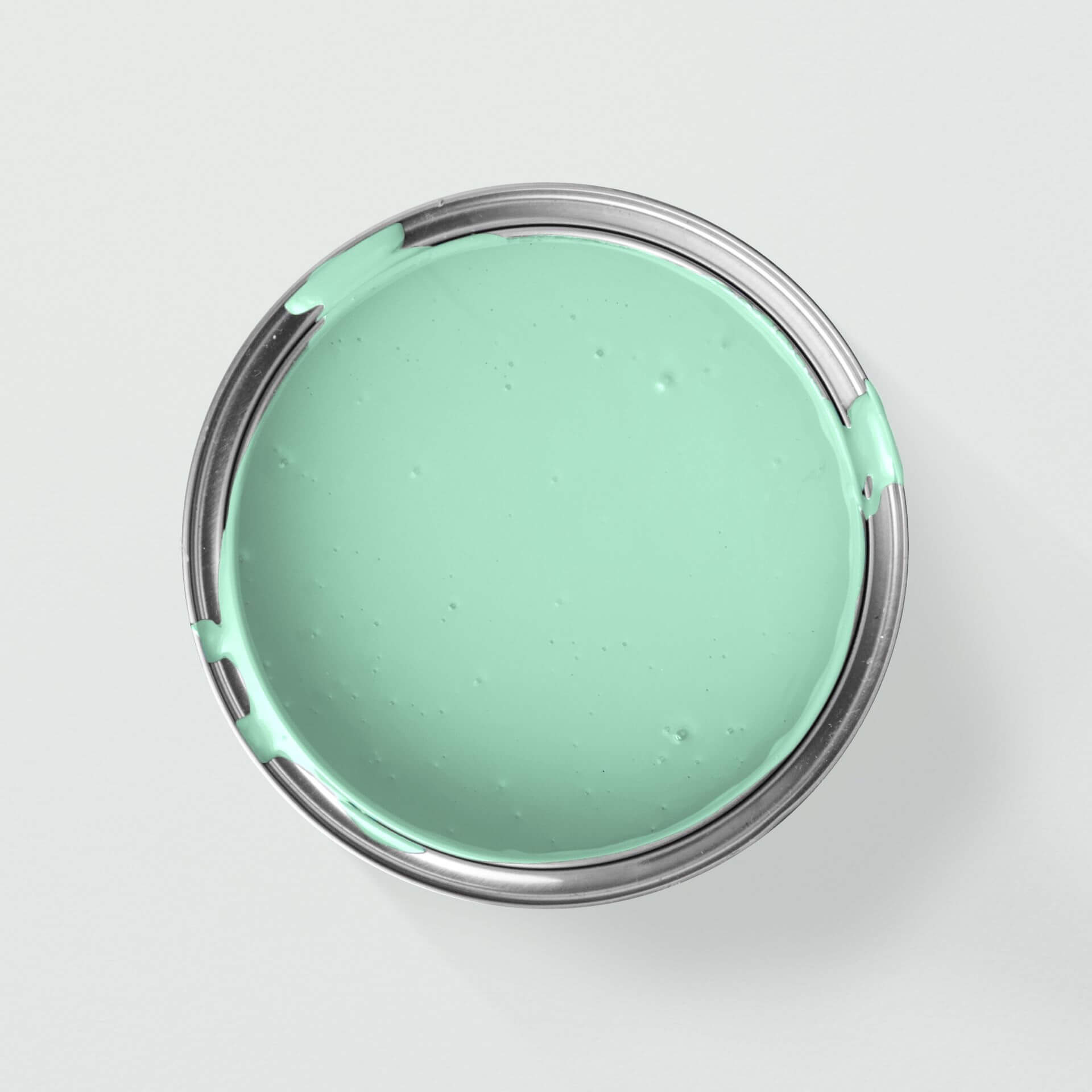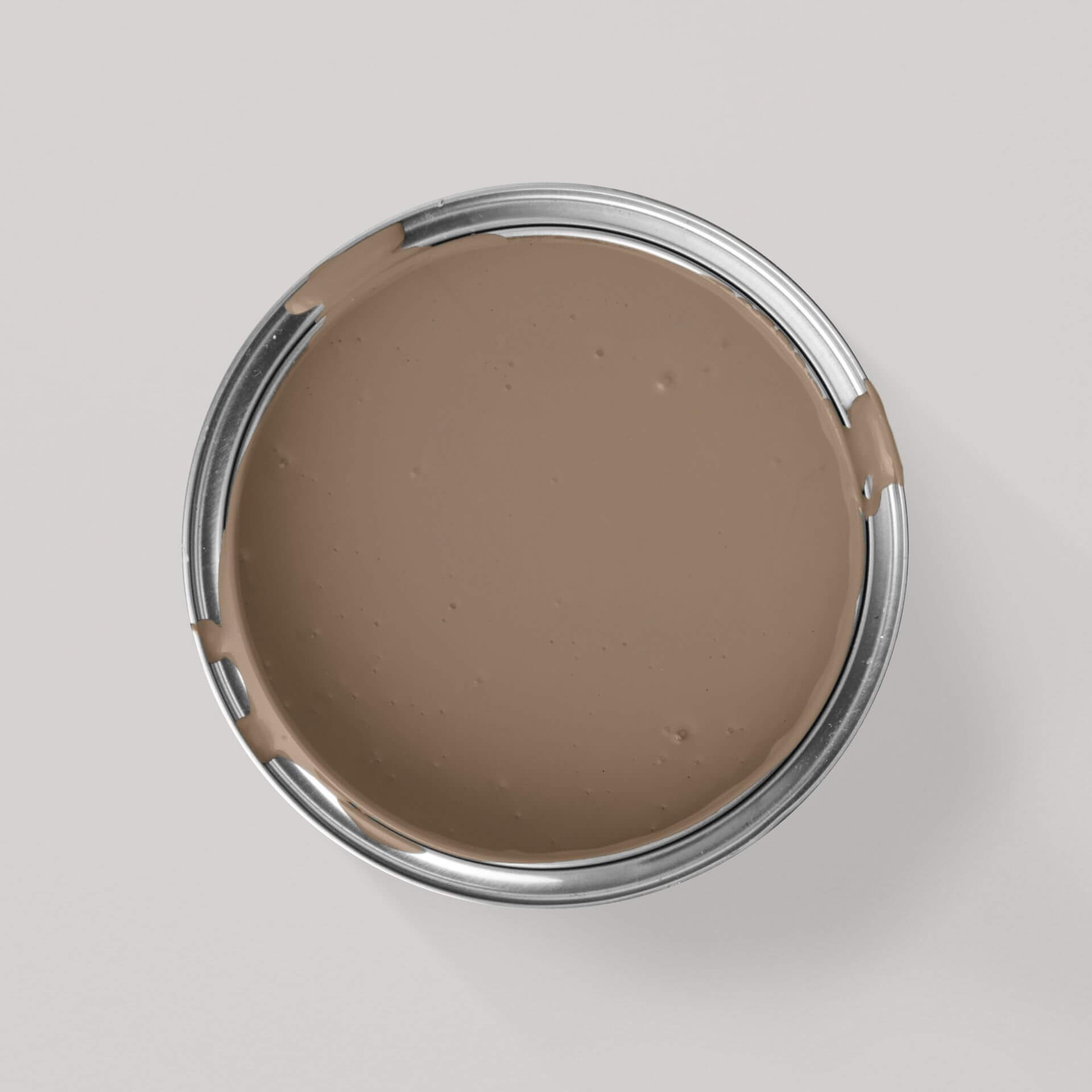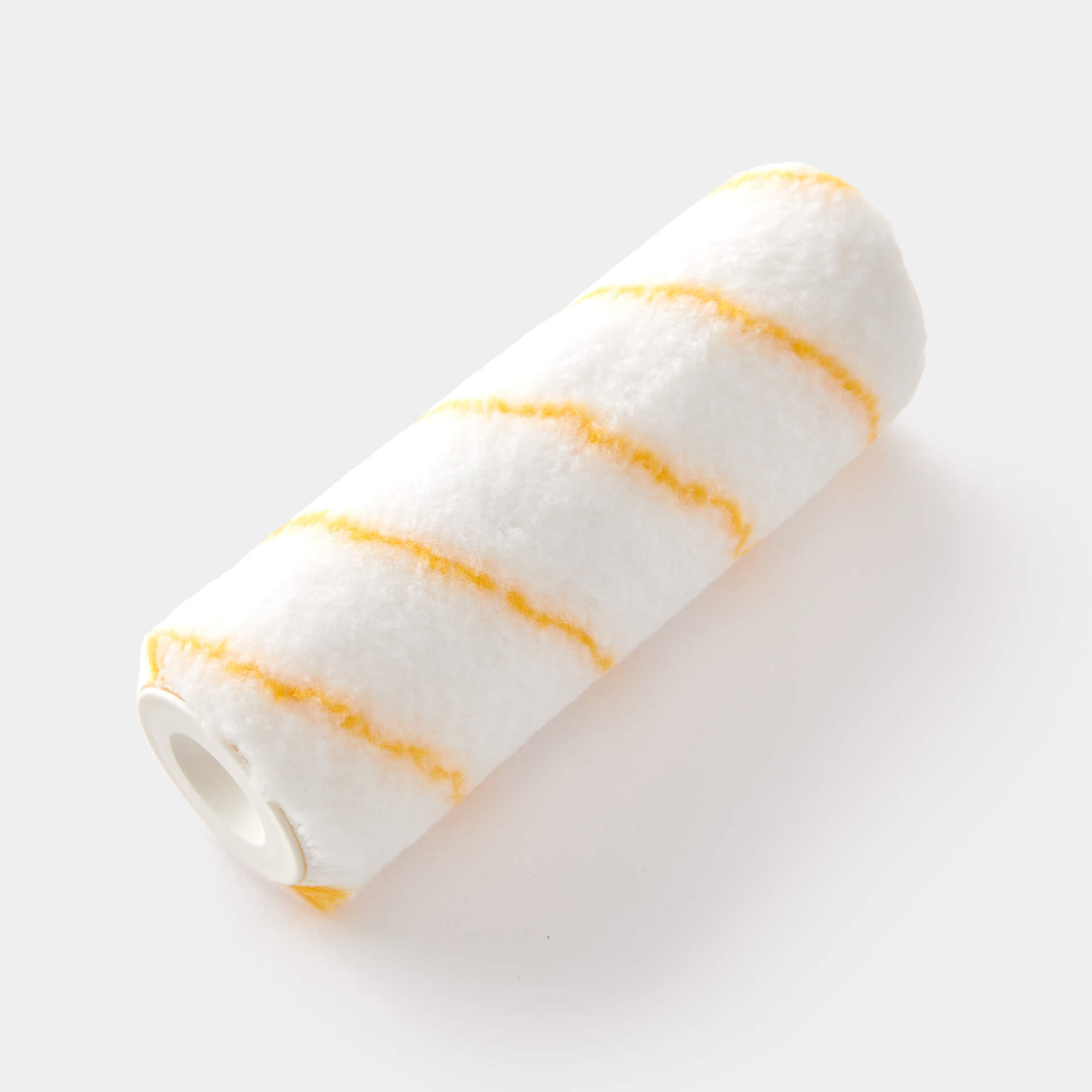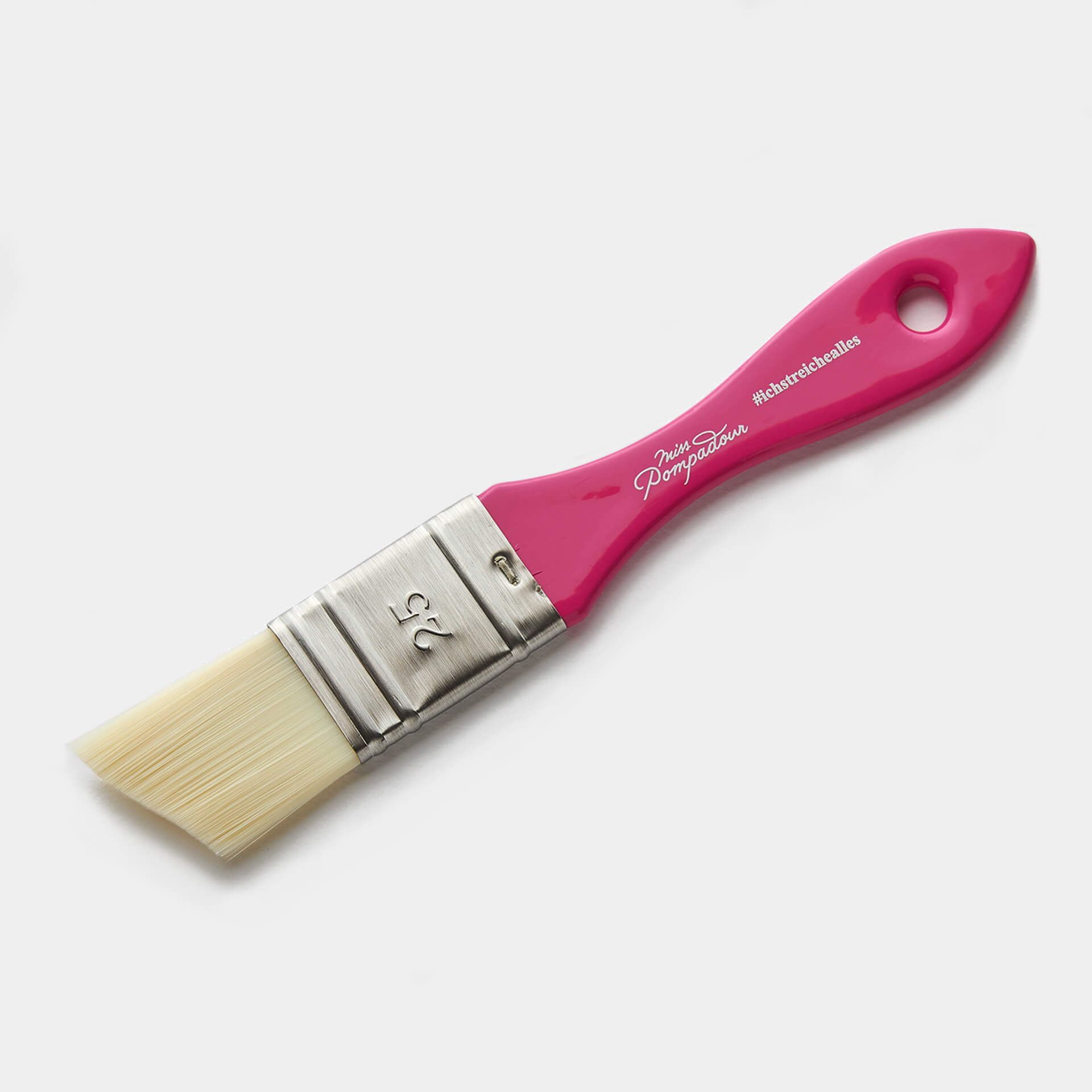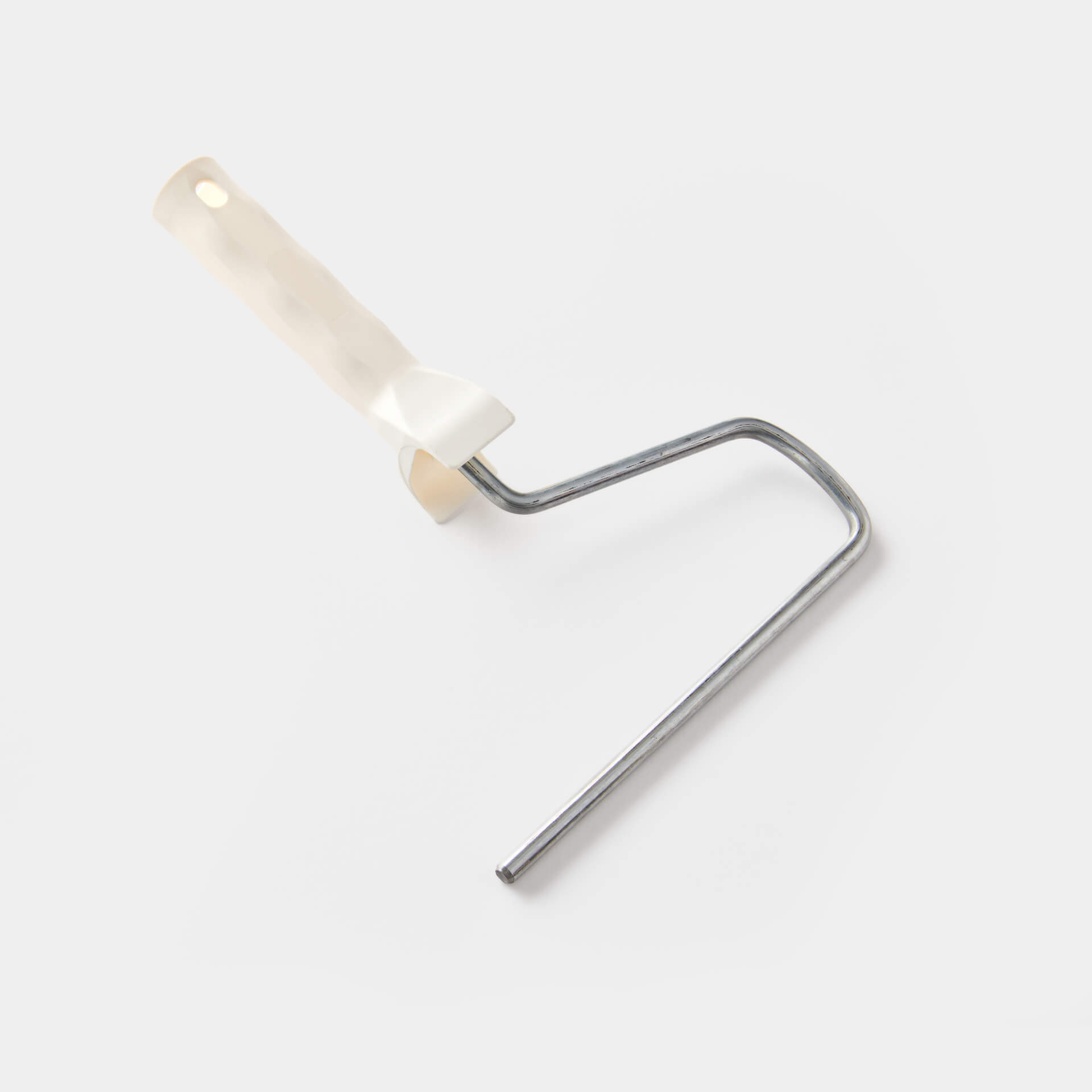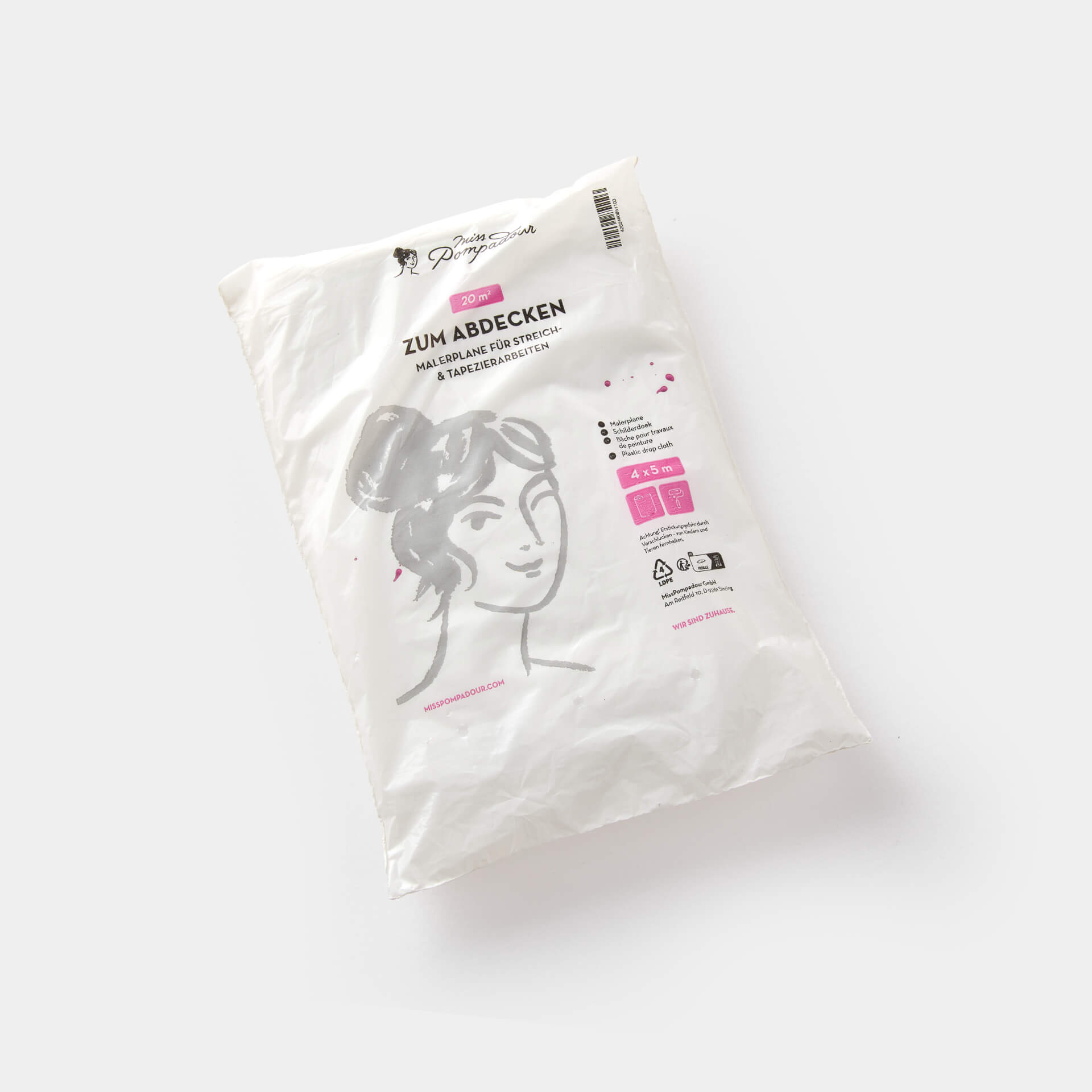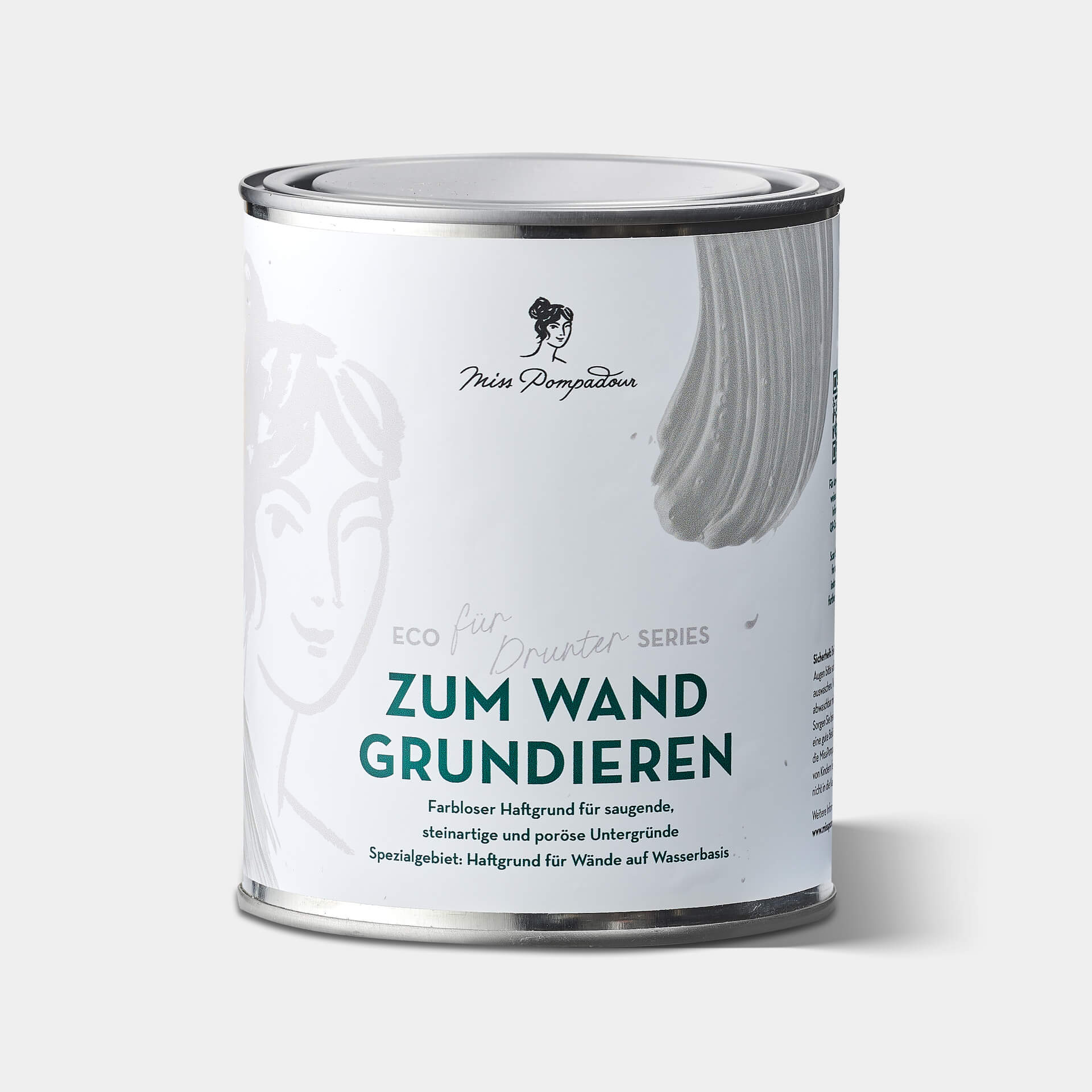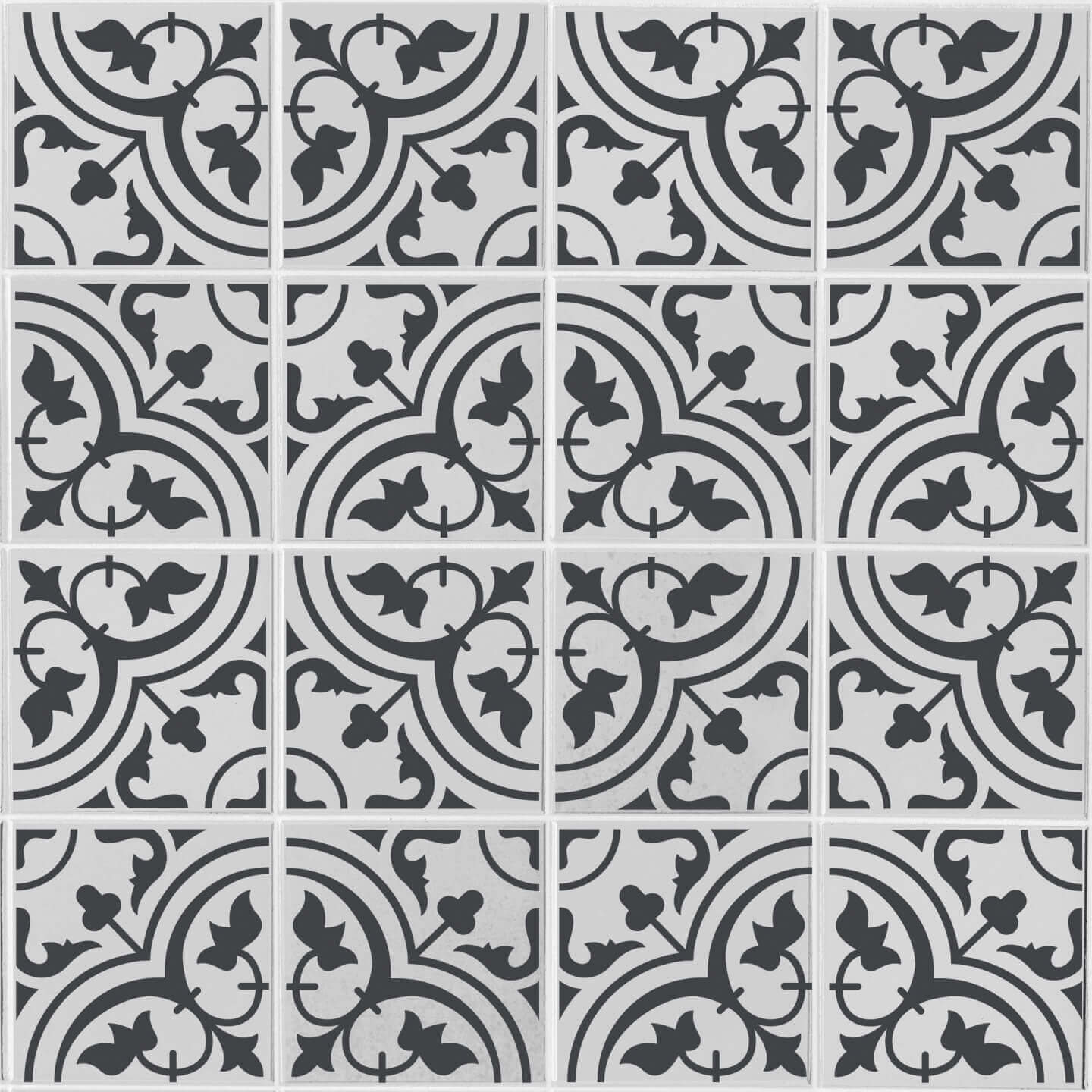Painting Your Hallway - Ideas & Tips
5 min reading time
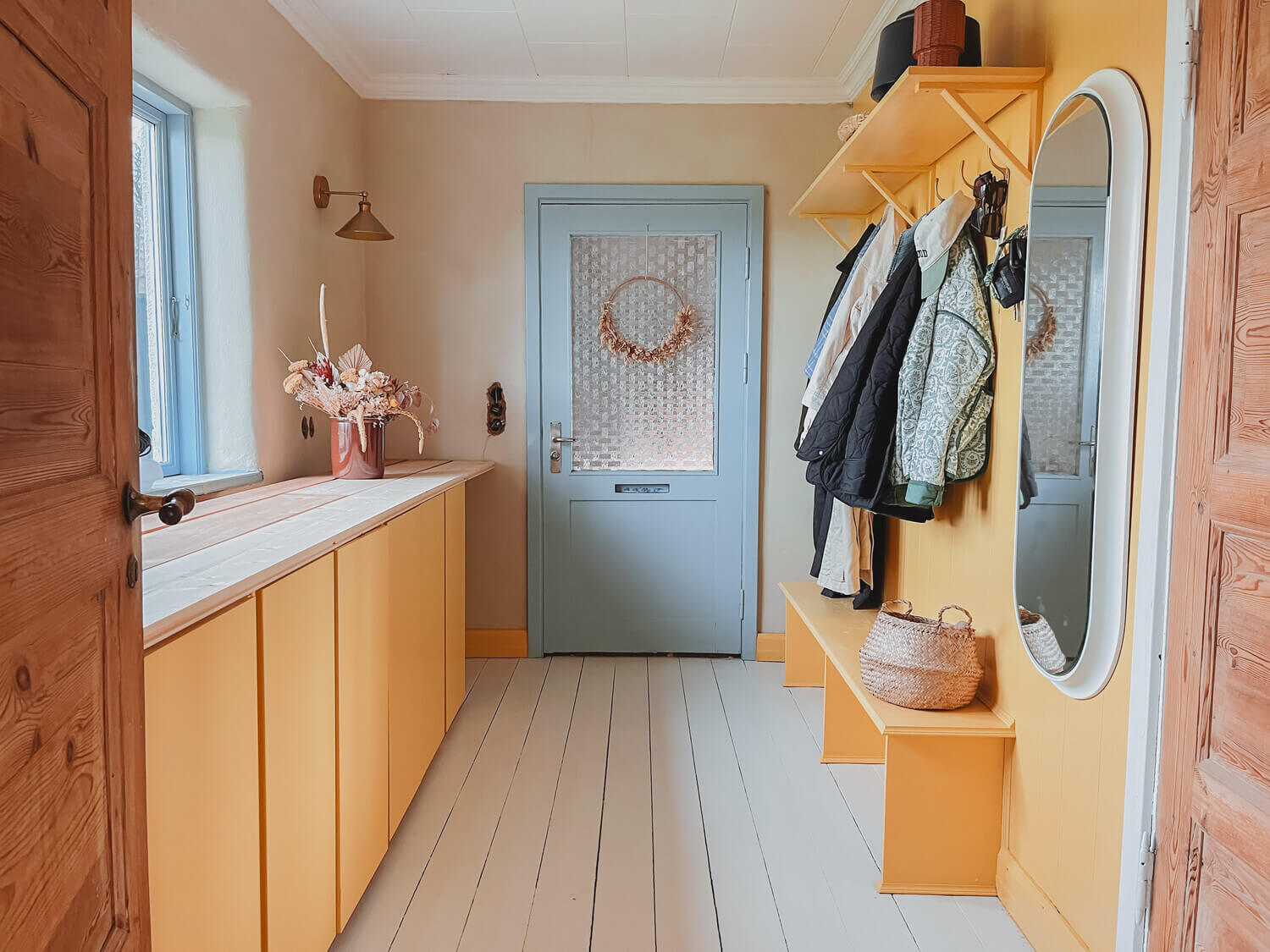
In many flats or houses, the hallway is the first room you enter. It gives a first impression of your home - for you and your guests. It is also often the room where the wardrobe and shoe racks are located. With a new coat of paint, you can give your hallway a modern, friendly and inviting flair in no time.
Table of contents
1. Painting a hallway: Ideas from our community
2. Preparation: How to choose the right colour & paint quantity for your hallway
3. Welcome! The right colours for visually brightening and enlarging the hallway
4. Taping walls properly for different effects
5. Painting a hallway the right way: Instructions from MissPompadour
6. FAQ: Frequently asked questions
7. Material and accessories for painting the hallway
Paint the hallway: Ideas from our community
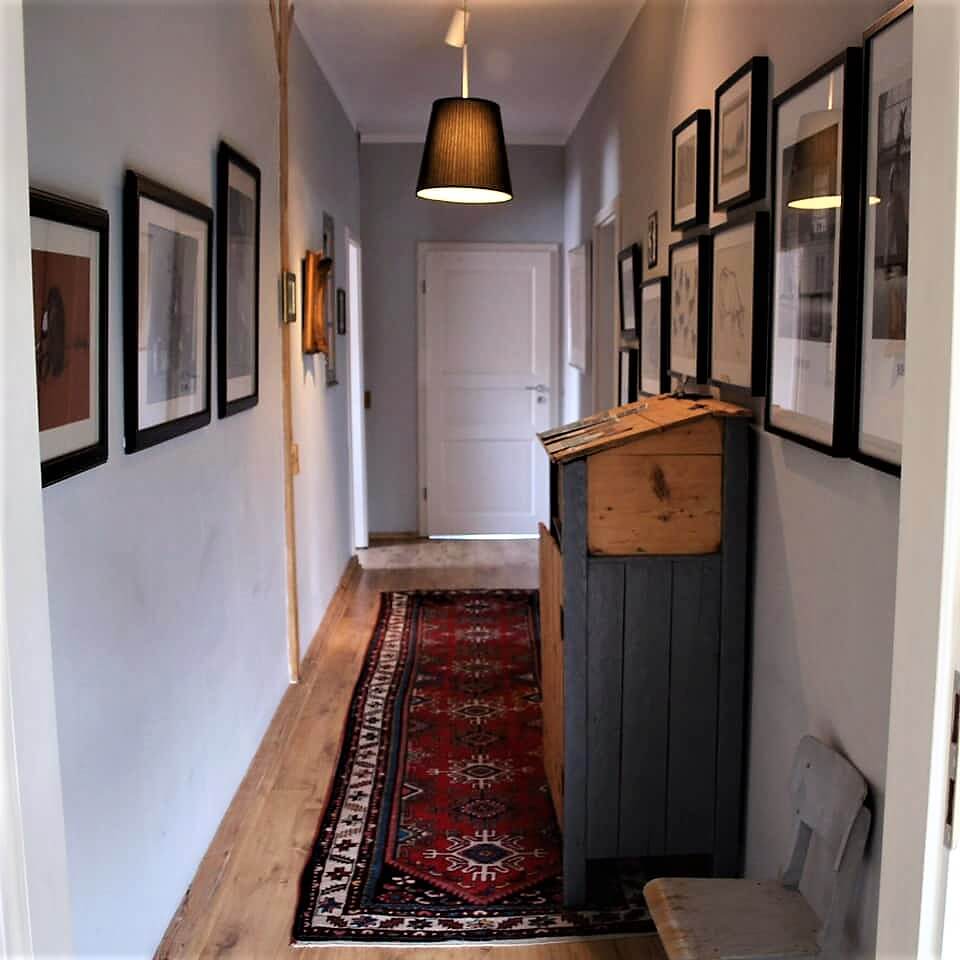
Before
- The customers wanted a new colour concept.
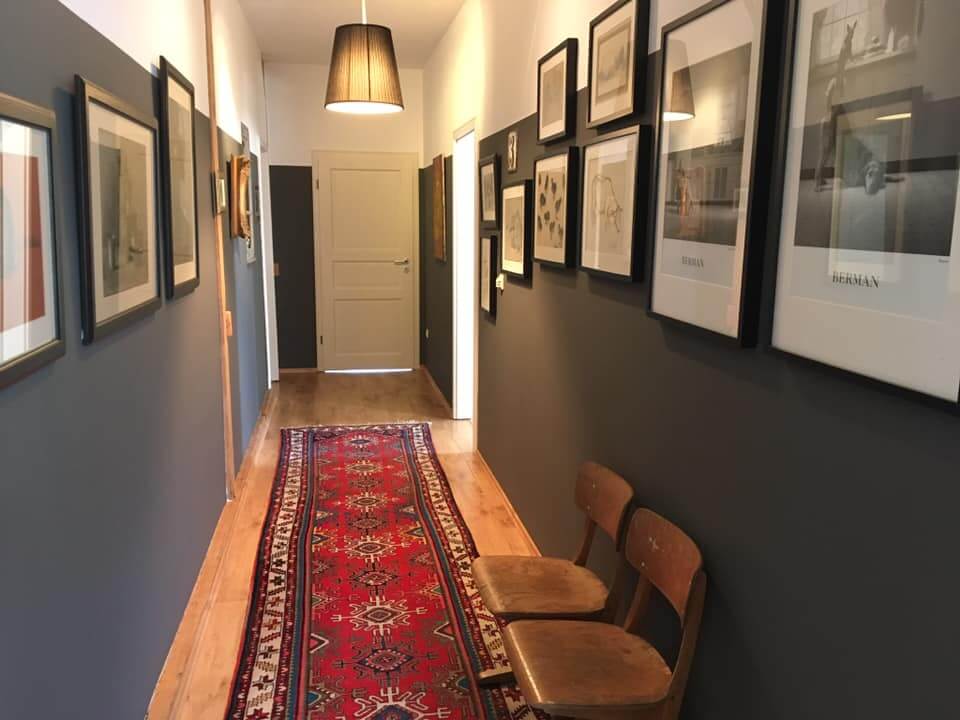
After
- The two-tone wall design gives the hallway a noble flair.
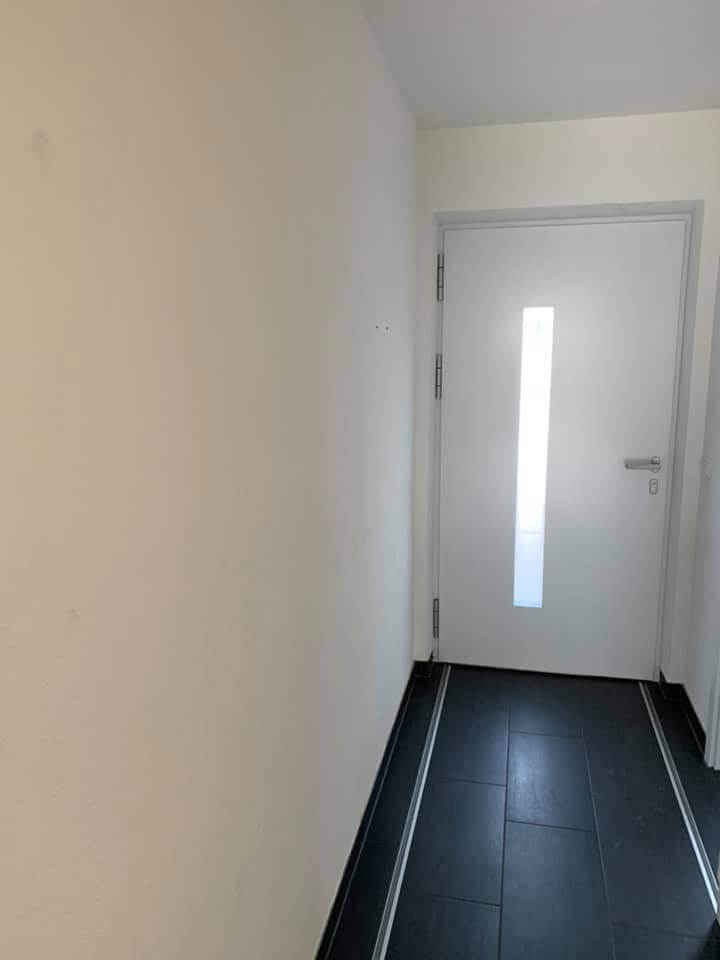
Before
- The hallway looked very cool and was in desperate need of some colour!
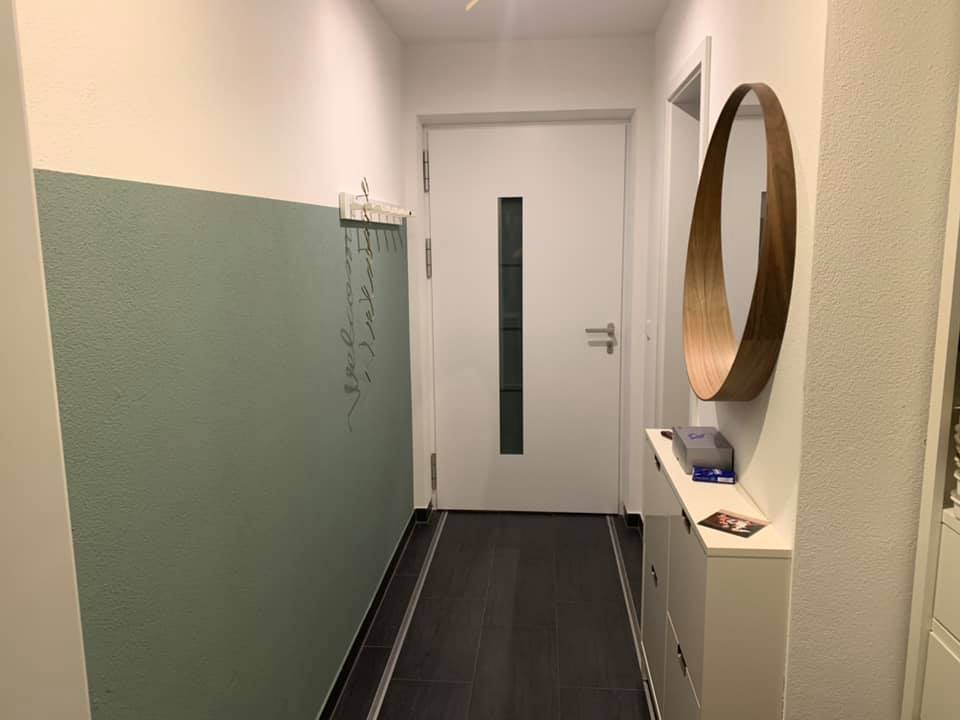
After
- Painting the room with the Mediterranean colour shade makes it look much more inviting.
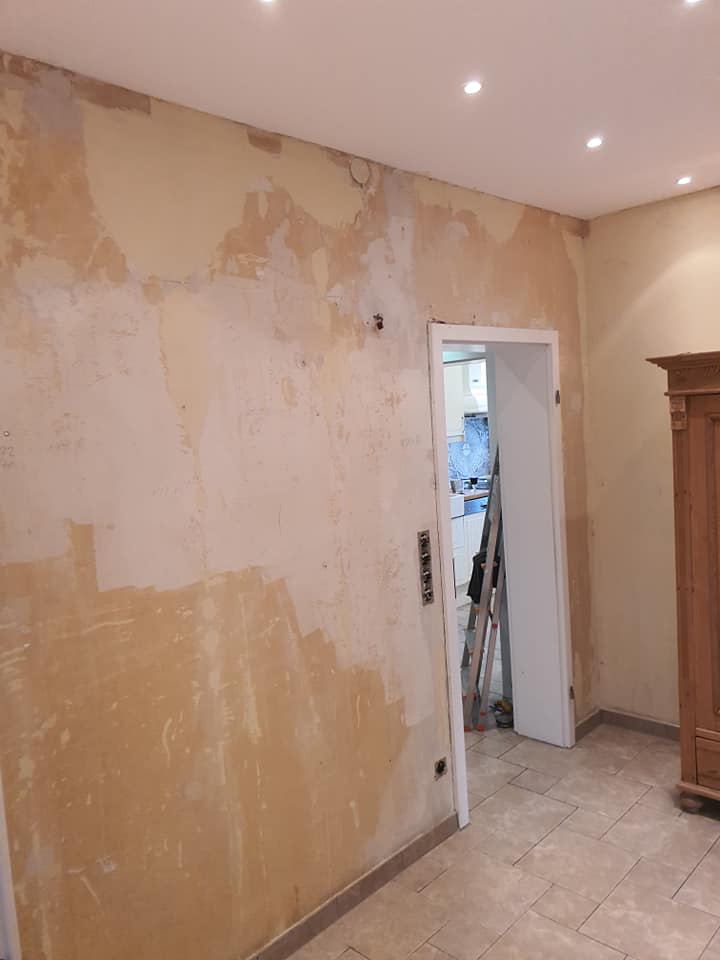
Before
- A complete renovation was needed here!
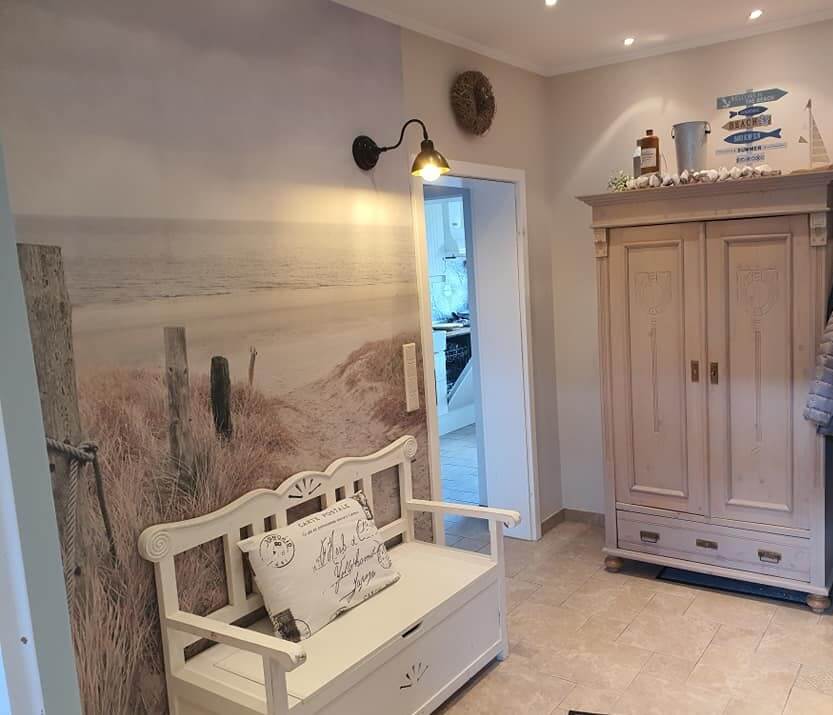
After
- The new beach look gives the room cosiness. To feel good!
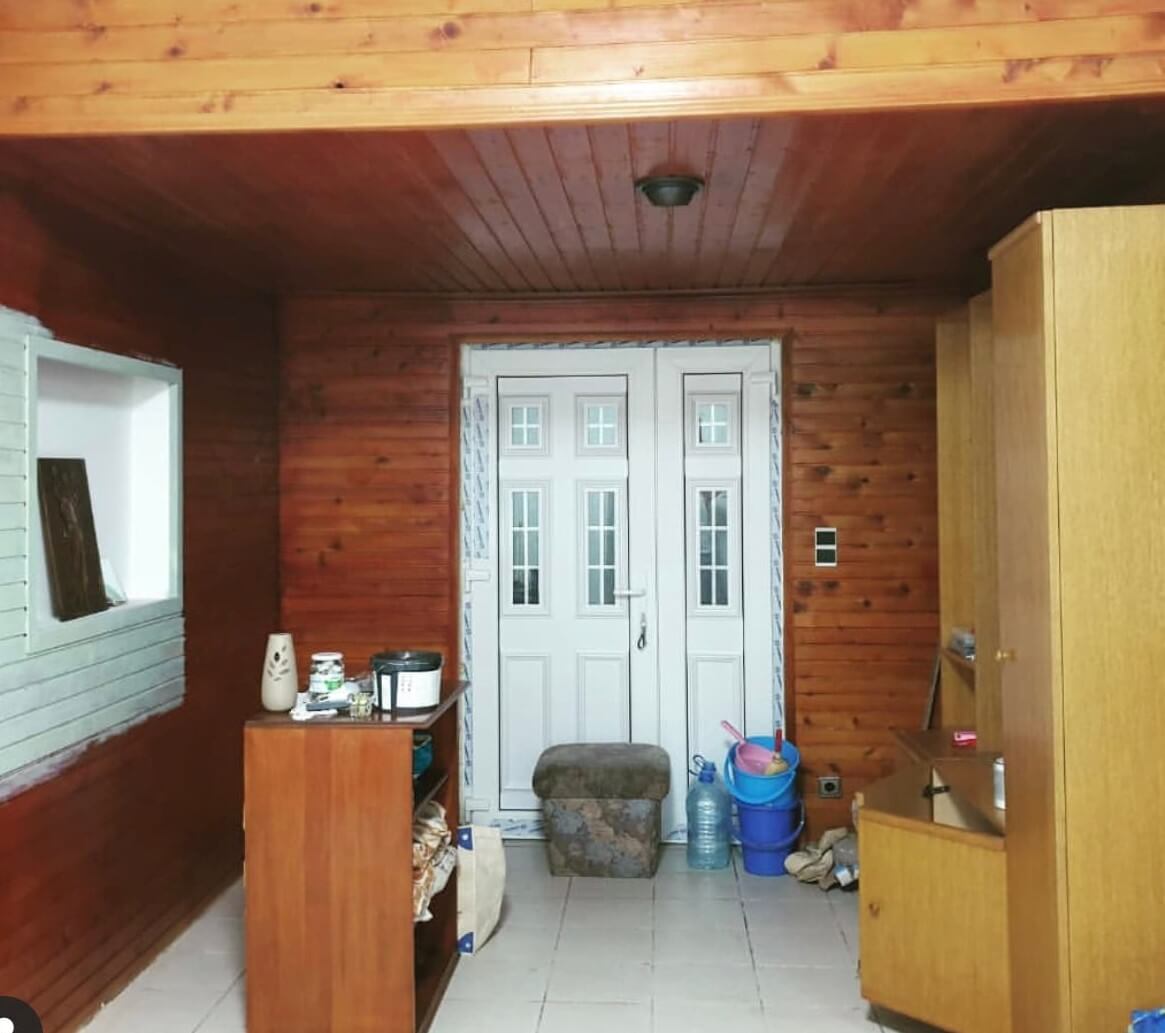
Before
- The old wood panelling looked very oppressive and did not match the style of our clients.
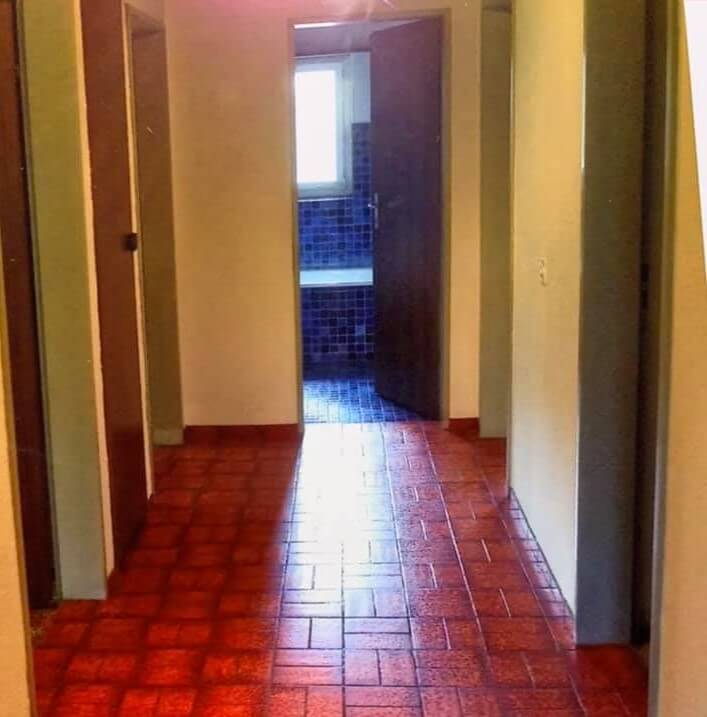
Before
- The old entrance area was clearly getting on in years.
Preparation: How to choose the right colour & paint quantity for your hallway
Corridors are subject to a lot of wear and tear compared to other rooms - this also applies to the walls. Therefore, you should use hard-wearing pain ts for painting or you can add a "protective layer" to the paint in the last step. In the following, we have summarised which colours are particularly suitable for painting the hallway:
Colour quality
- For hallways, we especially recommend our MissPompadour - The Functional Wall Paint. It creates a pleasant matt surface and is very robust and washable. If you are assuming that the walls will be subjected to very heavy loads, this is the colour of choice!
- But also our MissPompadour - The Valuable Wall Paint and our LittlePomp Chalk Paints are very resistant and can be applied well in your hallway.
Primer
If your walls are contaminated with old oil, soot or ink stains, it makes sense to apply a primer coat of stainblock. This also applies if you want to paint highly absorbent walls, such as plasterboard or fresh plaster, or if you are painting over wallpaper
The following products are ideal for a primer:
- To Block - MissPompadour Stainblock: Prevents stains and odours from escaping.
- MissPompadour - To Prime Walls: Perfectly prepares highly absorbent substrates for painting.
Paint quantity
For each colour you will find a paint calculator in the shop. It shows you exactly how much paint you need for how much surface area. All you have to do is enter how many square metres you want to paint and select the appropriate surface from the list. You will always find the paint calculator directly next to or below the colour shade. However, the amount indicated may vary depending on the substrate. You also need to bear in mind that you will need more paint for several coats.
Welcome! The right colours to visually brighten and enlarge the hallway
Most of the time, hallways are not very spacious. Especially in newer houses and flats, space is saved here. This makes it all the more important to consciously consider the wall design of your hallway. On the one hand, you can achieve visual grandeur by using the right colour scheme, and on the other hand by keeping the entrance area tidy. If there are also shoe racks and wardrobes in the hallway, built-in furniture is recommended.
When designing a hallway, it is important to bear in mind that doors to adjacent rooms are often open. Therefore, the wall paint should harmonise with all neighbouring rooms as well as the staircase. If these wall paints are rather neutral, an intensive colour can be chosen for the hallway walls. After all, the hallway is not a room where you spend a lot of time. In general, we recommend creating a concept for the design of the wall paints in all rooms that also includes the hallway or staircase.
Hallways are enhanced by the colour of the floor and ceiling, but also by carpets or details such as vases and pictures. Large mirrors can add to the space, as can good lighting. Elements such as radiators can easily be "painted away" by using the same colour for these items as for the walls.
Painting a narrow hallway
A long and narrow hallway can easily be made visually larger by painting it two colours, with the end wall darker than the side walls. Horizontal stripes also make the room appear larger. For the colour scheme, you can use light, friendly colours or subtle ones, such as green, which in turn accentuates wooden furniture in vintage or country house style
It is often advisable to design a narrow hallway in more restrained white or grey tones (including the furniture and the floor) and additionally furnish it with decorative accents and accessories. Painting the ceiling in a light colour can also visually enlarge your hallway.
Another idea is to paint the hallway in two colours - be it changing the colour halfway up or emphasising individual areas in a different colour. We explain exactly how this works below.
Painting a dark hallway
Light colours are particularly suitable for dark hallways. You should also brighten up the room with good lighting - warm white light is a good choice here. A light, warm grey and shades of off-white are particularly suitable in this case.
Taping walls correctly for different effects
Painting hallways: Ideas for patterns
The colour shades you choose to paint your hallway depend on the shape and orientation of the hallway, as well as your willingness to experiment.
Especially if the hallway is separated from the other rooms and not openly connected to the house by a staircase, you can experiment a bit - there are no limits to ideas and patterns.
Choose colour shades that complement the rest of your flat or house. Depending on the colour you work with, you can create a Mediterranean flair in the entrance area or a neat country house style. By using natural tones such as beige and grey, your hallway can transition into an adjoining natural interior. With our creative stencils, you can easily create patterns on furniture, walls or even the floor.
Painting the hallway in two colours
By using several colours or painting in two colours, you can visually change the proportions of a room and make it look better
- A dark colour makes a wall look closer than it actually is - this is particularly suitable for short walls. You can paint the parallel side walls in the hallway in a lighter colour shade, which gives the impression that they are further away.
- Another option is to integrate the window or door frames into the colour concept and, for example, paint the walls in a light grey and the frames in a beautiful white.
- Painting the ceiling in a bright, bold tone again enlarges the hallway.
- Or you can add stripes. Horizontal stripes visually reduce the height of the wall, create a sense of depth and make the room look wider. So they are a good choice for a narrow hallway with high ceilings.
- Vertical stripes are recommended for low ceilings because they visually enlarge the interior space. Colour gradients can also create beautiful accents on the hallway walls. There are no limits to the possibilities of two-colour hallway design.
Paint hallway half height
Painting the hallway halfway up is trendy and conveys a vintage style. It is also a good idea, especially in households with children, to paint the lower part darker and thus make marks or dirt stains less visible. In rooms where the floor contrasts with the ceiling colour, you can create a good transition.
As a rule of thumb, paint the lower third of the wall in a darker colour. Which colours and colour combinations you want to use is up to your creativity. Since our wall paints can be easily repainted, it is always possible to change the colour if your taste changes over time.
Painting a hallway the right way: Instructions by MissPompadour
Paint your hallway walls yourself. We have a detailed step-by-step guide for you:
Step 1: Preparation
Thoroughly clean the walls of dust and cobwebs. Cover the floor with cardboard, newspaper or foil. Also mask off the door or window frames so that you can set the paint down cleanly. You'll also need to tape between colour shades if you're painting your hallway two-tone or half-tone. Make sure that the tape sticks well everywhere so that no paint drops can get under the tape. This way you get clean transitions.
Step 2: Apply Stainblock
If you use a stainblock, it is important to apply it thinly. This may be necessary especially when renovating a hallway, when dirt and grime stains need to be painted over.
Step 3: Apply colour
Now you can start applying the paint. Be careful not to use too much paint on the roller or brush
It is up to you whether you use a paint roller, a brush or a paint sprayer - the application of the paint works with all three. Allow the paint to dry thoroughly before applying the second coat.
FAQ: Frequently asked questions
Which colour is suitable for the entrance area according to Feng Shui?
According to Feng Shui, you should design the colour of the hallway to be calm, inviting and bright - especially important when choosing colours for narrow or dark hallways. Accessories such as mirrors and well-designed lighting convey a sense of spaciousness. Likewise, the energy flow should be distributed to the other rooms and slowed down by (round) discreet pieces of furniture.
An orderly wardrobe, or one integrated into the wall, naturally also helps the hallway radiate calm
Which colours are ultimately suitable for your hallway design depends on the nature of the hallway, the rest of the design of your home and, of course, your own personal taste.
Should I use special colours for the hallway?
As the entrance area is more exposed to wear and tear than other rooms, you should paint it with a washable wall paint. If you need more inspiration, we have a selection of colour shades and colour qualities for you below.
Material and Accessories for Painting the Hallway
- plastic drop cloth or newspaper: To protect the floor from paint splashes, you can use our plastic drop cloth.
- Adhesive tape: To protect the window and door frames, our To Mask - MissPompadour Adhesive Tape will be of great help.
- Paint roller : Our paint roller for chalk paints 18cm is particularly suitable
- Brushes: For painting large areas, choose rather wide brushes. We recommend using a bevelled brush such as our To Paint - Miss Pompadour brush so that you can also reach corners and edges easily.
- Creative stencils for wall design.
Finished reading yet?
Here you will find more exciting topics

